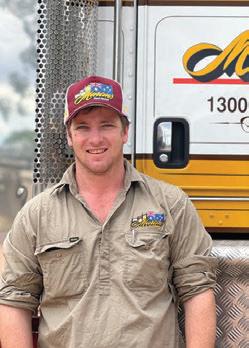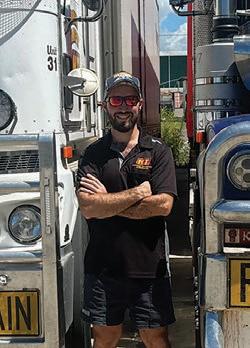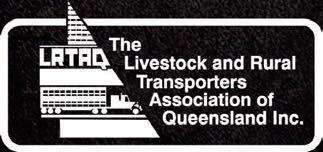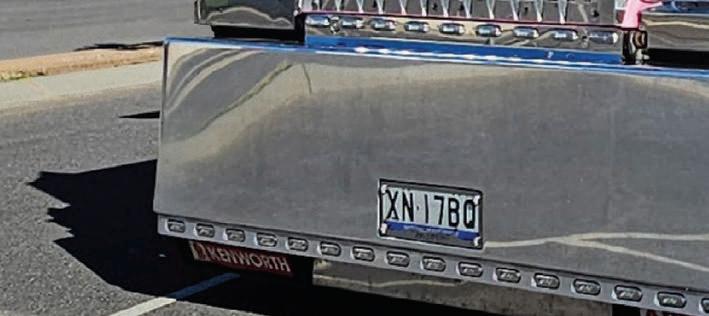


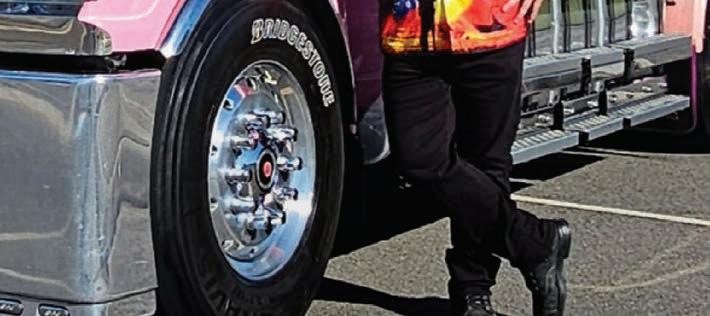

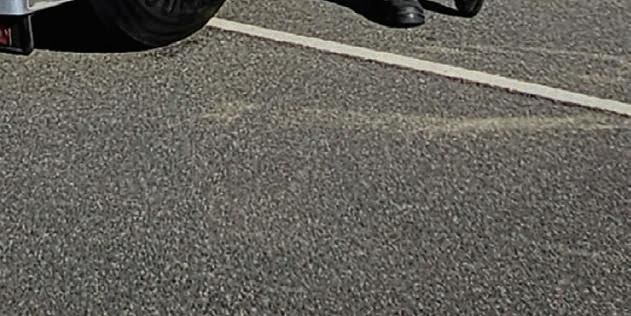
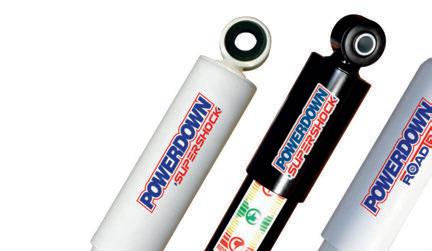



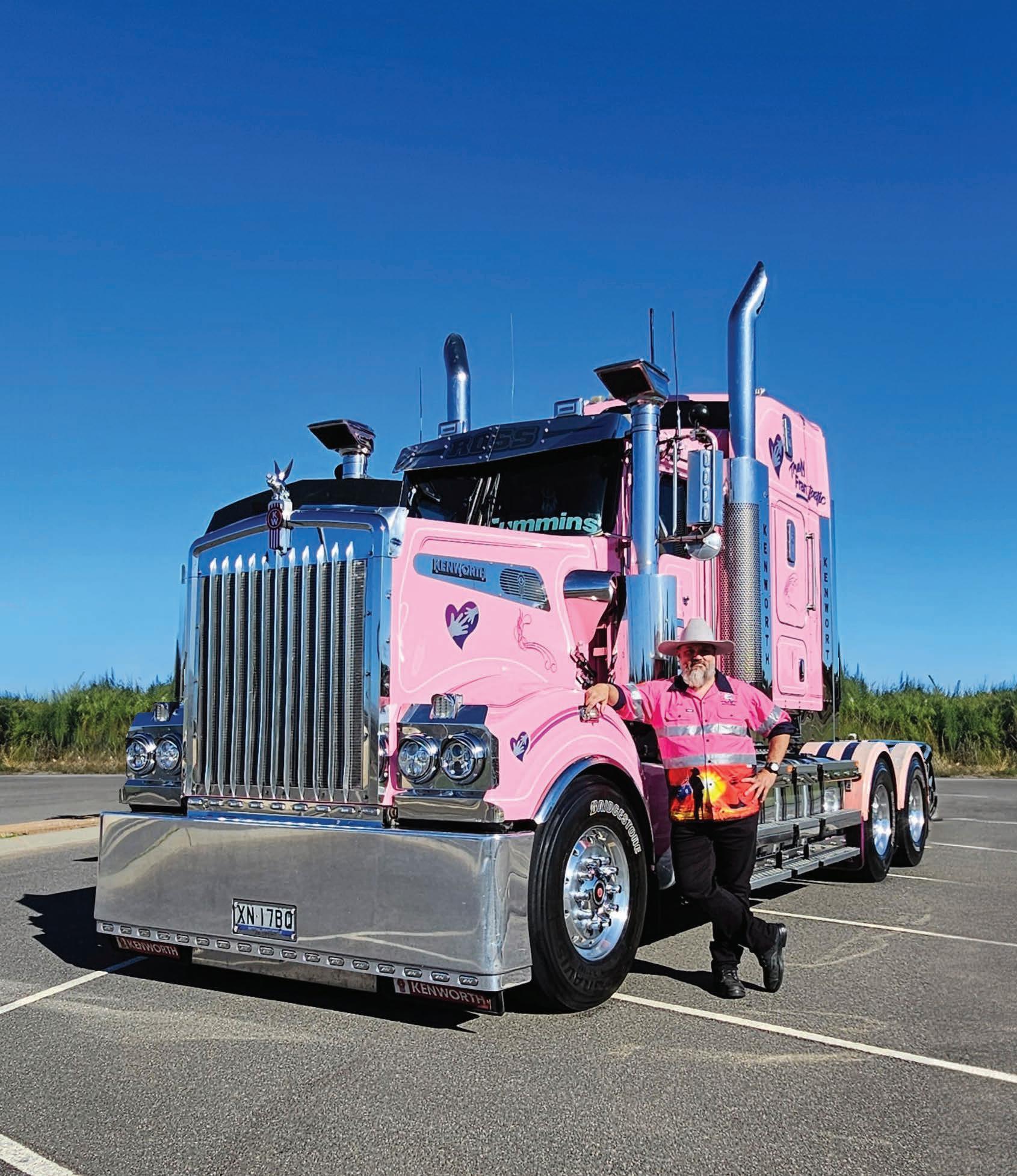



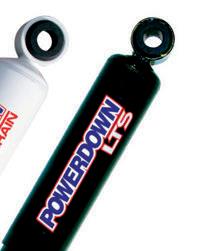



Address:
Phone:
Email:
Accounts:
Subscriptions:
Classifieds:
EDITOR James Graham: 0478 546 462




















Address:
Phone:
Email:
Accounts:
Subscriptions:
Classifieds:
EDITOR James Graham: 0478 546 462


BRAVE widow Delphine Mugridge is determined to stay the course on her pledge to see more stringent pathways to securing a truck licence.
Delphine, whose husband Slim, 77, was killed along with two other truck drivers in a head-on crash on the Eyre Highway on April 4, doesn’t want to see anyone else go through the same heartache.
BUSINESS
She’s started an online petition at Change.org – ‘Stop the issuing of heavy vehicle licences outside the given time frames’ – where she outlines her views on what the mini-
mum requirements should be for each truck licence.
At deadline for this issue the petition already had 13,367 signatories.
“I’m aiming for 20,000 so they’d have to sit up and take notice,” said Delphine, who has already written to the Prime Minister Anthony Albanese, SA Premier Peter Malinauskas, and the NHVR, among several other transport o cials.
“ e ideal thing would be to do a traineeship or an apprenticeship over four years in which they drive a certain distance locally for the rst 12 months, do a changeover for
the second year, and then do a long-haul for the third year, while also being well and truly up with all the things that go with driving a truck.
“Everything, so they are not just hoping in a truck and not knowing how to reverse them.”
Delphine said she’s going for ght for the change with her “dying breath” to leave a lasting legacy for Slim.
“It’s very hard – I’ve lost the love of my life and I’d hate anyone else to go through this because of lack of experience.
“A huge number of drivers are considering hanging up their boots wondering who
will be next to die.”
Here’s a summary of the pathway Delphine would like to see:
1. Newcomers must have held a car licence o “P” plates for 12 months.
2. Hold a light rigid licence for one year.
3. For a medium rigid, must have held a class “C” for at least one year.
4. For heavy rigid must have held a class “C” for at least two years or class LR or MR for at least one year.
5. To gain a heavy combination must have held a class MR or HR at least one year

6. For multi combination must have held a class HR or HC for at least one year.
TRUCKIE Andrew Lattin has had a gutful of dangerous driving.
The veteran interstate driver, and one of the founders of new Facebook lobby group, STOP the Carnage, Time For Truckies To Be Heard, estimates he’s averaging four or five near misses a week up.
“There’s a lot of us older guys who are just leaving,” Lattin said in a Facebook video. “The issue is lack of training and experience. How can you say
that a guy who has done his MC licence in two days has got enough experience to run across the west, or up the Newell Highway? This industry is lost because we’re not training guys properly.”
Lattin has started an email campaign encouraging truckies to take the letter he’s pre-written for them below that they can send straight to their local state and federal MPs.
“We can then start hammering these politicians and we’re
going to start getting heard.”
UNITED WE STAND, DIVIDED WE FALL.
Dear honourable members I am writing to you as a concerned member of the public in relation to:
1: the current licensing requirements for the transport industry
2: the current training requirements for the transport industry
3: the current training for all vehicle licensing both domestic and commercial 4: the state of our roads
The recent carnage on our roads which resulted in a triple fatality has resulted in this letter being sent to you in my hope that an inquiry and subsequent change with all relevant states, territories and stakeholders will be successful through your leadership to: Bring all the states and territories under one framework for licensing and requirements including a review of training providers, on-the-job training review and implementation of
modules to ensure a safe work environment. An urgent review of the national road network to identify and upgrade roads to ensure a safe workplace is provided for our transport sector. Untrained drivers coupled with unsafe roads are resulting in an unsafe work environment for our men and women who move our country. I look forward to hearing from you regarding this as we all rely on a truckie (even you), every day.

The OEX 200W High Bay Workshop Light is a simple plug in replacement for halogen or hallide highbay lights. It delivers energy efficient, crisp white LED lighting to the workshop while reducing energy consumption and lowering your electricity bill.
Features:
• 28,700 Lumens output
• Two brightness settings
• Plugs in to standard 240V sockets
• Water resistant IP65 rating
• 2 year warranty




AUSTROADS has said it is considering changes to the licensing system for truck drivers who come to Australia from overseas.
ese changes could include limiting what kind of heavy vehicles can be driven on an overseas licence and introducing a “recognised country” scheme for truck licences.
As it stands, drivers who come to Australia from overseas can drive the same class of heavy vehicle that they can drive in their home country, for a certain period of time.
is timeframe varies across the di erent states and territories, with some requiring you to get an Australian licence once you are living in that
jurisdiction for three months, and others allowing you to drive on an overseas licence for six months or longer.
However, all states and territories have agreed to move to a maximum six-month allowance for driving a truck on an overseas license.
Judy Oswin, a consultant who has been working with Austroads regarding heavy vehicle reform, told Big Rigs:
“ e states and territories have agreed to a six-month limit in principle, so the next stage is talking about when everyone will have to have it in place.
“It will require a legislative change for some jurisdictions, so that adds to the implementation timeframe.”
If you’re transferring from an overseas heavy vehicle licence
to an Australian heavy vehicle licence, there are some di erences between the states and territories in terms of what licence class you are eligible to transfer to.
Oswin explained: “Say, for example, you’ve got a HR licence from overseas.
“Some states and territories will allow you to enroll in training and assessment to get an Australian HR licence straight away.
“Others will want to know more about you and your experience, and you might have to put in an application to avoid having to start on your car licence and work your way up.”
Oswin said that if you want to apply for an Australian HC or MC licence on an over-


seas licence, it gets more complicated.
“ ere are variations in eligibility, as to what class of heavy vehicle licence you can get in Australia,” she said.
“When you think about the wide variety of MC combinations in Australia – almost no other countries have an equivalent to what would be an Australian MC licence.
“Some jurisdictions will only allow you to go up to a rigid licence without putting in an application.”
Oswin acknowledged that the licensing inconsistencies between the states and territories are an issue.
“ e jurisdictional di erences are not ideal, but that’s what happens in a federated state.
“We are now in the process of working with all of the jurisdictions to see if we can get a consistent, harmonised approach to that eligibility part of licensing.”
Above all, she wanted to clarify that you cannot simply walk into a transport department o ce with an overseas truck licence and transfer it to an Australian licence.
“You can get caught up in
the administrative side of things, but the most important point is that if I want to transfer from an overseas licence to an Australian licence, I go through the same process as I would go through if I was applying for that licence class as an Australian,” she said.
At the ATA’s annual conference in Canberra last month, Oswin discussed the possibility of introducing a “recognised country” scheme for heavy vehicle drivers.
Currently, Australia has a recognised country system for light vehicles only. ese countries (for example the UK, Canada) are considered to have similar licence training and assessment standards to Australia.
Licence holders from those countries are allowed to transfer their licence to an equivalent class (car or motorbike only) of Australian licence without further testing.
To become a recognised country for heavy vehicle licensing purposes, the country in question would have to make an o cial application to Australia and have their licensing requirements assessed.
“Under those circumstanc-









es, we could potentially look at a less rigorous process for the transfer of overseas licenses from recognised countries, compared to non-recognised countries,” Oswin said.
“Some very stringent requirements about what you can drive on an overseas license may also be put in place.
“Jurisdictions are currently discussing these potential changes, and once there are outputs from these discussions, there will be an industry survey and targeted industry consultation, before nalisation and implementation.”



Ryco’s comprehensive range of commercial filters, covers all makes and models across North Amercian, European and Japanese truck applications.

Ryco filters are designed to meet or exceed the original equipment specifications and maintain the factory warranty.

So, when you need to get the job done, be Ryco Ready










 KAYLA WALSH
KAYLA WALSH
A YOUNG truckie who got his HR licence last year has claimed that the driving school he went to passed him despite saying he “should have failed”.
e driver also said the examiners at the registered training organisation, which is in Victoria, gave hints to other learners sitting the theory test.
“I was shocked because I had studied for my theory test, and when I showed up, I was the only person there who knew the answers,” he said.
“ e others were constantly asking for help and the examiner would hint the answers.
“But they still didn’t get it, so they would ask me – which one is it, is it b or c?”
e truckie, who has been kept anonymous for legal reasons, said he is a safe driver, but something went wrong with the truck during his practical test.
“When I did my driving test, they had to record it. I nished and asked if I passed.
“ e examiner said no, because when I went into the slip lane, I had the indicator on, but the indicator slipped back up on its own.
“ ere might have been other reasons too but I’m not sure.
“ e examiner said I would have failed, but that he was just going to pass me anyway because it’s not pro table to fail people.”
e truckie said the school in question tries to give licenses to as many students as possible.
“ ey are trying to pack as many people as they can in there every day,” he said.
After he got his HR licence, he did some tipper work for a while.
He hopes to go for his HC licence in the next month but will be going to a di erent driving school.
Although he’s still going to upgrade his licence, he is now feeling anxious about his choice of career.
“I don’t want to die young,” he said.
“I have a job lined up to do interstate runs from Melbourne to Perth, but I’m scared.
“I’ve already paid for my HC and I think it’s too late to get a refund, but I’m starting to regret it.”
He thinks something urgently needs to be done about the licensing system.
“I’m so pissed at the state and federal government for making it this easy to get a truck licence,” he said.
A spokesperson for


VicRoads also told Big Rigs that anyone with concerns about a training provider can report them to VicRoads on 131171 or via the VicRoads website.
ey added: “Victorian heavy vehicle training and test providers are regularly audited and must abide by strict rules and regulations as part of their accreditation.”
e NHVR’s Heavy Vehicle Con dential Reporting Line (HVCRL) is another way for anyone involved in the heavy vehicle industry to report safety issues relating to procedures, practices or conditions that might endanger the safety of a heavy vehicle driver, their passengers, other road users or the community.
ese reports can be made con dentially on 1800 931 785 between 7am and 4.30pm.
A spokesperson for the regulator said: “Reports relating to heavy vehicle driving schools would be captured


under issues relating to business practices and are assessed by our team and actioned appropriately.
“Where information falls outside the NHVR’s remit, we work closely with our jurisdictional partners to ensure all risks are communicated appropriately.
“ e NHVR encourages the heavy vehicle industry to contact the HVCRL where they believe a practice is occurring that may have an adverse safety outcome.”
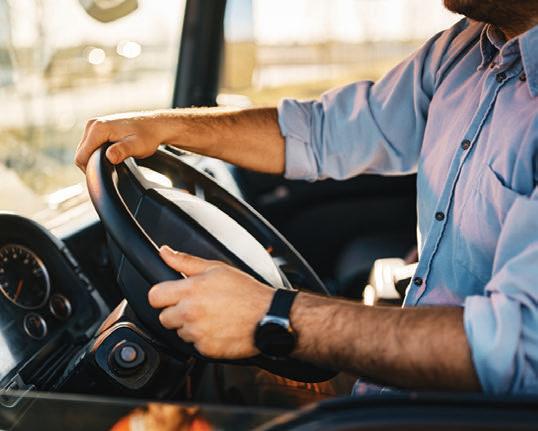













PROMINENT transport operator Ron Finemore has said that other eet owners need to step up to help address the serious truck driver shortage in Australia.
Finemore, who founded Ron Finemore Transport in 2004, said the road transport industry is in “intensive care” and operators need to work with the government, regulators and other transport bodies to save it.
“I had a couple of phone calls last week from other operators,” Finemore said at the Australian Trucking Association’s annual conference, Trucking Australia 2024, in response to a presentation given by Austroads about licensing reforms.
“ ey said ‘ e bloody NHVR is hopeless’ and asked me what I am going to do about truck licensing.
“I said, ‘Well what are you bloody doing about it?’”
Finemore owns a eet of 290 trucks, operating in and out of the Albury-Wodonga region along the east coast of Australia, and the driver shortage has seriously a ected his business. He told the Canberra conference that he is 100 drivers
short of what he needs, and said most operators he knows are also struggling to hire enough drivers.
e proposed Austroads reforms include standardising truck driver training and testing across the states and territories, introducing a “recognised country” scheme for heavy vehicles, and changing the rules around upgrading licence classes so drivers can progress to the next licence class in a shorter time frame, if they can demonstrate enough driving experience.
Finemore said these are all good ideas, but they are going to take too long to implement.
“We’ve been talking about these things for a long time, and we’re not getting progression,” he said.
“ e issue of the shortage of drivers is getting worse, and the quality of the drivers is getting worse.”
Finemore said that he employs 355 drivers from the Indian subcontinent, who have helped with his driver shortage problem.
“It’s a big number,” he said. “Some of them have been with us over 10 years, and the large majority are very good people.
“ ey are no di erent from anybody else. ey want to work, they want to earn a living.”
He operates a buddy driver training program and ensures that all of his employees understand Australian safety standards.
“We ensure they have an Australian licence. ey don’t work for us unless they have that.
“We have buddy drivers that get paid a high level of money to take them with them, and they sign o on them. So they are taking responsibility.
“We try to teach them the safety culture that we have in our company.”
He said he sees opportunities for pilot schemes, for both younger drivers and overseas drivers.
“I think there’s an opportunity to get a state to do it, and you could restrict it to accredited companies.
“You can hold those companies responsible for who we employ and how we do it.
“I’m sure there’s plenty of people that would like to do that. We’ve really got to help.
“We need a short-term, medium-term and long-term situation, or else we’re going to be in real trouble and the safety issues are just going to get worse.”
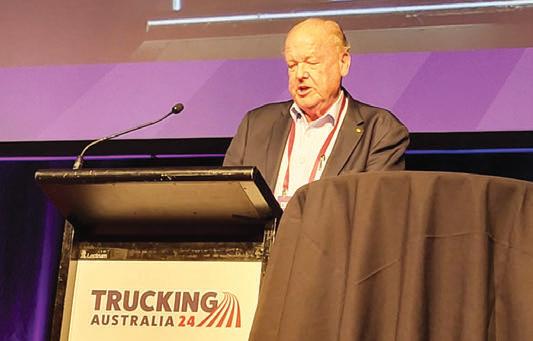
SYDNEY
510 Victoria Street, Wetherill Park NSW 2164 Ph. 02 9756 6199, email: isri@isri.com.au, www.isri.com.au
BRISBANE
AUSTROADS is working on a pilot scheme to get more young drivers into the trucking industry, while making sure they have the level of training needed to keep themselves and others safe on the roads.
Speaking at the ATA’s annual conference in Canberra, Austroads consultant Judy Oswin said that driver inexperience is a major risk factor for crashes.
“According to data compiled by the Monash University Accident Research Centre, there is a 45 per cent to 90 per cent higher risk of being involved in a heavy vehicle crash when a driver has progressed quickly through the different licence classes,” she said.
“They have got a heavy vehicle licence while still on a provisional or probational licence, or they have progressed very rapidly through the system, particularly if they didn’t spend two years on a car licence.”
Paul Davies, general manager of programs for Austroads, said that they want to facilitate more young people becoming truck drivers, while managing the risks that come with inexperience.
“We recognise that for young drivers, pathway to the indus-

try is a challenge,” he said.
“We expect to work closely with industry and jurisdictions to be able to bring a pilot forward. That could possibly serve as a model for licencing, going forward.”
Oswin said there would be a lot of work involved in designing these pilot programs.
“We want to look at the regulatory issues that would be involved in that, and then engage with employers about the kinds of things that they think might work. There’s a fair bit of work in designing the programs and then, importantly, we will need to evaluate those programs.
Oswin said it could up to 10 years before they know it’s worked.


3/120 Gardens Drive, Willawong QLD 4110 Ph. 07 3275 2044, email: sales@isribrisbane.com.au, www.isribrisbane.com.au
MELBOURNE
Unit 1/569 Somerville Rd, Sunshine West VIC, 3020 Ph. 03 9311 5544, email: sales@isrisunshine.com.au, www.isri.com.au
MACKAY , Ph. 07 4952 1844, email: admin@isrimky.com.au, www.isriseatsmackay.com.au
PERTH R , WA 6106
Ph. 08 9362 6800, email: info@mmtisri.com.au, www.mmtisri.com.au
DARWIN
Mobile Sales and Service
Ph. 08 8927 0986, email: info@isridarwin.com.au, www.isridarwin.com.au
ADELAIDE
TAMDELE, 21 Hakkinen Road, Wingfield SA 5013
Ph. 08 8347 1222, email: sales@gitsham.com.au, www.gitsham.com.au
NEWCASTLE/HUNTER VALLEY
Unit 2/13 Hinkler Ave, Rutherford NSW 2320
Ph 02 4932 0600, email: sales@hvss.com.au www.isri.com.au




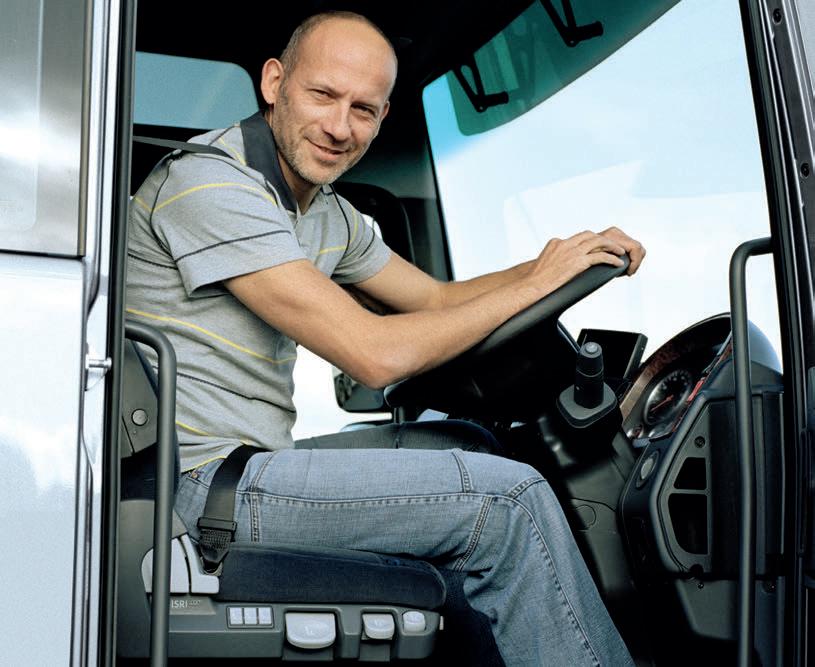











DECLINING professional standards and a broken driver licencing and training system are contributing to the dangers truck drivers face out on the road on a daily basis, says Western Roads Federation (WRF) CEO Cam Dumesny.
He says WRF is routinely elding calls from truck drivers on the east to west route who don’t want to do it anymore because it’s just too dangerous.
“ e real concern from drivers is that it’s just becoming far too high risk. ere’s a de nite decline in professionalism in the industry, there’s a decline in on-road courtesy to each other, and we’ve got to address the driver licencing and training system. It’s just not acceptable,” Dumesny said.
“ ere are real concerns about the licensing standards occurring in some of the jurisdictions. At the end of the day, you can have the best trained driver in the world, but it’s the drivers coming at them that need to be trained to that same high standard. Truck drivers need to be sure that other drivers coming at them are competent, well-trained drivers.
“We also need to address international drivers, regardless of where in the world they come from, and that needs to be a national priority – not tomorrow but today.”
Following the Eyre Highway crash on April 4, in which three truck drivers tragically

lost their lives, WRF chaired a meeting where it detailed a heavy vehicle safety plan, with a number of steps aimed at improving safety for truck drivers and other road users.
“When the road accident on the Eyre Highway occurred during the rail outage, we had a number of drivers from the east coast on that route who had never driven it. ere were drivers out there who were illequipped, badly prepared and inexperienced. You shouldn’t be able to suddenly go from shuttle runs from Melbourne to Ballarat, to driving a road train to Perth or Darwin.
“We have a problem in this industry. Fundamentally, everyone knows we have a problem – the regulatory authorities, emergency services, local governments. at impacts us because it means we might
start getting restricted access on routes. We’re going to pay a price in lost access, a price in increased insurance premiums, and above all a moral price if we don’t pay respect to those drivers killed on our roads by getting serious and xing these issues.”
So where do we start?
“A journey of a thousand miles starts with a single step,” Dumesny said. “I think as an industry we need to step up and create a plan about how we can work with other road user groups, cyclists, caravanners and car drivers to improve road safety. Let’s be the bigger people in the room and lead the charge.”
Included in WRF’s heavy vehicle safety plan are a national four-week road safety blitz and a taskforce that would investigate licencing in the event

of a fatal crash.
e national road safety blitz being proposed would be undertaken in conjunction with each of the state’s road authorities, looking at speed, fatigue, drug use and driver behaviour.
ough Dumesny admits such a move wouldn’t be popular among everybody, he conceded that it’s something that really needs to be done.
“We can’t keep turning a blind eye. e last time something like this was done was probably about 10 years ago. What we’re saying is that we need to reinstate that. We need to get all relevant authorities and regulators out there. ey also need to be checking licencing and a truck’s suitability for the job at hand. We’ve had trucks running out to Darwin with no air conditioning – that’s an OH&S issue. ere are also all
these reports of people driving three-up, so we need to be checking that the legal number of people are in the truck.”
And in the event of a fatal crash, WRF wants to see a thorough investigation taking place that determines when and where the heavy vehicle driver obtained their licence to identify any common trends.
“We need to have condence with heavy vehicle driver training and licencing and be con dent that RTOs (registered training organisations) are complying to standards,” Dumesny added.
“It all comes back to basics.
No matter how good a driver you are, you need to have condence that the person coming at you is equally as good and well trained. And this goes for all road users.
“Nationally the road toll is up
signi cantly. ere seems to be an underlying anger, frustration and sense of entitlement amongst all road users – whether it be caravanners, cyclists or car drivers – but we’ve got to have some respect for each other, and that seems to have dissipated. at’s amongst our own drivers too, where a small minority think they’re the only ones who have a right to be on the road.
“ at’s why we need to work with other industries and be the bigger person on the road. It’s time that we as an industry step up and lead that conversation nationally. Other road user groups have issues, but we need to accept that we have issues too. Truck drivers are being killed – and we as an industry don’t pay respect to them and their families if we don’t x this problem.”
PAUL Davies, general manager of programs with Austroads, has said there are plans in motion to introduce a new module focusing on “attitude and approach to driving” as part of truck driver training courses nationwide.
The proposal is part of a review of the National Heavy Vehicle Driver Competency Framework.
Speaking at the ATA’s national conference in Canberra on April 18, Davies said Austroads had commissioned the Monash University Accident Research Centre to investigate the links between licensing and crash risks.
“We found that training programmes which addressed the attitudinal and approach to driving had potential benefits to improve safety,” he said.
Judy Oswin, a consultant
who has been working with Austroads on heavy vehicle reform, added the new module is about making sure that drivers understand that the way they approach their driving has a big impact on road safety.
“We will be looking at how we introduce that module – we are not quite sure about the best mechanism to do that,” she said.
“But it will be a key part of what’s being rolled out, and
we’ve got good jurisdictional support for that.”
Transport operator Ron Finemore also commented on this issue, as part of a session on “Fixing Truck Driver Licensing” at the ATA conference.
“You can test for driver attitudes, but you can’t predict how different people are going to react to different environments,” he said.
“One of the things we find is that when you look at drivers
who have incidents, they might have never had an issue before, but then suddenly something has happened in their family and it’s affected them.
“And then there’s some people who just don’t care, and you’ve got to make sure they move on.
“The issue is when they move on to someone else on the same day, and they’re on the road alongside my family and your family.”










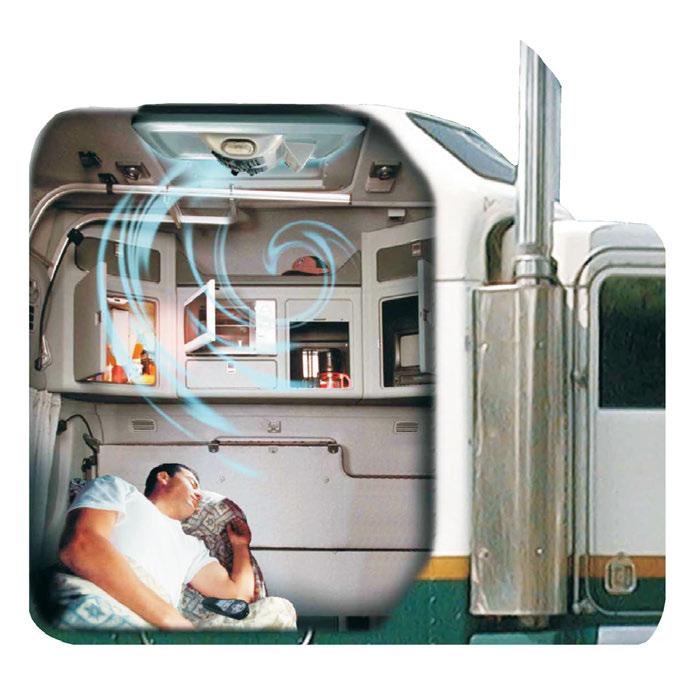












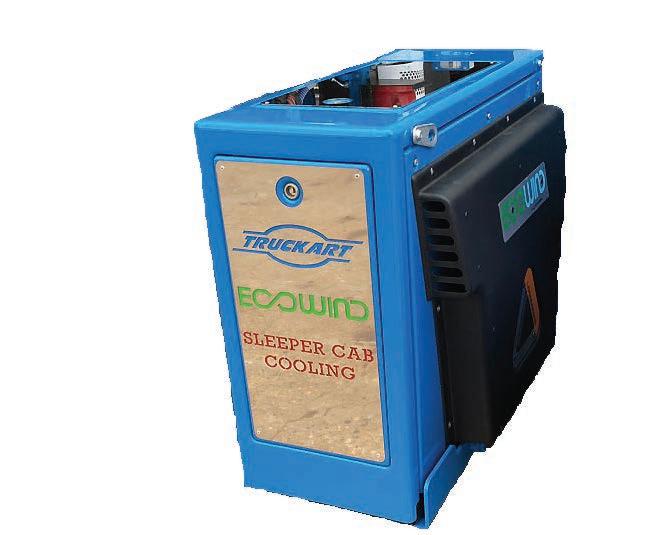

 EDITOR
JAMES GRAHAM
EDITOR
JAMES GRAHAM
CHANGES to licensing pathways: it’s the hottest topic in trucking, but what’s the bet that we’ll still be talking about this issue in a couple of years?
Sadly, it’s all come to a head again due to the triple fatality on the Eyre Highway on April 4, even though this issue has been around for many years.
We already have a new industry-endorsed training framework from Austroads, the transport agency problem-solver, and still we can’t seem to get it right.
Is it because the driver shortage is forcing the various jurisdictions to ignore the systemic failures in the current system in order to keep the freight moving, and the tragic loss of drivers along the way deemed nothing more than collateral damage?
It’s starting to feel that way. Maybe we need 60 Minutes to get hold of the story about how easy it is to go from driving a small truck to a road train in just 12 months? Maybe then the politicians would stop sitting on their hands and take action.


‘The
I AM sending this to you since another three truck drivers were killed on my regular route on the Eyre highway, Yalata, SA, on April 4.
I would say that a lot of drivers in the trucking industry are one of the following:
1. Feel totally unheard by most authorities and politicians.
2. Angry, upset and frustrated with no options but to leave the industry.
3. A minority are oblivious to the dangers and incidents happen.
In the past month I have seen the country go through a lot of road closures for natural events such as re and ood but due to numerous incidents owing through the chain such as the east-west rail being unusable for multiple weeks and then ooding in north WA/NT caused the temporary permitting of 53.5m triple road trains on the Eyre Highway to redirect them to Perth increasing the normal tra c across ‘ e Paddock’ 10-fold.
Right in the middle of all of this, there was a bike race, once o cially cancelled, from Fremantle Perth to Sydney


needs to know what’s going on out here’

with bike riders hit along Eyre Highway in two separate incidents six hours and 600km apart, forcing the closure of the highway from Norseman, WA, to Eucla WA/SA border for 15 hours.
Every closure and every delay puts pressure on freight companies with two-up drivers in trucks, which essentially run 24/7.
e added pressure means some drivers will not take the necessary breaks and precautions with a massive decrease in
driver mental health and awareness putting everyone at risk.
I think the reason there is a need for two-up driving should be brought into question as I have done two-up driving before and only one driver really has the opportunity to get quality sleep, taking into account the ability to block sunlight to sleeping quarters, quality of the roads and suspension (bouncing), being woken by other driver when fuelling or stopping, woken by road enforcement o -




cers and e ciency of climate control of truck.
Another issue I nd disturbing is the licensing structure across the board.
Did you know that a 19-yearold can simply spend two days training in a HR, pass the test (which isn’t hard) then simply hold that licence (without actually driving a rigid truck) for one year and come back, spend two days trying in a B-double and pass the test (slightly harder depending on the trainer) and next day at
20- or 21-years-old be driving a triple road train grossing 120 tonnes on a highway, or even a quad train with 160 tonnes or more, or even a 200-plus tonnes, eight-metre wide platform trailer.
When is enough enough?
I think the general public and consumers need to know what is going on out here.
People with kids and grandchildren, etc, are being killed because we, as the consumer, want everything in our hands NOW.

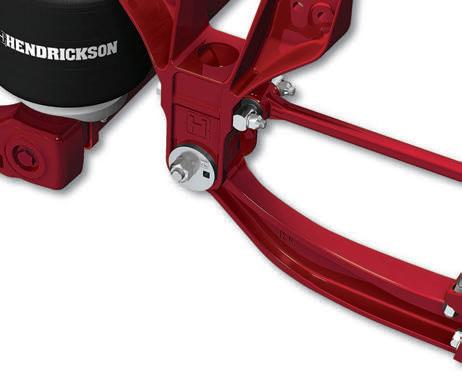
If the guys who transport the bananas from North Queensland to Perth don’t need to run two-up, why do other mobs that don’t even have perishables?
Perhaps a permit system where only a truck with perishable (fridge/freezers) can run two-up. NO FREIGHT IS WORTH DYING FOR!
I have three kids and a wife at home waiting for me. I am away on the road regularly for two weeks, or longer, up to ve weeks, trying to give them a better life than we had but the way roads and drivers are out here lately I’m starting to question whether I’ll be still out here for much longer.
I know many old timers who have already pulled the pin and retired.
How’s the economy going to cope when the transport costs associated with all goods sky-rocket because drivers leave in droves?
Or, are we all happy to see predominantly foreign nationals driving road trains, etc, towards us and hope they have adapted to our roads and style of driving?
Nicholas Hales
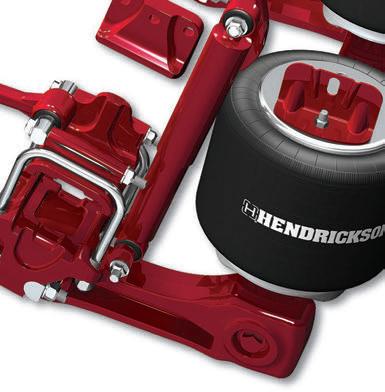

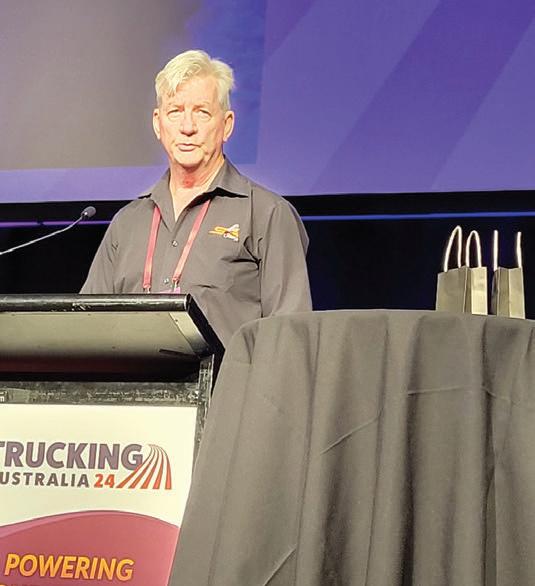 BY KAYLA WALSH
BY KAYLA WALSH
AUSTROADS is pushing for changes to the current licensing system, which can often see drivers “sitting on the couch for a year” while waiting to upgrade their truck licence.
Paul Davies, general manager of programs with Austroads, said during the annual ATA conference in Canberra last month that holding a licence for a certain length of time isn’t an indicator that you are a more competent driver.
“ e current tenure model, whereby you wait 12 months before you’re eligible to get to the next licence, doesn’t contribute to building experience,” he said.
“As someone put it to me very neatly, sitting on the couch for a year doesn’t make you ready for the next vehicle.”


Austroads wants to bring in experience-based licence progression options, while allowing those who meet the tenure-based rules to upgrade their licence even if they haven’t gained experience during that time.
“ ere are circumstances where a person won’t be able to get a lot of experience,”
Davies said. “So we’re proposing to retain that 12-month rule, but in addition to that, to bring in experience-based pathways that recognise that time behind the wheel matters.
“So if you spend time driving in a particular class of heavy vehicle, so don’t need to wait 12 months before you go ahead to the next class of heavy vehicle.”
ese proposed changes are part of a review of the National Heavy Vehicle Driver Competency Framework. e framework was origi-
LONG-TIME MC truck driver Corrina Riley is now turning her hand to driver training, in the hope of helping to bridge a skills gap that’s becoming more and more prevalent on the highways.
It’s not the first time Riley has used her experience on the road to train others, on several occasions, she’s taken other drivers under her wing, allowing them to join her on long distance two-up runs to help further their skills.
Based in Brisbane, she says the move into driver training hasn’t come out of the blue. It’s something she’s been passionate about for a long time.
She was able to take that to the next step when a friend named Joanne Cartwright, who owns a business called Town and Country, gave her the opportunity to utilise her fleet of trucks.
“A lot of truck drivers stress about other drivers when they’re out on the road. There are car drivers who don’t know how to properly share the road with trucks, and truck drivers who haven’t received enough training,” said Riley, who plans to offer training from cars through to heavy combination trucks.
“The issue is that some of these truck drivers just haven’t received the proper training – instead they’re signed off –
tick and flick. If we can train people to share the road properly from the beginning, when they first get their car licence, it makes it better for everyone on the road.”
Riley believes more targeted training is needed for drivers before moving up to bigger truck combinations with more trailers. “There’s just not enough time taken to train new drivers. You can’t learn everything you need for your MC licence in two days. I think training should be spread over multiple weeks or make it that drivers need to complete 100 or more hours of training, like what they have to do to get their car licence,” she said.

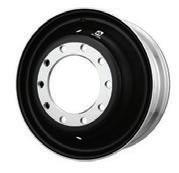

According to Riley, upgrading from a HC to MC licence in two days is simply unacceptable. “And one of those days is spent in the classroom, so you’re only getting five to six hours in the truck, then you’re sent out on the highway. “I think you should have to have your HR for 12 months, then your HC for 12 months, before being able to upgrade to your MC, to give you a bit of experience on the road before adding on another trailer. I know there are a lot of people who won’t like that and it’s a lot of money but you’d prefer to have experience on the road than drivers who’ve just paid the few hundred bucks to upgrade their licence.”
nally approved by transport ministers ten years ago, and a review was initiated in 2016.
A revised package nally went to ministers in December 2023, and they havenally approved the changes proposed – but it is a slow process.
Steve Shearer, the executive o cer of the South Australian Road Transport Association (SARTA), said politicians don’t understand the reality of the broken licensing system, and it’s important to speak out about how it’s a ecting the industry.
He said: “ ey think you have to hold a HR licence for a year before you can get a HC, or you hold a HR for two years before you can go for a MC, and that will x everything.
“We know that that’s actually part of the current problem.
“Holding a licence without
having to get any experience doesn’t achieve a damn thing.”
He said that government o cials are “afraid” to tackle the real issues in the trucking industry.
“We are bleeding drivers from the industry, they are sick of the risks that they’re exposed to increasingly.
“We have to push and cajole the government into really working with us on a successful x for getting people from overseas – I don’t care what country they’re from – and making sure that they and every sixth-generation Australian truck driver has the right safety, culture, and attitude to drive professionally in our country.
“If we don’t push that hard, we will end up with a package from government that looks nice, smells nice, it’s packaged nice, but does Jack as far as solving the problem.”

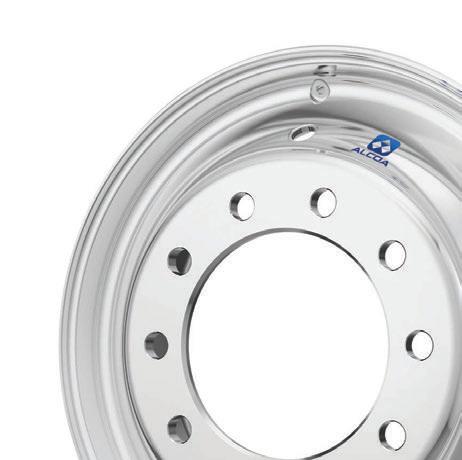







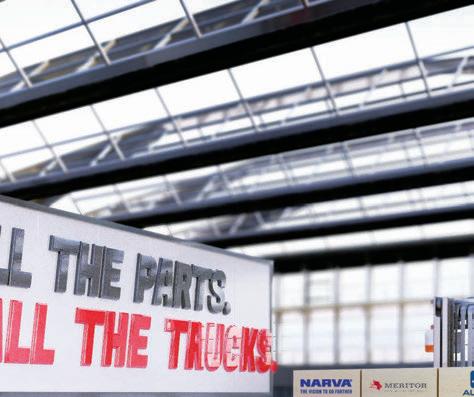











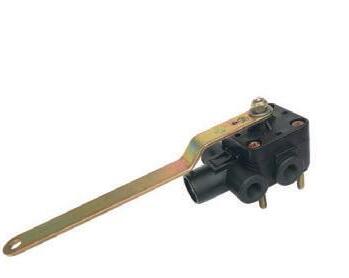

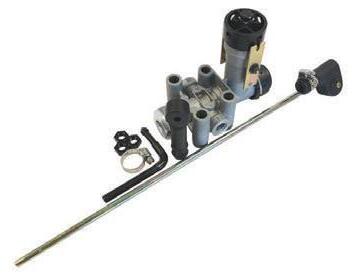
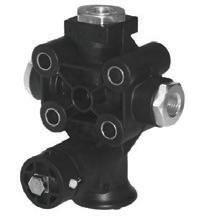


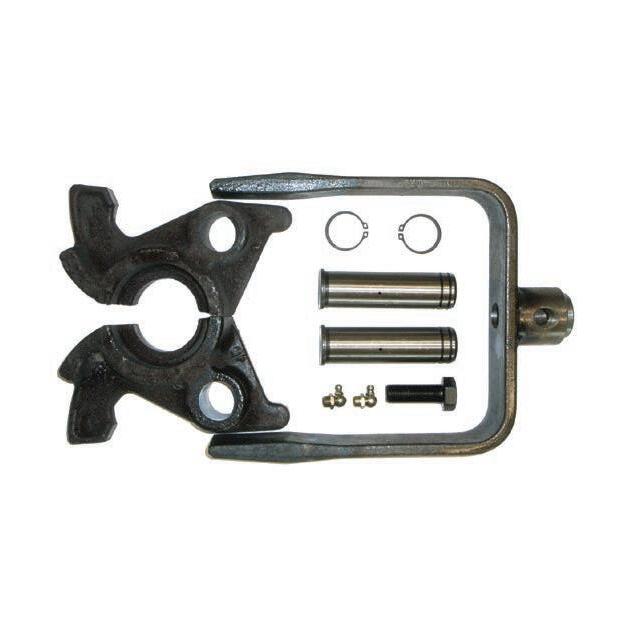



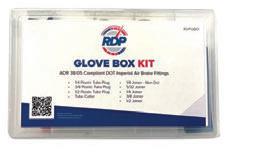




JOSHUA Ulbrich caught the transport bug early. Growing up in Milton along the south coast of NSW, he loved nothing more than watching trucks loading and unloading livestock at the nearby saleyards.
“When I was ve years old, my mother got a knock at the door one day and one of the drivers was standing there,” Joshua recalled.
“ e driver asked where I was, and she said I was asleep in bed. He said, ‘No he’s not, he’s o in the corner of the saleyards waving to all the drivers coming in!’”
Decades later, his childhood love for trucks has translated into a great career in trucking – and he was named Professional Driver of the Year at the National Trucking Industry Awards in Canberra last month.
Joshua has been an MC interstate driver with Ross Transport for the past 10 years and is known for his meticulous presentation of the 2017 limited edition pink Kenworth T909 he drives for them.
At the ATA awards ceremony, he was also praised for exceptional discipline and professionalism, which he credits to his time in the military.
After washing trucks and working for a removals company when he was a teenager, Joshua joined the army at the age of 20.
He spent the next 14 years as a combat engineer, and was able to get his truck licences, from light rigid up to multi combination, during this time.
“For me and for many oth-

ers who have obtained their licences in the defence force, it was de nitely a great training environment,” he said.
“An example of this is my HC licence. In the military, this a ve-week course.
“During the course I had to load and unload trucks with di erent loads each time, I had to restrain and tarp them.
“At the end of my ve weeks, I had to do a driving test from Seymour in Victoria to Brisbane CBD, and then back.”
Joshua said these high standards were a fantastic start to his driving career.

“ ere was a minimum of 60 hours behind the wheel before I could go for my licence,” he said.
“ is is what I think the industry can look into to train new drivers.”
During his time with Ross Transport, Joshua has always been happy to pass on his knowledge to younger drivers, whether he’s showing them how to tarp or giving advice on paperwork.
“It gives me great pleasure to say that I’ve helped those people, both men and women, in the industry,” he added.
He thanked Alan Ross for giving him a job after he left the army, and for entrusting him to drive his pride and joy – a very special Kenworth named “Truely Frantastic” after Fran and True Ross, Alan’s mother and daughter respectively.
“ e 909 I drive is painted bright pink and was made to support the ght against cancer and recognise women in transport,” he added.
“It’s a privilege to work for Alan Ross, who is a very honest and humble person who often goes out of his way for his drivers.”
Joshua said he counts himself lucky to spend every day around the machines that captured his imagination as a child.
“Here is a kid that grew up loving trucks, and now I’m the ATA Driver of the Year,” he said.
“To say I never would have imagined this would be an understatement.
“Like any job, it does have its days.
“You wonder what it’s all for, but then you get up the next day. And I couldn’t see myself doing anything else.”
Alan Ross said it would be hard to nd a more deserving winner for Professional Driver of the Year than Joshua.
“He’s got a great attitude that’s pretty hard to nd these days,” he said. “He’s quite a tough guy with an army background, but he’s got a big heart.
“He’s always the rst to help anyone he sees broken down on the side of the road, as well as all of our employees, especially our women drivers.
“He’s known by everyone up and down the east coast, and he drives a pink truck more proudly than anyone I know.”
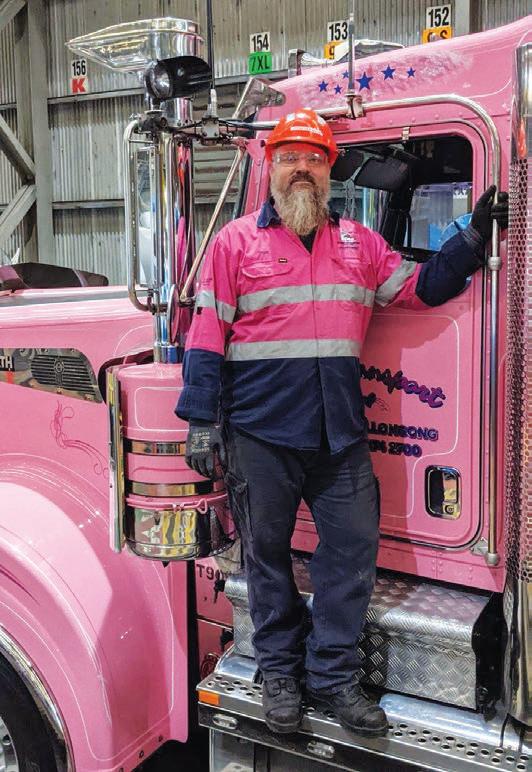

OUTSTANDING CONTRIBUTION TO THE AUSTRALIAN TRUCKING INDUSTRY

Another well-known truckie who was honoured at the ATA awards was Bill Manton, winner of the “Outstanding Contribution to the Australian Trucking Industry” accolade.
Bill is now the National Training Manager for Simon National Carriers, but his career in the trucking industry goes
back to 1982.
In that time, he has worked as a truck driver, manager and trainer, including for Volvo Group Australia.
In the 1990s, Bill participated in the ATA’s Road Safety Awareness Week campaigns, and he has supported the industry’s safety promotions ever since. Then in 2017, he
played a vital role in reviewing the Queensland TAFE system’s road tran port trainin packages, and he also worked closely with Austroads on its review of the National Heavy Vehicle Driver Competency Framework.
At the ATA awards, Bill was praised for going “above and beyond” in his efforts to improve safety
and driver training.
Bill thanked his employers and colleagues for their support, and shared some thoughts on getting young people behind the wheel.
“I do not have a problem with a 20-year-old with three trailers going to the NT, provided we do the training right,” he said. Continued on page 14
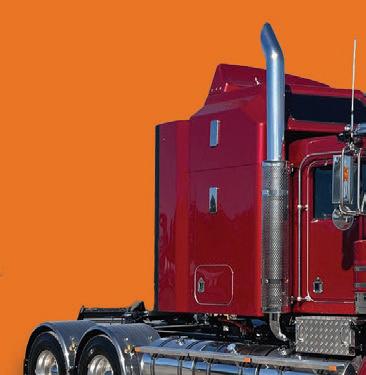


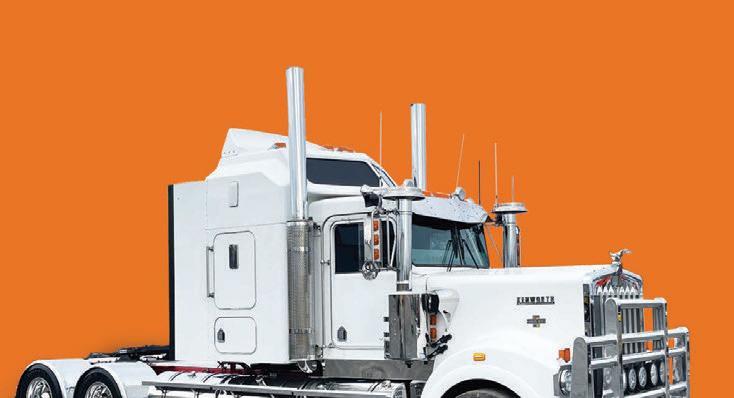
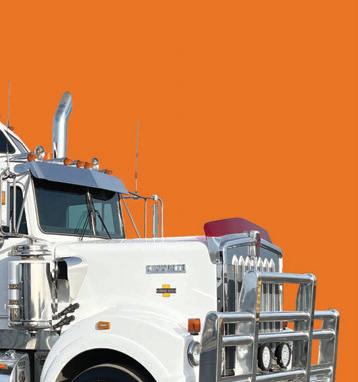




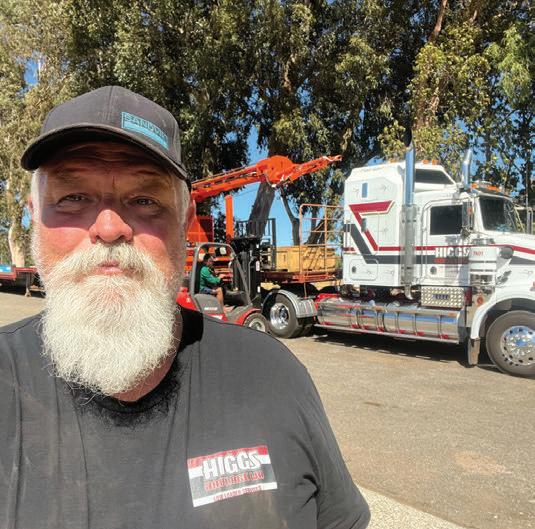
NOT every transport company gets to celebrate 35 years in business, but Higgs Haulage has gone the distance.
Neville Higgs started his business at the tender age of 20, after nishing up an apprenticeship as a truck mechanic.
He bought a White 4000 and a trailer and got to work, subcontracting for various companies around Western Australia, including Bell Freightlines and Brambles.
Over the years, his eet has grown, and he now has 10 trucks and a team of drivers – and he’s still on the road himself.
“ e eet is mostly Kenworths, but I’ve got two Western Stars,” he told Big Rigs.
“I was lucky enough to get a new SAR Legend at Christmas, so that’s what I’m driving at the moment.”
Higgs Haulage, which is based in Kenwick, WA started out doing everything from general freight to grain.
In 2007, they decided to specialise in heavy haulage low loader services, particularly underground mining equipment.
“We do a mix of local and interstate work,” he said.
“Some of the companies we work for have equipment working in mines in Queensland and NSW.”
Higgs said “passion and good luck” are the secrets to his business’s longevity.
“ e mining industry closed right down a few years ago in WA,” he said.
“A lot of companies went bankrupt and we only just scraped through by the skin of our teeth.
“We kept persevering and it’s nally come good again.”
He’s seen a lot of changes in the road transport industry since he started out.
“I started on the tail of the
good times and things are spiralling a bit now,” he said.
“ ere have been so many accidents and it’s getting really dangerous.”
Higgs thinks the onus lies on the government to improve licensing and safety on the roads.
“When I got my licence, you had to go to the Department of Transport, be trained and then pass your licence with an independent examiner.
“Now that driving schools have the right to hand out licences, I don’t think it’s being policed correctly.”
Higgs grew up around trucks, thanks to his dad’s rewood business.
“I started as a mechanic and worked with my dad, learning how to do everything from changing the motor to changing a tyre.
“ at doesn’t seem to happen as much anymore.”
His sons have chosen not to follow him into the family business, but his daughter Shania started working for him last year.
“She’s helping in the workshops, doing everything from driving the forklift to repacking the wheel bearings to loading and spotting down at
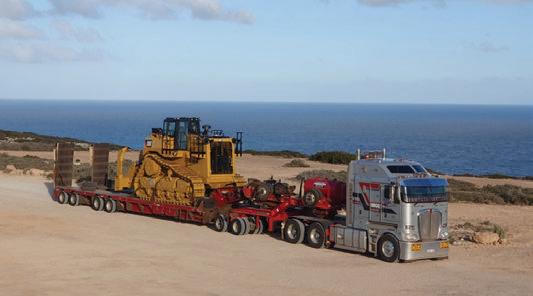

the wharf.
“ e boys weren’t interested but Shania has always been keen on cars and trucks.”
Higgs thanked all of his loyal customers for their support over the years.

“Some of our underground mining customers have been with us from day one,” he said.
“Without our customers, we would be nothing, so I just want to say thank you.”
Continued from page 12

TRUCKSAFE JOHN KELLY MEMORIAL AWARD
Marley’s Transport

Marley’s Transport started in the small country town of Nangeenan, WA back in 1969, when Frank bought his first truck before he was even old enough to drive. From those early days with one old Commer carting fertiliser from the Nangeenan railhead to farmers, Marley’s has expanded to
a fleet of 70 trucks as well as operating an intermediate warehouse facility at its modern depot at Hope Valley. Marley’s embarked on their TruckSafe journey in 1999 to improve their safety and documentation standards and say they remain committed to the safety of their team.
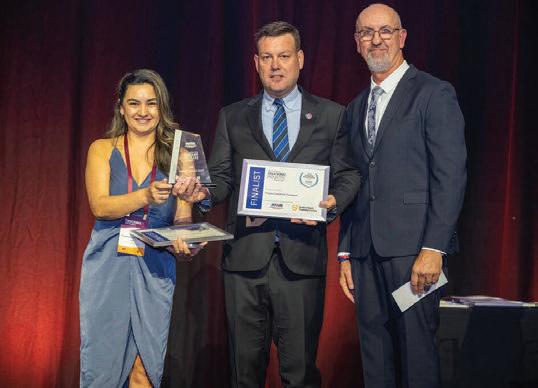
NATIONAL TRAINING EXCELLENCE AWARD


Established in 1944 by Charlie and Edna Fraser, Frasers Livestock Transport is a third-generation family business. Based in Warwick, Queensland, Frasers specialises in the transport of live cattle, sheep and pigs across the eastern seaboard of Australia and beyond. There is no Australiawide training standard for the livestock transport sector, so the company designed its own course for the industry to use. The QTA co-ordinates the course program. Since 2020, ten workshops have been held across the state for more than 200 participants.
NATIONAL TRUCKING INDUSTRY WOMAN OF THE YEAR
Jenny Fellows, Fellows Bulk Transport
Jenny Fellows is Administration Manager and co-owner of Fellows Bulk Transport. In 2006, she established the Deniliquin Driver Education Program, which is now a week-long course that teaches school students how to share the road safely and has expanded from Deniliquin to outlying schools. Jenny has more than 25 years of industry experience, which she shares as a mentor in Transport Women Australia’s mentoring program. In 2020, Jenny’s driver education program won the Australian Road Safety Foundation’s School Programs Award.
South East Queensland Hauliers was established in the 1960s and has been operating continuously since. The company works closely with its customers, in particular freight forwarders and customs brokers, to import and export shipping containers and break bulk freight. In 2023, SEQH introduced its comprehensive training program, Road Masters, which includes assessments for new drivers, upskill training, incident training and upgrading employees’ licences from HC to MC.

DON WATSON MEMORIAL AWARD

Starting out in the 1960s, Denis Robertson built an interstate refrigerated freight business. He became involved in industry associations and eventually became the President of the Long Distance Road Transport Association.
After the Grafton truck and bus crash in 1989, Denis joined the leaders of three other trucking associations to recognise the need for a national body, which became the ATA. He is still a member of the ATA’s General Council and its Industry Technical Council.


The UD Quon may be our greatest modern achievement.
From its 2004 introduction with the world’s rst ‘Selective Catalytic Reduction System’. To its reinvigoration in 2017, with Euro 6 compliant technology. To today, with the reimagined Enhanced Quon, that continues to break boundaries with greater safety, productivity, comfort and sustainability. We continue to go the Extra Mile to ensure our agship Quon is better for business, better for people, and better for the planet. There’s a reason the UD Quon is the truck Australia trusts.
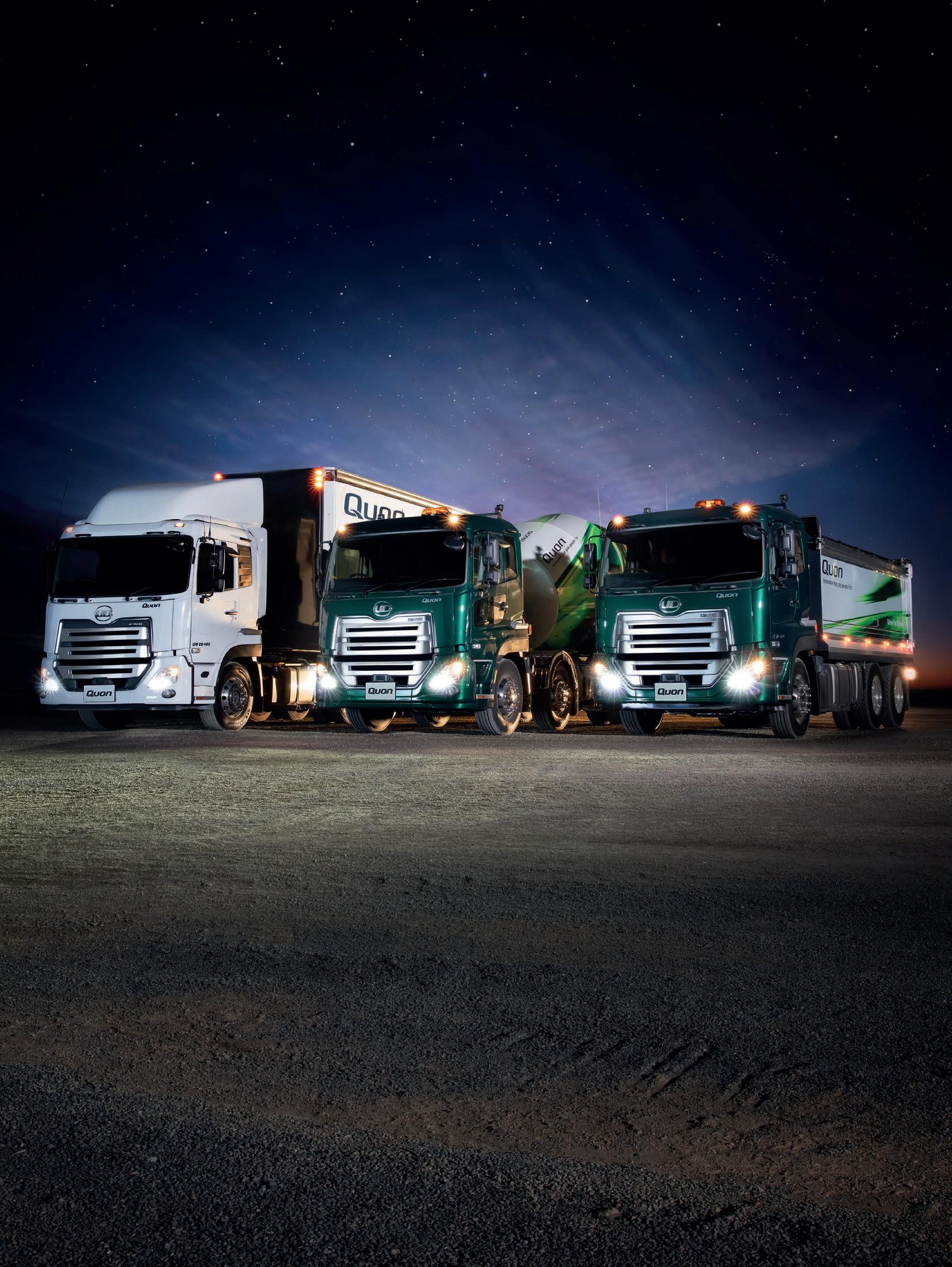
Going the Extra Mile
To nd out more, contact your UD Trucks dealer on 1300 BUY A UD or visit udtrucks.com/australia




Lured to Australia by its big open spaces, incredible landscapes and iconic road trains, this French truckie is now living out his dream driving triples in the west.
BY DANIELLE GULLACIHAILING from Busnes, in the north of France, just an hour or so from the Belgian border, Clément Wantiez made the big move to Australia six years ago at the age of 26.
Now 32, the experienced truckie hasn’t looked back, happily calling Australia home.
He admits that when he came here, the ultimate goal was to drive triple trains – and now he’s doing exactly that. Pulling three trailers, carrying 120 tonne of refrigerated freight behind him, Clément is usually behind the wheel of a 2014 Kenworth T909. ough it’s in the workshop for several weeks at the moment getting an engine rebuild, so he’s currently in a brand new Mack Anthem.
Clément works for Sands Fridge Lines, doing the weekly 2000km run from Perth to Broome, and back again.
After years spent carting goods from busy city to busy city across Europe, Clément has taken to the Australian outback like a duck to water. He started his trucking career when he was 18 and spent years transporting general, refrigerated and dry bulk freight across Europe – travelling to places like England, Scotland, Germany, Norway and the Czech Republic.
Clément grew up in a farming area which sparked his interest in machinery and tractors, which eventually progressed into trucks.
Prior to moving to Australia, he had never even visited the country. Asked what led him to make the bold move down under, he answered, “It was a bit of a teenage dream of mine. I was really attracted to how big the country is, the big open spaces compared to Europe where there are so many big cities everywhere, the landscape and the tough conditions when you have to travel across the desert, like I do now.”

When he bought that plane ticket to Australia, there wasn’t any doubt in his mind – the plan was always to stay.
“I came here with a job on a farm already lined up. at was just until I could make the transition to get my truck licence here. As soon as I started at that job, I went to get my truck licence,” explained Clément.
“Basically everything is so di erent here. Even though I had been driving for eight years in Europe, I started from scratch – I had to go back to the beginning.”
ough he originally ew into Melbourne, he didn’t stay long. “It was much easier to get my truck licence in Queensland than it was in Victoria – as in Victoria it would have taken a lot longer,” said Clément, pointing to the licencing disparities between states.
“I would’ve had to go from HR then wait a year for my MC licence. In Queensland, I only had to do a test about
the road rules to get my HR – because I held a French HC licence previously – and then I was able to go for my MC straight after that.”
He quickly secured a job in Brisbane, carting general freight to Sydney and Melbourne, and stayed in that role for about a year.
“It was B-double work, which was good but I came here to drive the triples and that sort of stu so I realised WA was the best place to do that and decided to move there.
“All the bosses I spoke to said they didn’t give triple road trains to everyone, because you had to earn their trust, so I said I’d start in something smaller and work my way up.”
After his move to Perth, Clément spent around two years in double road trains, carting grain and hay for the farming industry, before securing his current role at Sands Fridge Lines – which has company depots in Broome, Bunbury, Busselton, Albany, Esperance,
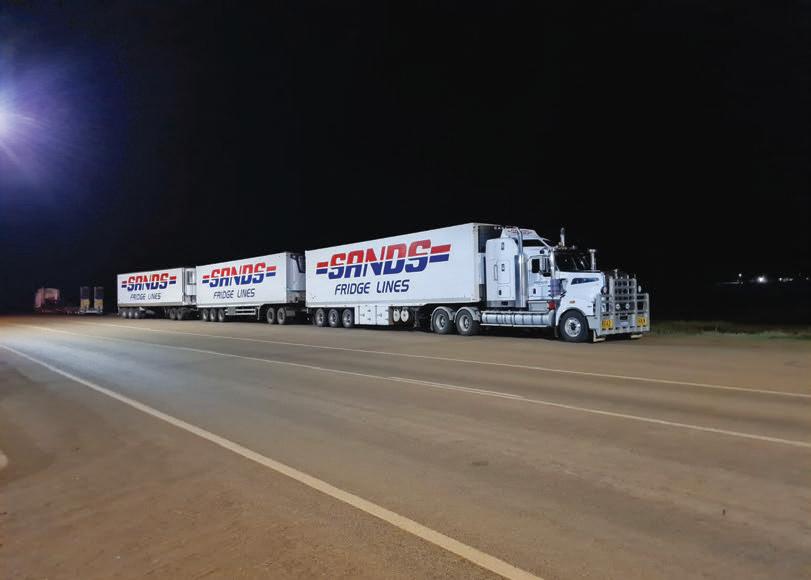
Kalgoorlie, Geraldton, Karratha and Port Hedland.
He got into the triples once he started with Sands, and he’s now been with the company for about two years.
“I carry all refrigerated trans-
port. We have a depot in Broome, so I unload a trailer when I get there at the depot and the local driver does the deliveries, then I do a delivery at a food retailer, then a full trailer of alcohol for the local pub, then the last delivery is to a fast food business in Broome. From June to December, we cart melons back to Perth and a bit of grapes,”
Clément said.
“I leave Perth on a Wednesday and when it’s quieter I can get back by late Saturday night, but when it’s busy or I get held up, it’s more like Sunday morning.”
As for the T909, Clément says it’s a great truck to drive.
“It’s a good looking truck.
I love the fact that it’s still a manual Roadranger gearbox, because we don’t have that in Europe, so I had to learn it here.
“I prefer the bonneted trucks because they’re much more comfortable to drive because you’re further away from the steer axle so you don’t feel that bounce as much. An American truck for a European driver is a bit of a dream, because we don’t have that in Europe anymore either.”
YOU HAD TO EARN THEIR TRUST, SO I SAID I’D START IN SOMETHING SMALLER AND WORK MY WAY UP.”
CLÉMENT WANTIEZ
Career-wise, Clément says he much prefers the situation in Australia compared to back home.
“It’s the freedom here. I love going up north, I think I need that time alone. I guess that’s just my personality. I enjoy going to do my own stu , without too many people around.
“I enjoy the atmosphere when you pull over somewhere to sleep or have your break in the outback, and the sky is so clear you can see all the stars. at feeling of being in the middle of nowhere, that’s what I like.
“Because I do the same job every week, once I leave Perth I don’t hear from management unless there is a drama. At the same time, management is great with us. We have a good relationship and they listen to their drivers too.”
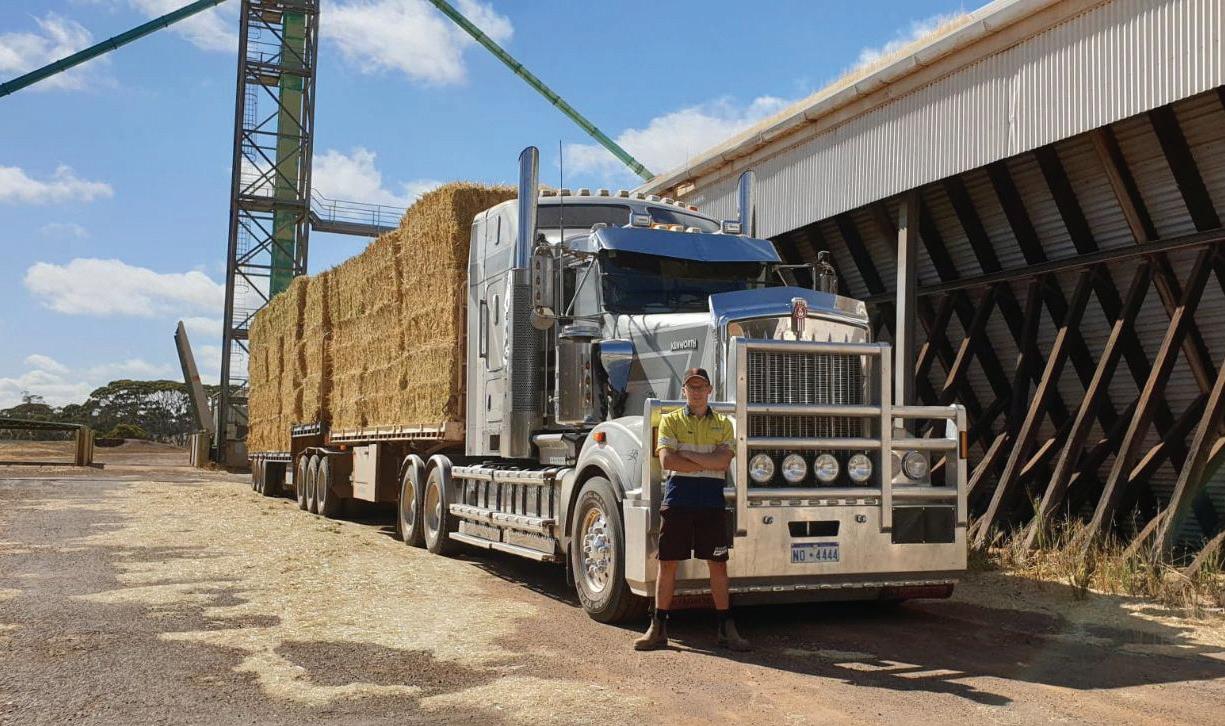





















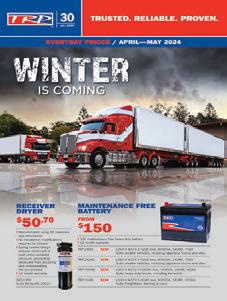






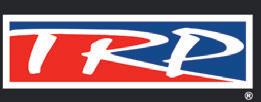






















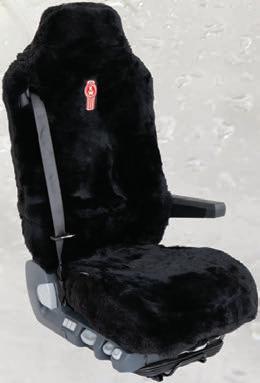




























Mack lover Wayne Lighezzolo winds back the clock and hits the road with a classic truck from his youth.BY DAVID VILE
“I HAD an F Model when I was running up and down the highway and I thought I would relive my youth again by buying one…probably not the greatest idea but here we are!” said Wayne Lighezzolo with a smile as he stood next to his 1979 FR700 Mack at the Kyabram Mack Muster earlier this year.
Wayne had made the long trek south to the Goulburn Valley from Brisbane with the cabover taking its place on display amongst the myriad of Super-Liners, B-Models and other Mack variants on show.
Wayne has been the custodian of the imposing Mack for a few years now and the FR carries the name of his family’s former transport operation, Nepean Valley Transport, on the doors.
Having rst hit the road in a Gardner-powered Atkinson, Wayne soon found himself behind the wheel of an F-Model. As the Nepean Valley eet built up to around a dozen trucks at its peak.
e bulldog breed soon had a prominent presence.
“ e old Mark 1 Atkinson was a slow but good old truck,” Wayne explained.
“My old man bought me a F-Model Mack and put me in that running general. Back in those days the [Cummins] 903s were all the go so we mainly ran Ford Louisvilles, but we wound up with around four Macks.”
After being in the Mack for ve years, Wayne headed north to the Sunshine State, operating a concrete truck. Fast forward a few decades
and the desire to “relive his youth” led him to southern New South Wales where he bought the Mack o Scott and Tracey Martin.
“Apparently it originally was an interstate truck, running Melbourne-SydneyAdelaide but ended up sitting in a paddock for a while.
“It had been tidied up fairly well though and I saw it advertised so I thought about it, and we had a chat about it, so I jumped on the plane to Wagga and picked her up and drove it home.”
e Mack has a genuine pedigree from end-to-end with a Coolpower motor, Mack 10-speed driveline and camelback suspension at the back end.
While 285 horsepower might seem modest today, back then it was comparable to other engines.
“ e 320hp Coolpower unit came out at the same time, but they are a slightly di erent concept - the 285 got a lot more torque as opposed to the 320.
“ ey will cool down a lot more and hang on in the hills a lot longer,” Wayne explained.
“ e 320s will rev a bit harder. e 285 was a very popular motor. It’s only geared for 100k’s.
“Back when I was driving we were limited to 80k’s so if you were geared for 100km/h you were laughing, but a lot of trucks used to go a lot faster than that, trust me,“ he continued with a grin.
Since purchasing the Mack, Wayne has tted a new turntable along with generally keeping everything ticking along, and with the truck now
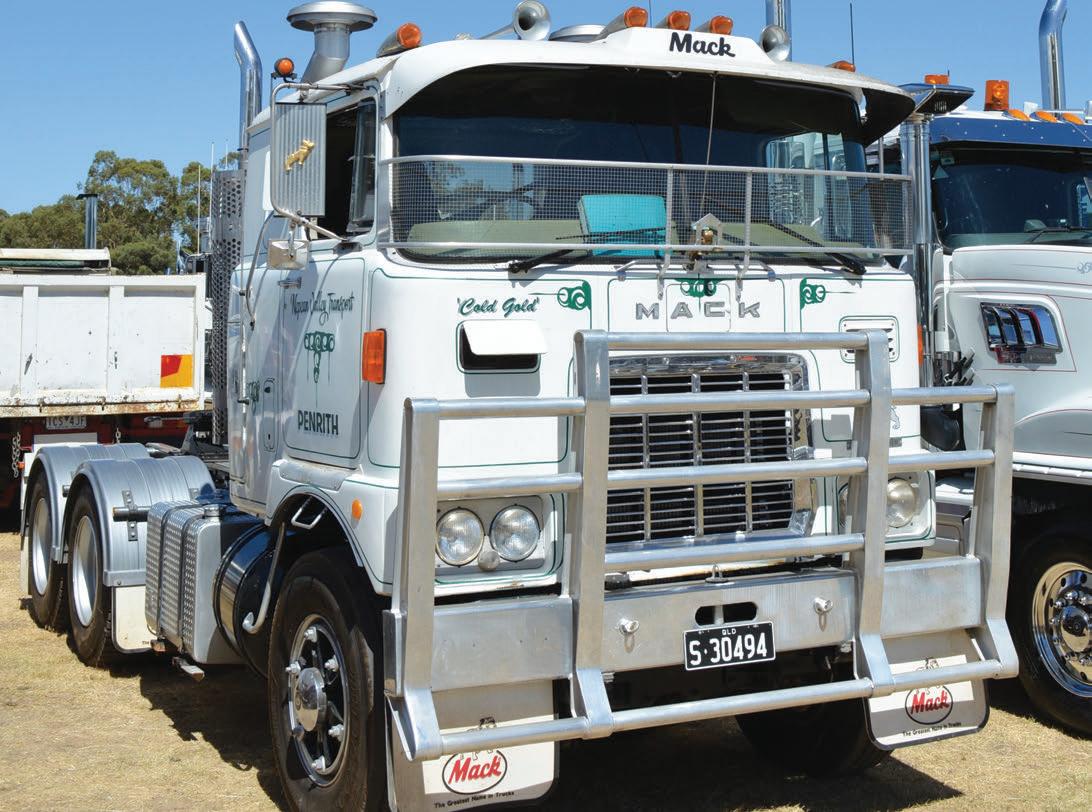
45 years old some parts are getting a little scarce.
“I got the cab suspension sorted but had to go looking a bit as cab parts are getting a bit hard to nd.
“However, anything o an R-Model will t the chassis, but a lot of aftermarket bits and pieces can also do the trick.”
Wayne and the F-Model are regulars on the show circuit.
ey also attended the Rocklea Historic Show and also

get-togethers at Biloela, Gatton and Wauchope in New South Wales.
is year’s Mack Muster was the rst for Wayne. He had planned to attend the last one in 2022 before its cancellation. e F-Model travelled down on a oat pulled by an R-Model, with the trip south done at a fairly leisurely pace.
“We thought we would try the Muster out. Because this was Mack-orientated we decided to come down and have
a look and I am glad I did.
“We tried to steer clear of getting in people’s way, so we came out through Goondiwindi and down the middle to Moree then down to Rankins Springs for the second night and rolled in here around 3pm. It was a little bit out of the way, but it got us o the Newell.”
For the trip home, Wayne was planning to load the R-Model up on the oat and drive the F-Model to give it an
extended run.
Back in Brisbane he has a B-model which he reckons needs a “bit of love” to get going again but for the time being the venerable cabover will keep ticking along and given the opportunity would gladly point the bulldog in the direction of Melbourne or Sydney once again.
“It’s just a matter of keeping on top of the maintenance, it’s been pretty good - I wouldn’t hesitate to go anywhere in it.”



































A proud Wall of Fame inductee re ects on his family’s storied past, that includes a special connection to Kenworth and Brown and Hurley.
BY AINSLEIGH BILATOTHE Wyton family name is synonymous with the Australian road transport industry, not just for its connected history, but for the values it stands for: hard work, respect and humility.
e second of three generations in the industry, 2008 Wall of Fame inductee Gordon Wyton has clocked up over 50 years behind the wheel with no plan to stop yet.
e 1940s saw the US declare Australia eligible for aid under its Lend-Lease Agreement with the British Commonwealth of Nations.
American machinery and materials were loaned to countries deemed vital allies of the US during World War II, including Ford, Studebaker and Chevrolet trucks.
In 1946, an agreement signed directly between the US and Australia, deeming Australia to have acquired full title to all lend-lease articles in its possession, left a surplus of these vehicles to be disposed of to the Australian public.
Doug Wyton, Gordon’s father, was a carpenter by trade but soon found himself the owner of a Chevrolet lend-
lease tipper. With its wooden tray, this Chevrolet, driven for the Department of Main Roads in Charleville, was the Wyton family’s introduction to the transport industry.
Doug eventually acquired an International R190, a R200 and a DCOF. When Moonie oil eld, Australia’s rst commercial oil eld, was discovered west of Toowoomba, Doug took to carting for Oil Drilling & Exploration Pty Ltd. Doug’s Australian-built Internationals served alongside imported American Kenworths, the preferred choice of the expat oilmen working in the area.
By 1965, having grown his business to support several operators, Doug purchased a Kenworth W923 – the very rst Kenworth sold by Brown and Hurley.
For £15,000, Doug not only played a pivotal role in establishing the relationship between Kenworth and the Australian transport industry, but also the relationship between the Wyton family and Brown and Hurley that continues today.
In 1966, Doug purchased Somerset Transport in Muttaburra. With some livestock and general haulage contracts
already in place, Doug required all hands on deck to keep the business moving. Gordon, aged 12, would be tasked with washing the trucks, including the stock grates.
He recalls that the hours of cleaning were made worthwhile when his dad would let him jump in and “back up to a trailer or hook it up to the dog”.
“ at’s how you’d learn.”
By 14, when Gordon left school, he was driving a mail truck, running from Muttaburra to Longreach, Hughenden and surrounding central Queensland towns.
When he wasn’t occupied with his mail run, Gordon could be found in the shed with the tyre changer.
“We’d do wheel bearing, brake liners and all that sort of thing.”
Earning $15 a fortnight, Gordon remembers, “I got taxed 50c a week and Mum used to take $5 o me in board, which left me just enough to get to the Muttaburra pictures on a Saturday night.”
For Gordon, a strong advocate for experiential learning, the time spent working with his father was crucial.

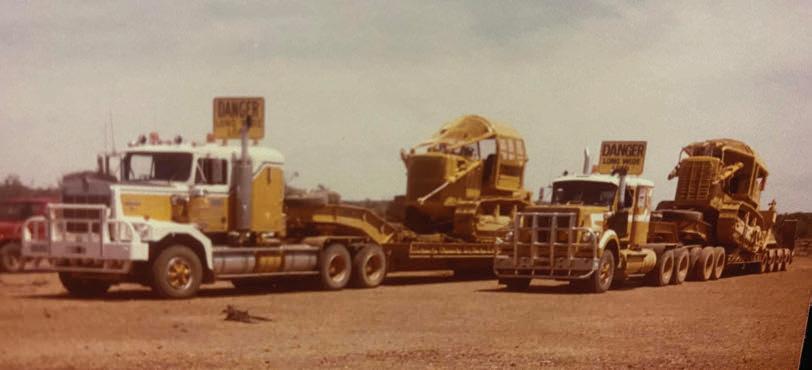



“You go too fast into a corner and you go ‘oh crickey, that was a bit close!’ and next time you won’t do it”, Gordon says of his early years learning the ropes.
“If you’re lucky enough not to lay it on the side, you’ve done well.”
Beyond driving, Gordon had the opportunity to watch as his father navigated the highs and lows of business ownership. When the wet season hit Muttaburra, the town could be shut o for three months at a time with no trucks able to come in or out.
e RAF was required to y food in, which Gordon and the team at Somerset Transport would be responsible for collecting via backtracks through the sandhills.
With careful negotiation, the bank would not chase payment for the three months with the promise that Doug would catch these up once the town dried out and his trucks were moving again.
A testament to both Doug’s reputation and the time, Gordon believes “it would be a di erent story today”.
In 1977, when Doug stepped away from transport and split the business
between his four sons, a 21-year-old Gordon headed east to Brisbane. He quickly gained exposure to the various facets of the industry, from fuel and bitumen to pipelines and heavy earthmoving equipment.
On one occasion, Gordon was asked to move a load of horses on a at top trailer, which he rightfully describes as “an experience”. When asked his favourite, Gordon recalls “I enjoyed wool when I was young and t”.
By 1997, Gordon, ready for his next challenge, started his business, G&D Partners. With over 25 years in operation, Gordon has plenty to be proud of, from winning the Industry Excellence Award at the 2008 QTA Road Freight Industry Awards to his contributions to the Waterfront Carriers and Queensland Trucking Associations.
However, Gordon says he is most proud of the support of his family – his wife Brenda, sons Troy and Michael and daughter Becky, and his loyal sta .
“Brenda is my biggest supporter. She’s a rock...and I can sit her up behind a triple no worries,” Gordon adds.
When Gordon handed over
the reins of the business to Troy and Michael in 2022, many of his team had been with G&D Partners for over 20 years.
Gordon explains that reliable sta are not bought but earned.
“It’s pretty simple. You do the right thing by people, and it comes back to you.”
He does, however, acknowledge “it is getting harder and harder to nd decent operators now” in an aging industry. Gordon says the unfortunate reality is that “they’ve either got a good job or they’re dead”.
At 68, Gordon is “taking it a little steadier”, but still enjoys driving when he can. ere is one truck that Gordon insists he will keep – the rst of the Limited Edition 50th Anniversary Kenworth T909s he purchased from Brown and Hurley in 2015.
Although his father Doug passed in 1979 and was not able to see it, Gordon’s T909 pays homage to the W923 his father bought half a century earlier.
e T909, having now done over a million kilometres, serves as a legacy not only to the Wyton family but to the Kenworth brand.
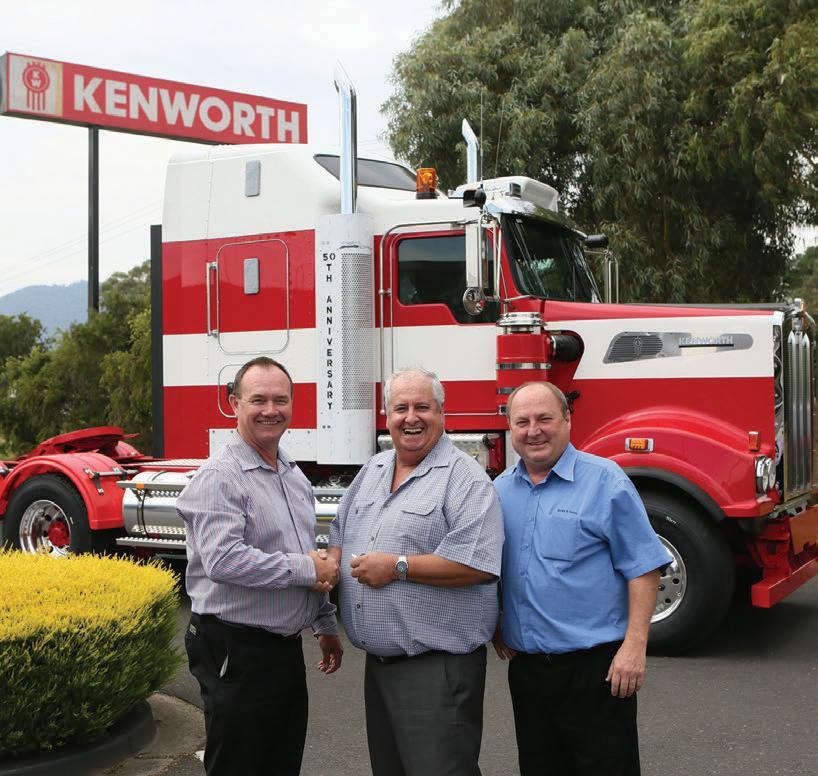





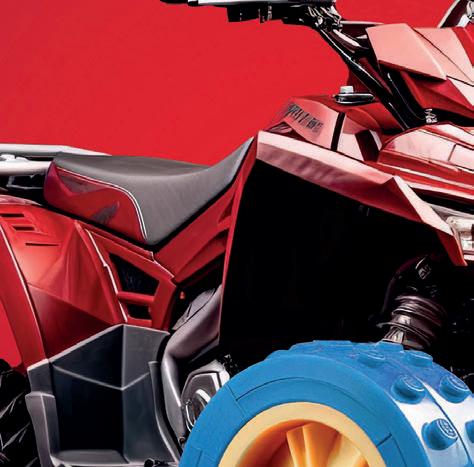





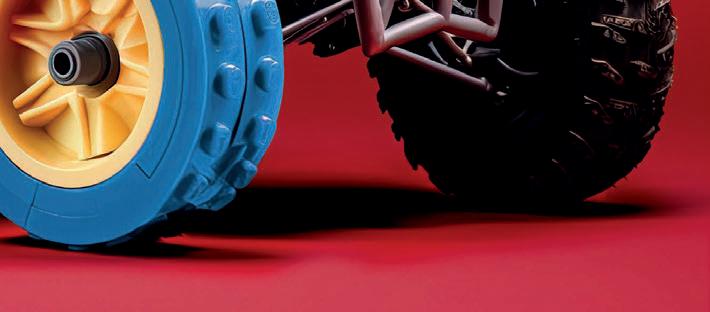





THE federal government is working towards a goal of having zero deaths or serious injuries on the roads by 2050, said Minister for Infrastructure, Transport, Regional Development and Local Government, Catherine King.
e minister wants to work with all aspects of the transport industry in tackling road safety, which is “one of the largest challenges that we all face”.
Speaking at Trucking Australia 2024 in Canberra last month, the Australian Trucking Association’s annual conference, she said the government is pursuing the vision that no-one should be killed or seriously injured on Australian roads through the National Road Safety Strategy and Action Plan.
“ is government is fully committed to implementing road safety, to improving road safety, and to reducing road trauma across the nation’s road network as we work towards ‘Vision Zero’ by 2050,” she said.
“ e National Road Safety Strategy and Action Plan sets out the key actions that all levels of government will undertake up to 2025 in pursuit of these agreed priorities.”
Last year Australia registered 1266 people killed on
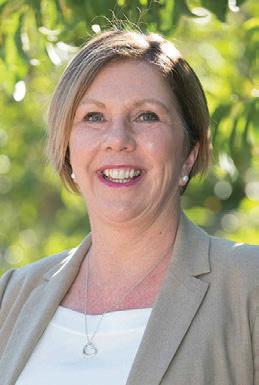
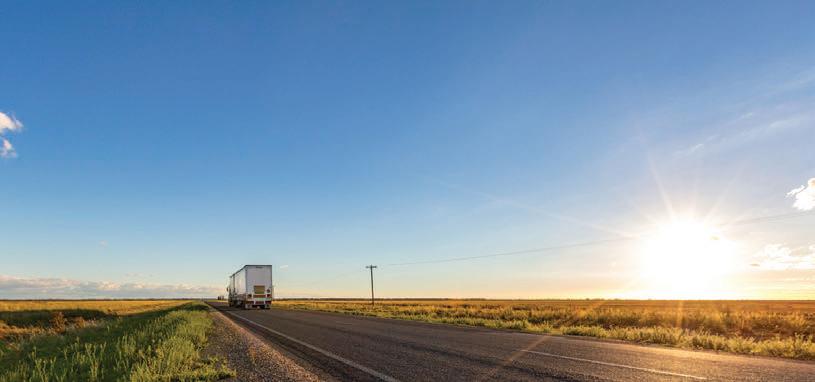
improve road safety.
the roads – a 7.3 per cent increase compared to 2022.
Around 15 per cent of all road crash deaths in Australia involve a heavy vehicle.
Although heavy vehicles crash less often than other vehicles, when they are involved in a collision they are more likely to result in death or serious injury.
e minister described last year’s road death gures as “catastrophic” and said there is a “shared responsibility” from all levels of government, road safety agencies, the transport industry and the community as a whole to
“ e meeting of my ministerial colleagues from states and territories in December last year noted our concern at the increase in road deaths,” she continued.
“We agreed that road safety ministers would engage with police ministers to discuss emerging trends and to investigate short-term action which could be taken to stem the rise.
“I look forward to hearing the outcomes and discussing their recommended measures with my ministerial colleagues.”
King said that accidents at railway crossings are a major concern, and the government
is committed to improving safety in that area.
A roundtable meeting, led by the National Level Crossing Safety Committee, was held in Brisbane recently to discuss the problem.
King said that it has been pointed out to her that no heavy vehicle users were involved in the roundtable, and she said that this will be “recti ed”.
She continued, “ e roundtable delivered commitments to a number of actions that will either be delivered by industry themselves or will certainly have an impact on industry.
“Some of the actions that were agreed at that meeting
were: the development of a nationally consistent and sustained driver education program with road and rail regulators and the industry working together.
“Exploring options for in-vehicle technologies to provide more information to drivers about level crossings and approaching trains.
“Working towards national harmonisation and enforcements for driver non-compliance at level crossings, led by the National Transport Commission, and greater collaboration between sectors and governments in sharing data at high-risk level crossings.”
However, Senator Bridget McKenzie, who has led the
National Party of Australia in the senate since 2019, hit out at the current federal government, particularly King, for cutting funding for infrastructure projects and not xing the truck licensing system.
“It’s time that federal minister Catherine King got out of her o ce, stopped cutting and delaying projects and took a leadership role, and called all the players that are making these decisions to the table and sat them down and knocked this out,” she said.
McKenzie said it makes “no sense” that we still have di erent licensing systems in operation in the various states and territories of Australia.
“It is nothing more than ego over practicality that this still exists,” she said.
“If Covid taught us something it’s that sometimes these borders between states are arbitrary and premiers and ministers can use them for completely arbitrary barriers.
“ is licensing stu is absolutely within that.”
McKenzie, who plans to get her HR licence this year, added every operator needs to be able to be con dent that a driver can competently drive a truck before they put them behind the wheel.

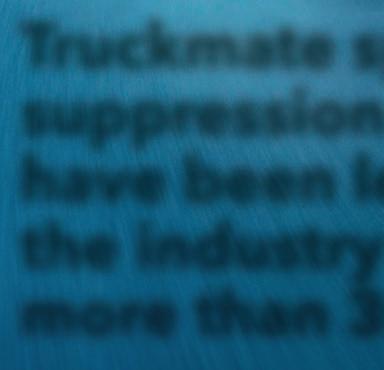


AS the nation gears up for 2024 National Road Safety Week (NRSW) from May 5-12, the spotlight is once again on the imperative to actively safeguard the lives of our fellow Australians on our roads and highways.
is year’s theme, “All road safety is local… Drive So Others Survive!”, resonates deeply with the core mission of NRSW: to instill a culture of responsibility and vigilance among road users.
It’s about putting the safety of others rst, the safety of those in our community.
e need for this was recently expressed by NSW Police Assistant Commissioner McFadden at the National Road Safety Conference. He noted that road user behaviour has become increasingly sel sh,

placing the wants of drivers ahead of the safety of other road users.
We agree with the Assistant Commissioner, and believe this behaviour is contributing to the horrendous increase in Australia’s statistics.
For example, despite the commonwealth, state and territory governments’ commitment to reducing the number of lives lost each year to 50 per
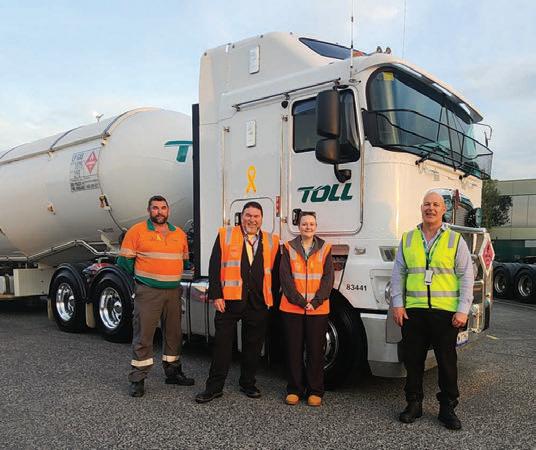
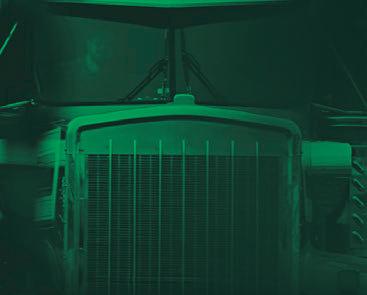
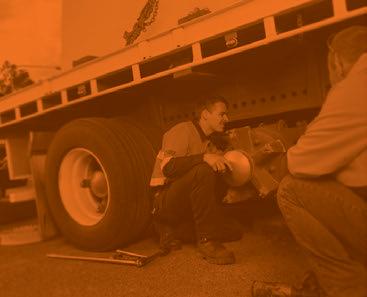
cent of the 2020 level, the statistics continue in the wrong direction.
If we were “on-track”, last year there would have been less than 960 fatalities in Australia. Yet in 2023, more than 1280 people lost their lives, with 40,000 individuals suffering serious injuries due to road crashes.
is is a true pandemic, and additionally, the economic cost is staggering, exceeding $30 billion to the Australian community every year.
But statistics never tell the real story because it is what is behind these numbers that matter. In short, we continue to leave loved ones, families, friends and communities forever a ected, by what in reality, are completely avoidable crashes.
Road deaths and serious injuries must never be seen as simply the inevitable consequences of using Australia’s roads. ese crashes are not accidents, and as we know what causes them, we also know what to do about them.
Over the past decade, I have been contacted by hundreds
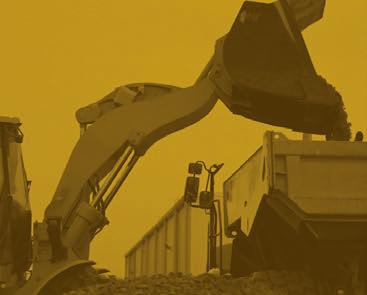

of grieving individuals, and of those, too many have been our truck drivers, and too often, I speak with the loved ones of our heavy vehicle drivers. I hear the real stories of families torn apart and lives forever changed.
Of course, my own family knows from tragic personal experience having lost my 23-year-old daughter Sarah in a completely avoidable crash caused by a distracted truck driver.
While I will be haunted by Sarah’s loss for the rest of my life, I also have two sons, one with a HR licence and the other with an MR licence, and I worry for their safety every time they drive a heavy rig.
So, while we all have our reason for wanting to remove trauma from our roads, let’s use the National Road Safety Week message to get the engagement of others.
At its core, NRSW is about unity in purpose: getting everyone home safe to their loved ones. It’s a rallying cry for all road users to prioritise human life above all else and

to recognise that when you are behind the wheel, your rst priority is the protection of your passengers and everyone on the road ahead, and in doing this, you are also ensuring that you, as a truckie, get home safe to your loved ones. Improving outcomes requires concerted action from all sectors of society, and that’s why we are so proud that our transport and logistics partners are leading that change because they not only choose to “Drive So Others Survive!” but they are setting a clear example to their communities by putting those “Drive So Others Survive!” re ective stickers on their trucks and buses to show their advocacy. In doing so their vehicles become “Moving Billboards for Road Safety!”
ese partners and supporters are committed to actively protecting all those on the road ahead; they are directly modelling leadership, and in doing so, changing community attitudes.
As National Road Safety Week brings focus to road safety, let’s not just mourn the
lives lost, but recommit ourselves to a future where road crashes are rare occurrences. Together, we can drive attitudinal change on Australian roads, and as I said above, our reason is simple:
“Everyone has a right to #GetHomeSafe… Every Day … No Exceptions!”
• Peter’s daughter Sarah was killed by a truck driver in a completely avoidable crash on the Hume Freeway in NSW on February 15, 2012. Since then, he has dedicated his life to improving road safety in Australia and overseas. In March 2012, he founded SARAH (Safer Australian Roads and Highways) Group and since then, he has worked to not only positively in uence government, corporate and community road safety advocacy, but legislative and infrastructure reform. He created and remains the driving force behind Australia’s National Road Safety Week, as well as the nation’s road safety symbol, the “Yellow Ribbon”. Make your pledge at roadsafetyweek.com.au.
vestments in critical areas such as technology, company culture and new equipment, which nesses looking to implement safety initiatives, according to
er – repair management and assessing, says operators are experiencing higher operating ing fuel and labour, servicing and maintenance, and new
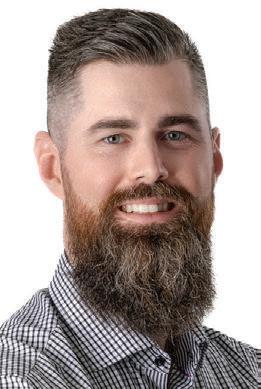

RISING costs can hinder investments in critical areas such as technology, company culture and new equipment, which may act as a roadblock to businesses looking to implement safety initiatives, according to industry specialist, NTI.
Cost inflation
Ben Johnson, NTI’s manager – repair management and assessing, says operators are experiencing higher operating costs across the board, including fuel, labour, servicing and maintenance, and new and used equipment. “ e recent surge in fuel prices compounds these
issues, elevating operational expenses and squeezing pro t margins,” he said. “And the persistent shortage of drivers not only strains delivery schedules but also in ates labour costs, undermining the operational efciency of the entire business.”
On top of these key input costs, Johnson says regulatory changes, including tougher emissions and safety standards, also weigh heavily on transport companies’ bottom lines.
“Transport operators might have to adapt to these changes in the environment to actually keep these contracts and keep their business a oat,” he added.
What’s more, Johnson says
ageing roadways, bridges and tunnels are also impacting on operators’ costs, necessitating more frequent equipment repairs and upgrades.
“It’s not just the pressures of paying their operators higher wages, rising fuel prices, but it’s also the maintenance of these vehicles as well,” he said.
“In this landscape, the increasing e ect of these compounding challenges not only jeopardise nancial stability but have also struck the industry’s ability to provide reliable and cost-e ective services, raising concerns about the overall resilience of the transportation industry in meeting demands
of a dynamic and inter-connected global economy.”
Investment impact
Johnson says NTI is keenly aware of how these challenges can undermine the pursuit of best practice for some operators.
“Higher operating costs can hinder investments in things like technology and company culture, which can act as a roadblock to businesses looking to implement safety initiatives,” he said. “Higher operating costs can also a ect the borrowing capacity for these businesses to purchase new vehicles as well.
“ is perpetuates a negative cycle as older vehicles break down more, increasing risk and decreasing capacity if they are out of action,” Johnson added. ey also cost more to operate.
“ e ever-present skills shortage across the transport and logistics sector also impacts the bottom-line as businesses bear the cost of wear and tear on equipment and additional training to ensure the safety and competence of employees.
“Whilst training and upskilling drivers is an investment, it’s exacerbated by the current economy, especially for smaller to mid-sized operators.”
Engineering solutions
As a transport industry
specialist, Johnson says NTI o ers solutions that can help businesses optimise processes, operate more e ciently and improve safety outcomes.
For one, eligible NTI customers can engage in a complementary risk assessment of their operation by NTI’s experienced risk engineers.
e resulting report includes practical steps and recommendations operators can take to help make operations safer, and can assist in realising better sta retention, improved e ciency, and reduced costs.
What’s more, NTI leverages its industry knowledge and experience to produce a range of freely available educational materials aimed at improving customers’ operations and safety performance.
rough blogs, podcasts, articles, etc, NTI experts provide insight on key operator issues and challenges, including asset management, incident management/response, safety/ culture, recruitment, education and training, and more.
On an annual basis, NTI’s National Truck Accident Research Centre (NTARC) produces the Major Accident Investigation Report which provides unique insights into serious heavy vehicle crashes
which are critical in raising industry awareness about the causes of these incidents – as well as underpinning solutions.
NTARC doesn’t just share data, it proactively engages with customers to establish extra detail and helps them implement prevention strategies to reduce future occurrences.
Recently, the research centre expanded its remit to provide valuable safety guides for operators on topics such as sleep apnoea, fatigue management, safe loading and unloading, and driver inattention/distraction.
Additionally, NTARC beginning to drill down and expand data based on industry segment, targeting some high-risk sectors such as tankers, through its Dairy Safety program, which has a range of tools to reduce the high incidence of tanker rollovers in the industry.
“We try to help with these issues by creating awareness, by releasing material in the form of webinars, podcasts, blogs, reports and industry insights where we gather the industry experts to address trends and cost savings techniques,” Johnson said. “We deliver stats back to industry on how incidents occur, and we use the data to o er insights into how we can work together to make industry safer and more sustainable.”

IN an increasingly tough business environment operators are desperately searching for every possible cost saving, both large and small.
For no upfront investment, NTI customers can engage in-house risk engineers to undertake a complementary risk assessment of your operations.
Customers who have undertaken the insurance provider’s risk assessment process and taken on board the recommendations have experienced marked reductions in vehicle downtime as well as a reduction in claims and claim costs.
In an industry where time truly is money, customers saw both the number of vehicles o road – and time o road –decline.
e total number of days o road was reduced by a whopping 77 per cent, dropping from 37 vehicles o road for a total of 1940 days to 13 vehicles o road for a total of 442 days.
Average days o road per vehicle dropped from 52 days to 34 days.
What’s more, 73 per cent of customers had fewer accidents and 67 per cent experienced a reduction in average costs per claim (down by an average of $200,000) following the risk assessment.
“We have also seen that customers who engage our risk engineers generally have improved overall business performance,” said NTI heavy motor risk engineer Paul Bressan.
What’s involved?
Originally focused on customers experiencing higher claims and/or claims costs, NTI o ers free risk assessments to eligible customers as part of its broader commitment to supporting industry.
To kick o the process NTI’s risk engineers meet with relevant managers and team members to understand the business’ details and requirements. is meeting can be virtual though the preference is to visit the customer’s site and meet face-to-face.
Bressan says this “diagnostic” generally takes 60-90 minutes and includes a post-loss examination to identify con-
tributing factors to previous incidents.
e NTI team also looks at other key risk factors, including education and training of sta , asset management (including whether any technologies have been retro tted to vehicles), incident investigation processes, and site security, etc.
“Once we unpack all the information we identify any gaps in the customer’s safety compliance framework and make recommendations for addressing them, bespoke to the customer’s needs. In many cases we provide the tools to do this, given the resources that we have available to us as industry specialists,” Bressan said.
Key risks commonly identi ed include a shortage of experienced drivers; and the time and cost constraints for operators when it comes to training and development.
e latter is often attributed to deadline-dependant carriers and client expectations regarding Direct In-Full On-Time (DIFOT) obligations from the carrier.
“Additionally, we nd many customers don’t have the luxury of dedicated training and safety sta to address training requirements and investigate incidents thoroughly enough to identify the contributing factors, root cause and desired correcting action impact,” Bressan added.
“Overall, carriers and drivers
alike are working hard, doing the best they can to meet requirements and keep up with the demands they face on a day-to-day basis.”
What are the benefits?
At the end of the process, NTI completes a risk assessment report that they share with the customer. is report will typically include a customer overview; engagement o ered and its expected content; recommendations and collateral as required; and timeframes for any follow-up actions.
e tailored report also includes practical steps operators
can apply to make operations safer, leading to better sta retention, improved e ciency, and reduced repair and insurance costs.
Importantly, as industry specialists the NTI team can help businesses not only manage risks but improve safety, optimise processes and operate more e ciently.
“We believe our risk engineers are unique. Not only do they understand risk management and insurance, they’re also industry specialists. is knowledge helps them better understand your business and create appropriate solutions to
address the unique challenges you face,” Bressan said. “ e NTI team will also aim to identify the business’ strengths to extend its competitive advantage and grow in those areas.”
* e articles on this page contain general information only and you should obtain your own professional advice based on your personal and business circumstances. NTI bears no responsibility, and shall not be held liable, for any loss, damage or injury arising directly or indirectly from your use of or reliance on the information in these articles.
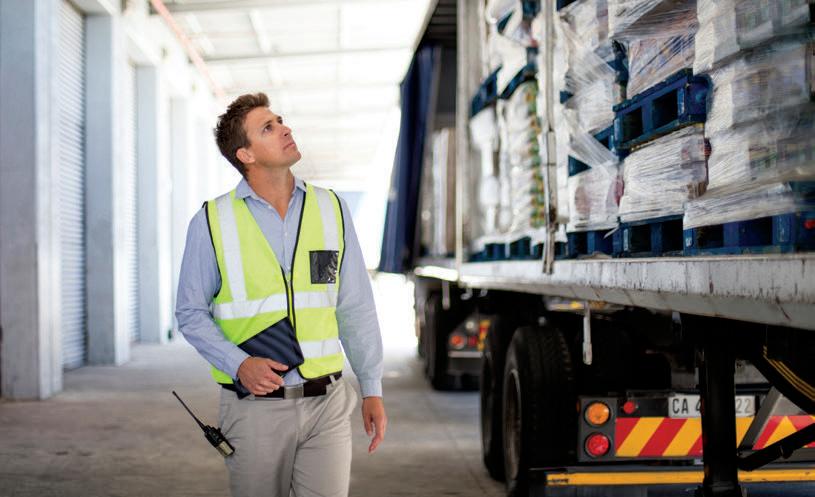 NTI’s manager – repair management and assessing, Ben Johnson. Images: NTI
NTI heavy motor risk engineer Paul Bressan. Images: NTI
NTI customers can engage in-house risk engineers to undertake a complementary risk assessment of your operations.
NTI’s manager – repair management and assessing, Ben Johnson. Images: NTI
NTI heavy motor risk engineer Paul Bressan. Images: NTI
NTI customers can engage in-house risk engineers to undertake a complementary risk assessment of your operations.

TAFE Queensland is providing the training necessary to ensure the safety of mechanics, consumers, and motorists interacting with Electric Vehicles (EVs) as these vehicles continue to gain popularity, from fourday intensive skill sets to complete EV apprenticeships.
e training available at the country’s top training provider is suitable for members of all sectors of the automotive industry, with the heavy automotive and transport sector having been crucial to the development of TAFE Queensland’s offerings.
ose who are eligible quali ed Queensland mechanics can complete the Battery Electric Vehicle Inspection and Servicing Skill Set (AURSS00064) at no cost under the Australian and Queensland Governments’ Fee-Free TAFE ini-
HUNDREDS OF MECHANICS COMPLETED THIS COURSE IN 2023.”
tiative, and will learn the basic skills required to begin working on EVs across four days on a TAFE Queensland campus.
Hundreds of mechanics completed this course in 2023, and mechanics across the state are encouraged to join them and expand their own and their workplaces’ scope of work. Completing this skill set is an essential rst step as local businesses prepare to sign up apprentices in the newly announced EV Apprenticeship.
e Certi cate III in Automotive Electric Vehicle Technology (AUR32721) is open to enrolments and attracts the Queensland Government’s Free Apprenticeships for Under 25s

funding. is apprenticeship trains students in all the skills required to lead Queensland’s automotive industry through its EV revolution.
TAFE Queensland chief executive o cer John Tucker says the apprenticeship is an important quali cation for the future of the automotive industry and one which has drawn considerable attention from the state’s largest training provider to develop.
“TAFE Queensland is proud to support the advancement of Queensland’s automotive industry by working hand-in-hand with employers to develop the new
quali cation,” Tucker said.
“I encourage employers across the state to contact their local TAFE Queensland automotive representative to learn more about how they can access this new innovative quali cation and not only future proof their business, but most importantly keep Queenslanders safe on the road,” he said.
Sheree Tarman, people and safety manager QLD/ NT at Eagers Automotive, said Eagers Automotive are proud to partner with TAFE Queensland in supporting the new Electric Vehicle Apprenticeship.
“We have been actively involved in industry consultation and provided feedback to the Queensland Government supporting this apprenticeship to upskill our workforce to meet changing consumer needs,” Tarman said.
“We can trust TAFE Queensland to provide industry relevant content to ensure our apprentices complete their trade with a high level of competence,” she said.
For more information about EV training, please contact Client.Solutions@ tafeqld.edu.au or call 1300 308 233 to de ne your greatness today.
Quali ed Queensland technicians can complete the Battery Electric Vehicle Inspection and Servicing Skill Set AURSS00064 for $0 under Fee-Free TAFE funding. This course will expand your skills to work on the vehicles becoming more popular on Queensland’s roads. Scan the QR code for further details.

Enrol in the Hydrogen Fuel Cell Electric Vehicle Training program

Hydrogen energy has the potential to cut Australia’s greenhouse gas emissions to onethird of current levels by 2050. Developed in collaboration with industry experts, these future focused Microskills pave the way for a greener, more sustainable future. Equip workers with the fundamental knowledge and skills to safely operate and integrate Fuel Cell Electric Vehicles. Upskill online, on-demand in less than 2 hours.

Microskills for a macro impact
Our Microskills focus on three key areas that lay the foundation for a sustainable future:
1. Hydrogen Energy Fundamentals
2. Introduction to Hydrogen Fuel Cell Electric Vehicles
3. Refuelling of a Hydrogen Fuel Cell Electric Vehicle
In collaboration with:
PROMOTING a culture of wellbeing and safety within transport, warehousing, and logistics has unique challenges that have long required an industry-speci c approach.
Melissa Weller, Healthy Heads in Trucks & Sheds director industry relations and program management, says while the industry has clear regulations and procedures around physical safety – from requirements for wearing hivis clothing, to clearly marking safety zones in work areas and around machinery, its much more di cult to nd practical guidelines for managing the unique psychosocial hazards prevalent in the industry.
“It’s not quite as easy to understand what the hi-vis is or what the yellow line is when it comes to somebody’s psychological health. And the types of things that can put their psychological health at risk,” she said.
And the transport and logistics industry faces many psychosocial hazards unique to the sector, Weller added.
“Particularly within transport and logistics we know that job control is a psychosocial hazard that needs urgent attention. Another is change management: the way that we imple-
ment change, communicate change, and support people through change in the workplace,” she explained.
e industry is also beset by low levels of recognition, Weller noted.
“You will hear stories about people that really kind of feel they get a set of keys chucked at them, and they know where they’ve got to end up at the end of the day, but they’re spending eight hours in a truck thinking well I’m out here on my own,” she said.
“ at’s essentially why Healthy Heads was founded – to support the transport, warehousing, and logistics industries in the areas of mental health and broader wellbeing. ere’s a lot of unique hazards in this industry and it was felt that an industry-speci c approach was needed.”
Founded in 2020, Healthy Heads set out to do just that –focusing on providing industry with support for businesses of all shapes and sizes to create a healthy working environment and thriving individuals.
As part of its work, the organisation recently released its ‘Seven Stories, Seven Strate-
gies Roadmap Planner’, a set of resources designed to help businesses better understand psychological health and safety and develop workplace wellbeing plans.
It is built upon the ‘Seven Workplace Strategies’ outlined in Healthy Heads’ National Mental Health and Well-being Roadmap, a uni ed plan for improving mental health and wellbeing across the industry.
“In April 2023 a model code for managing psychosocial hazards in the workplace was adopted. is is reasonably new legislation and although our existing strategy – the Roadmap – had already been released and aligns with this model code, it didn’t go into the same amount of guidance detail that the Roadmap Planner does. e Roadmap Planner is more your ‘how-to’ guide,” she said.
Seven stories, seven strategies
e Roadmap Planner centres around seven workplace strategies formed to protect and support employees, explained through seven real-to-life stories. ese stories help demonstrate each strategy.
“We call it the Seven Stories, Seven Strategies because we



have created a scenario for each one of the strategies to help explain what the hazards are and how they might play out in an actual workplace,” Weller explained.
“ e seven strategies are a framework to follow to start putting controls in place to mitigate psychosocial risk. ese strategies are: leadership capability; awareness; workplace culture; smarter work design; resilience and coping skills; early intervention; and recovery.
“We’ve then gathered representations of real-to-life stories to help everyone better understand the hazards. We discuss why and how each story matters, and how you can get started on implementing each strategy in your workplace.
“ e Roadmap Planner provides several di erent resources including policies that can be downloaded and tipsheets that can be used. We’ve basically compiled all of the relevant information in one place so that people in this industry can come straight to our website, download the Roadmap Planner, and access information and resources that they can utilise, from training courses right through to links to relevant areas of state and territory SafeWork websites.”
Where the rubber meets the road
rough the Healthy Heads newsletter, each of the seven strategies will be featured in coming weeks, starting o with Strategy one, Build Leadership Capability.
While many leaders don’t have the quali cations to address an employee’s psychological or emotional issues themselves, Weller says they are in a position of in uence when it comes to how safe people feel about speaking up about mental health or workplace concerns.
“Leaders have a role in normalising workplace discussions about mental health and other hazards in the workplace that might a ect someone’s mental health,” she said.
“Whether you’re a leader of a


small business or a large company, or you are a team leader, you are in a position to help create a culture where employees are empowered to care for their own mental health.
“ is might include actions like ensuring you take allocated breaks and use these to recharge properly, rest, walk or stretch and have a healthy snack and stay hydrated.
“Other examples include taking leave if you are unwell, developing good social connections in the workplace and regularly checking-in with employees, which can be as simple as asking ‘How are you going today?’
“When you think about a psychosocial hazard like work demand, for example, how do you as a manager, supervisor, or business owner stay on top of the demands that you’re putting on people day to day. Are they fair, are they reasonable, does everyone understand what their job is and how they’re supposed to do it, and what the expectations are?
“What communication have you got in place so that dayto-day you’re aware of how the people in your organisation are coping with their workload, with the environment they’re working in, and giving them opportunities to have some input into what they do and how they do it.”
Where to start?
Weller believes the process starts with awareness. “I was talking to someone from a smaller size business and they said they’ve started working on some of these awareness raising approaches, making sure they’re getting that message out there that this is a safe workplace to speak up about any of your concerns, whether it’s about how you do your
job, a concern about your own mental health, or to say I’m not coping very well at the moment at work or I might need to access some leave,” she said.
“ ey started by delivering the Healthy Heads Toolbox Talks. ose talks started to shift the culture within the organisation to let people know where they can go to nd resources and know this is a safe space and we want you to speak up if you’re concerned about something.”
Edwina Hausmann, risk and compliance o cer at Russell Transport, agrees. e Brisbane-based carrier was among 13 companies involved in piloting the Roadmap Planner before its release.
“Although we were already focusing on psychological safety it wasn’t as highlighted because it’s new territory,” she said.
“While there are a lot of resources, a lot of information, it was hard to work out where to start. e Roadmap Planner has helped us to identify this, it highlights where and what we need to focus on rst, and it’s structured our approach.
“At the moment we’re really focused on making psychological safety standard, just like all aspects of physical workplace safety. It’s new territory, there’s some stigma we’re still breaking down, so our focus is on increasing awareness and understanding and then we will look at more of the strategies and what we need to prioritise next.”
For more information about Healthy Heads in Trucks & Sheds, or to subscribe and join the community, visit the website at healthyheads.org.au.
NTI is a proud Foundation Partner of Healthy Heads in Trucks & Sheds.

THE ongoing commentary about the time-based driver licensing process and the varying standards of heavy vehicle driver training around the country highlights one major issue. Under the current licensing and training systems, there is no system for newly licenced drivers to gain the essential on-road experience to be considered safe and job ready. e new drivers gaining licences under the current regime are often not considered suitable
for employment due to limited on-road experience, poor quality of training and little or no safety knowledge. To improve the safety and competency of newly licenced drivers, in 2023 the QTA launched the Heavy Vehicle Safe Driver Program (HVSD). e program is funded through the Heavy Vehicle Safety Initiative (HVSI) from the National Heavy Vehicle Regulator (NHVR), supported by the Australian Government.

e HVSD Program provides multiple bene ts to both employers and to drivers by providing a training framework focussed on embedding driving skill and safety knowledge in an on-road environment. For employers, it o ers a training program that develops safe ‘job-ready’ drivers and a wage subsidy to o set the cost of the supervising driver mentor. For newly licenced or inexperienced drivers, the program o ers employment and training through a structured
program that includes 160 hours of on-road driving and practical application of safety knowledge and competencies.
e program is unique in the way that the stakeholders are engaged into the program. e employer, driver training and driving mentor are all part of the program orientation where the expectation of the program is set. is ensures that everyone is aware of the expectations in the program and suitability of the driver mentor. e skill level, knowledge and mindset
of the driver mentor is integral to the participant’s success.
Another point of di erence is the inclusion of an independent pre and post program assessment of driving skill and demonstration of safety knowledge both on and o the road.
e pre-program assessment is used as a benchmarking tool to determine the driver’s skill and safety knowledge level. Feedback is provided to the driver on areas for improvement and gaps in safety knowledge. is pre-program assessment benets the employer in identifying strengths and limitations in current training practices and o ers driver mentor’s insight into their instructional ability.
e post-program assessment includes demonstration of practical skills and knowledge associated with situational awareness, hazard perception, risk avoidance, resilience and problem solving and compliance with the Heavy Vehicle National Law (HVNL).
Upon completion of the program, the employer is paid a wage subsidy to o set the cost of the driver mentor who is providing the training instruction.
Participants can enter the program via an employer or through the Expression of Interest. All participants must be able to satisfy the conditions of employment and undergo any required screening and testing as required by the employer.
QTA CEO, Gary Mahon said, “ e success of the program is evident as we have employers now actively recruiting inexperienced drivers. e rigour of the independent pre and post program driving and knowledge assessments is producing more competent and safer drivers who are job-ready.” is type of program is an industry rst and e ectiveness of the program is being evaluated by Dr Darren Wishart from Gri th University.
Employers who would like to enrol newly employed HR or HC drivers through the program can contact the QTA by emailing lisa@qta.com.au or calling 0405 152 952. Interested driver applicants can apply via the QTA website – qta.com.au/hv-safe-driverproject.
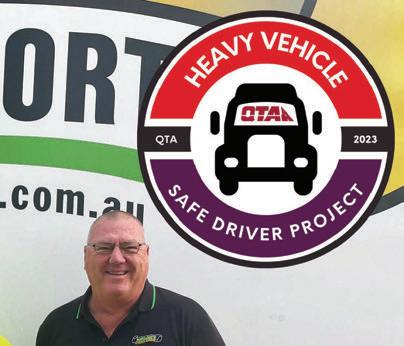

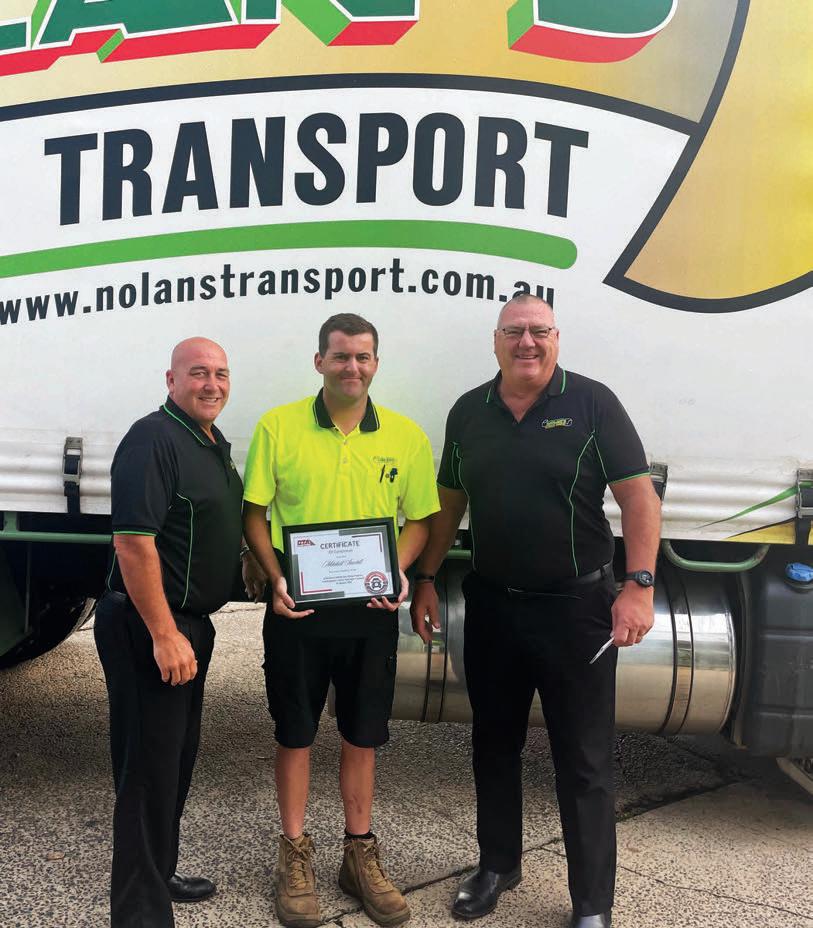

AS the managing director of DSE Transport, Safety Week holds a special significance for Ryan Howison.
It’s a reminder of the core values that drive our operations and the responsibility we bear towards drivers and the public.
Safety-conscious drivers are the backbone of the industry. When I hire a driver, the key thing I look for is whether they have a safety-conscious mind. Safety-conscious drivers are not just assets or something ‘nice to have’. They’re the backbone of our entire industry.
Their commitment to following safety protocols, adhering to the Heavy Vehicle National Law (HVNL) and maintaining a vigilant approach on the road ensures not only their own wellbeing but also the safety of everyone around them.
Investing in driver training and education is crucial. It’s not just about teaching them the HVNL and how to fill out a logbook. It’s about instilling a culture of safety.
Encouraging open communication channels where drivers can report safety concerns without fear of reprisal fosters a proactive safety culture.
The Chain of Responsibility (COR) isn’t a buzzword. It saves lives. COR is often discussed in our industry. We talk about it all the time. But here’s the thing. Its practical significance cannot be overstated. It’s a framework that saves lives.
COR places responsibility not only on drivers but also on managers like me, schedulers, loaders and everyone involved in the supply chain.
As a managing director, I understand the weight of this responsibility.
Ensuring our operations comply with COR regulations isn’t just about avoiding penalties. It’s about safeguarding lives.
Implementing robust systems for fatigue management, vehicle maintenance and load securing is a non-negotiable part of my business. If you prioritise the health of your drivers, they’ll take care of the rest. If you take care of your drivers, they’ll take care of your customers. They’ll also take care of their colleagues, your stock, your loads and your business’ entire reputation.
Your drivers are quite literally the face of your business. At the end of the day, a healthy driver who feels like their company has their back is more alert, focused and capable of making split-second decisions that can prevent accidents.
Therefore, investing in driver wellness programs goes beyond physical health. Mental wellbeing is equally important.
Provide access to counselling services. Give them tools to reduce stress. Promote a healthy work-life balance. Check in from time-to-time. All of this will contribute significantly to overall driver wellness.
My company DSE Transport lives by these themes. Our drivers love working for my team. And that’s because they know that, to us, they are not numbers. They are literally our entire operation.
We invest significantly in driver training and education, instilling a culture of safety and vigilance on the road.
We recognise and reward safe driving practices, reinforcing positive behaviour and dedication to safety.
If there are any other managing directors in the transport industry reading this, take note. Safety Week serves as a poignant reminder of the values that underpin our industry. It isn’t just a marketing ploy. It’s a call to action, to help save lives and make our roads safer for everyone.
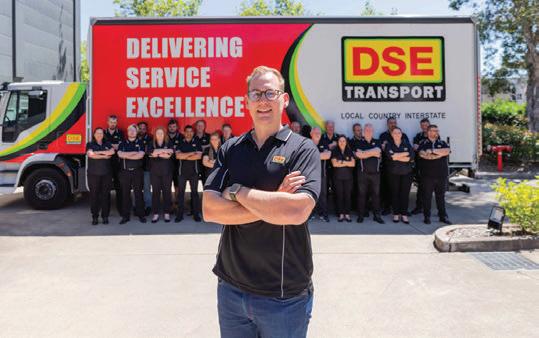
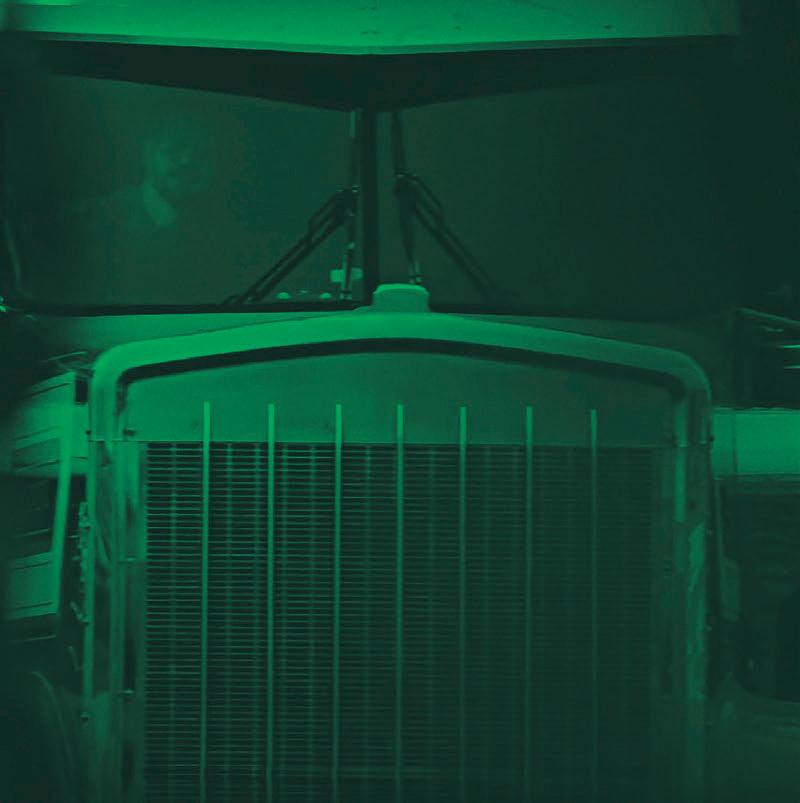

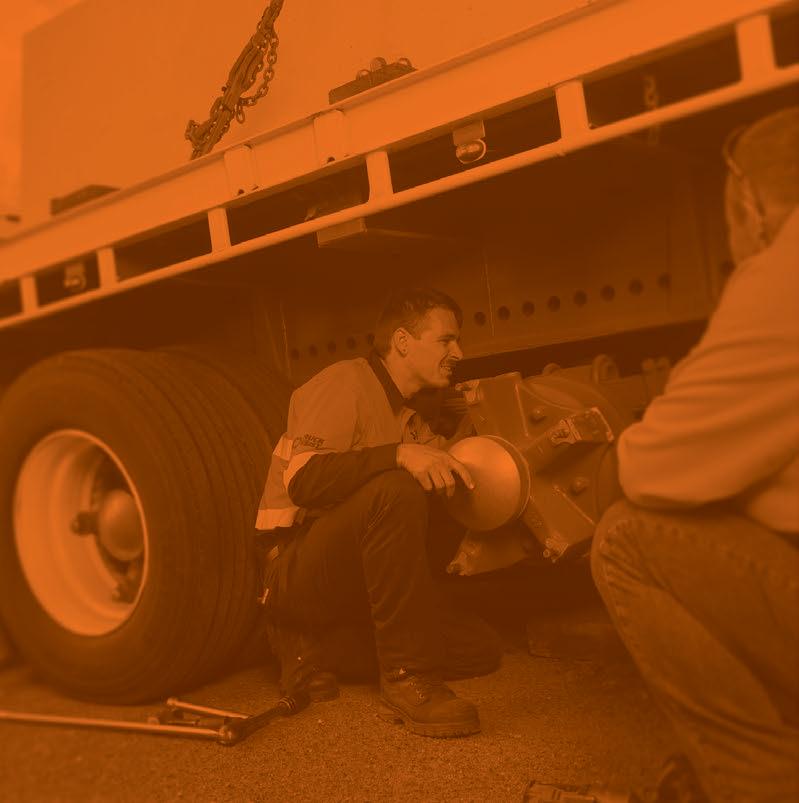

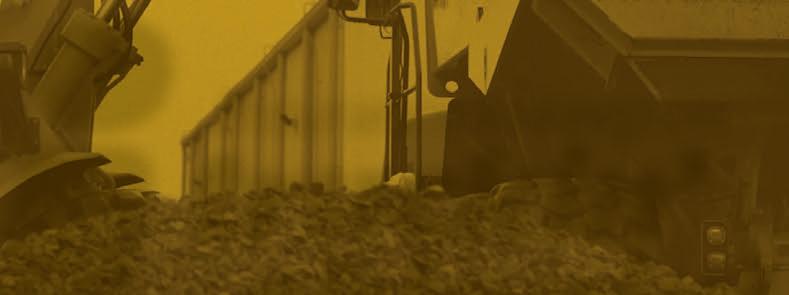
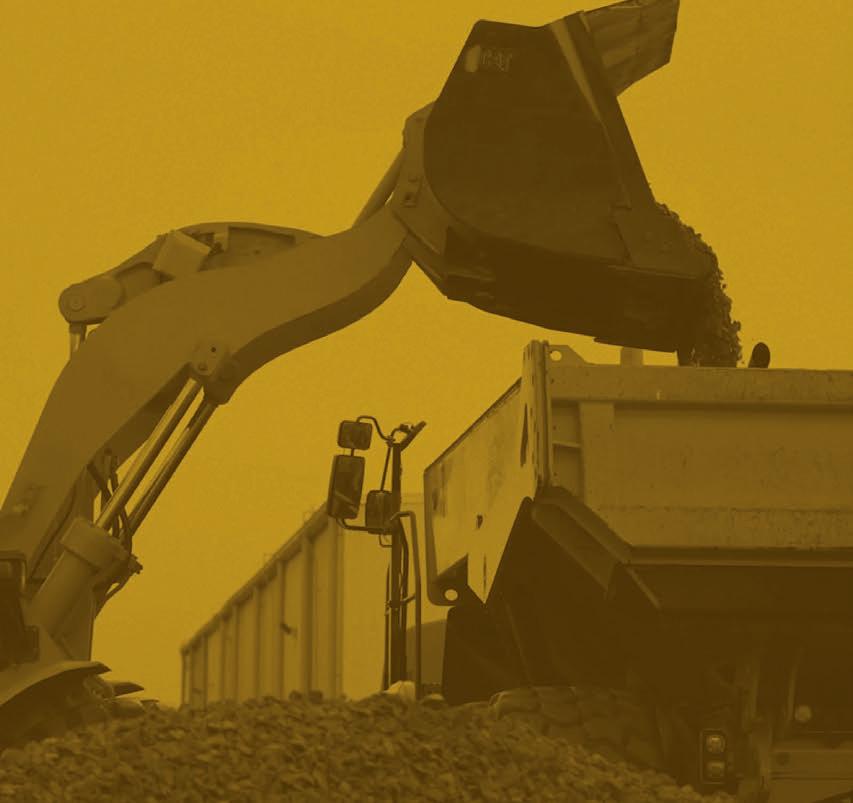

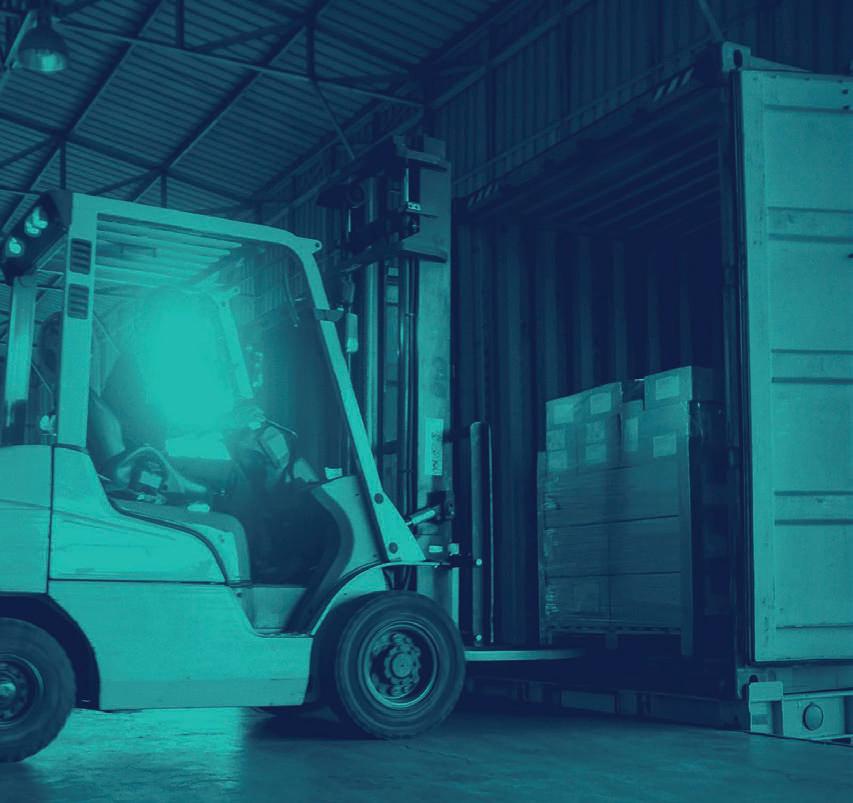


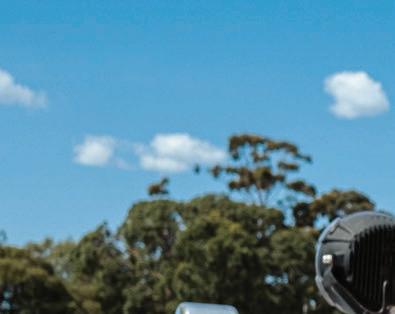


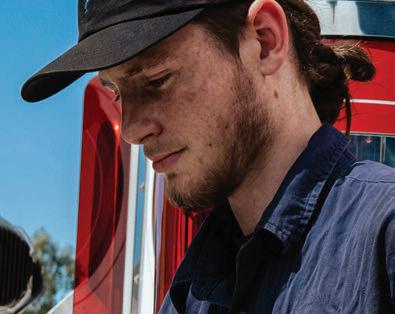

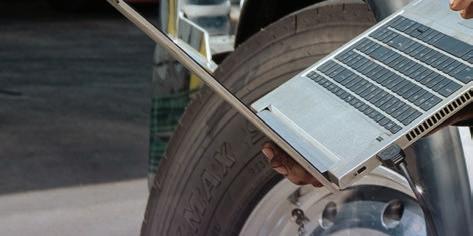


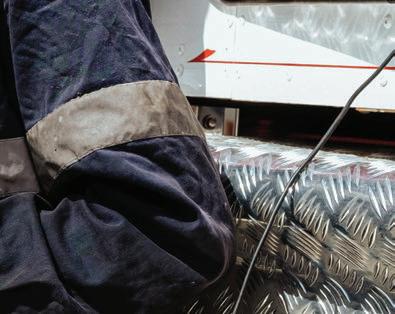
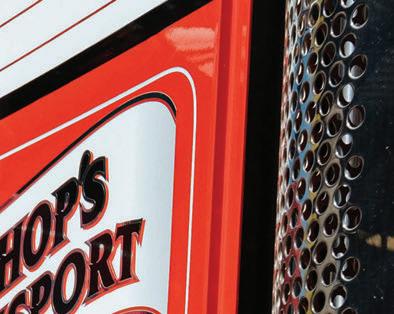
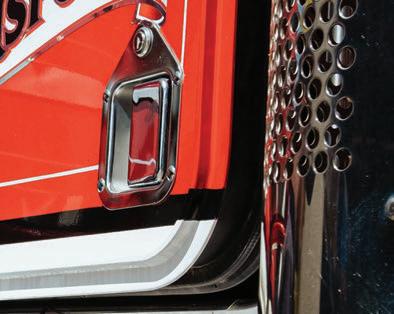
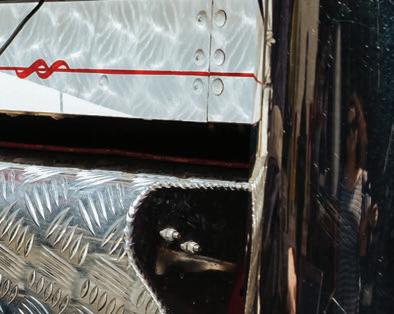







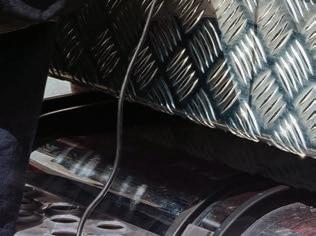


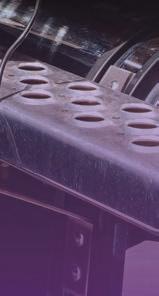









At Capricorn, we’ve done the hard work for you. With one consolidated trading account across thousands of suppliers, we’ve got all the parts and services you need to run a successful heavy vehicle business. It takes the hassle out of managing multiple payments – plus you’ll earn Capricorn Rewards Points for every dollar you spend, putting cash in your back

Find out more about the benefits of belonging to Australia’s largest coop for automotive.
One trade account Quick access to parts & services
Generous Rewards Program No joining fee
WHEN your business is logistics, e ciency is always of the essence.
at’s why Sean Carren, managing director of Goldstar Transport, reckons joining Capricorn was one of the best business decisions he ever made.
“We started this business 20 years ago with one truck and now we’ve got over 430 people employed and over 500 pieces of licensed equipment on the road,” Sean said. “Capricorn’s been a key part of our success story over the last 20 years.”
Capricorn is Australia’s largest automotive cooperative, providing access to a wide range of Preferred Suppliers, nance, operations, diagnostics and business protection products and solutions to

28,000 independent workshop owners across Australia and New Zealand. Having a Capricorn Trade Account means Members can access all the Preferred Suppliers they need and only pay one bill at the end of the month.
Goldstar Transport is a family business that opened its doors in 2004. e company provides transport,
warehousing, distribution and logistics solutions across the length and breadth of Western Australia to a wide range of industries, including fast-moving consumer goods, steel and mining. Sean aims to be the benchmark for transport providers in WA. Sean said being a Capricorn Member means the business is able to access “everything
we need, when we need it”.
“Capricorn provides us with instant access to everything that we need straightaway without having to go and nd the particular part for a new truck or an older truck,” he said.
“It really gives our workshop a signi cant advantage by bringing down the number of suppliers that we

THE National Heavy Vehicle Regulator (NHVR) recently shared news of its Rollover Stability Control (RSC) testing to highlight the technology’s effectiveness.
In footage released by the regulator, it showed how the vehicle performs when the RSC is active, compared to when the technology is switched o .
Following the testing, the regulator said, “ is success-
ful trial marks a landmark achievement in heavy vehicle engineering and safety, demonstrating the bene ts that RSC technology can provide to heavy vehicles.”
A specialised A-double was
used for RSC the research project, which took place over the course of four days.
e vehicle combination was pushed to its limits, performing high-speed dynamic manoeuvres used in PBS assess-
have to deal with. We know if they’re a Capricorn supplier, we can deal with them straightaway, get the part and get our truck back on the road. It just makes things so much easier for our team.”
Capricorn’s list of Preferred Suppliers includes workshop equipment providers and business essentials suppliers for everything from account-
ing services to telecommunications to training.
When Goldstar opened it had one part-time mechanic.
“Back then Capricorn provided the access to a few bits and pieces we needed,” Sean said. “Now we’ve got 30 guys between two workshops, and nine apprentices.
“ e training we need, the access to information, the

ments. “ is showcased the signi cant safety improvements that RSC technology can o er whilst contributing towards a safer future for all road users,” said the NHVR.
e testing program and research project was undertaken in conjunction with partners National Transport Research Organisation, Kenworth Australia and the Australian Automotive Research Centre.
ability to get parts, is one thing, but then to have the relationships with people to be able to get our equipment back on the road as quickly and e ciently as possible – Capricorn is a key part of that foundation of our business.”
Capricorn has solutions for a range of business needs. For example, Members can access business, home and vehicle protection and funding for purchases and business expansion. In 2022/23, Capricorn Finance assisted Members by providing $49.8 million in loans. Being a cooperative, Capricorn is Member-owned. So, the company’s pro ts go back to its Members.
“I can’t speak highly enough of Capricorn,” he said. “ e account managers that we’ve had over the years, how easy they make it for us to do business… how easy they make it to get our eet back on the road. Capricorn provides us with a really good advantage.”
Sean urged other business owners in the commercial transport and logistics sector to take a close look at Capricorn to see what it can do for their businesses.
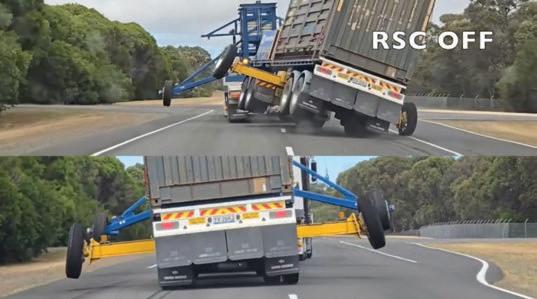



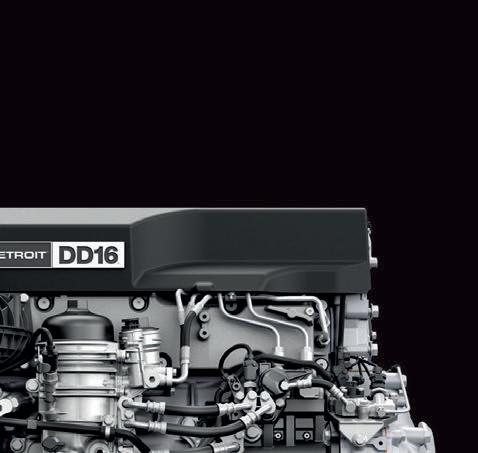

@ 1,800 RPM
1,850-2,050
lb-ft @ 975RPM
Extreme duty and heavy hauling for your biggest jobs
Detroit’s most powerful truck engine ever, the DD16 boasts up to 600 horsepower and 2,050 lb-ft of torque. The big bore workhorse provides efficient and dependable power and performance without compromise.
Advanced combustion and aftertreatment technology exceed future emissions requirements whilst retaining exceptional fuel efficiency and uptime.
This power, performance, and efficiency are backed by the most comprehensive warranty and extended coverage packages, ensuring the highest level of support for our customers.
When you buy a Detroit product, you’re buying billions of miles of engineering excellence. Tried and true, Detroit engines are built to ride the roughest roads. With Detroit, there’s no compromise.
detroitanz


SHELL Rimula has partnered with Big Rigs in a big way – so there’s even more reasons to send in your best truck shots.
Each month, the Big Rigs team will choose a #PicOfTheMonth, with the lucky winner receiving a $500 Shell Coles Express Gift Card.
Keep an eye out for our regular posts on the Big Rigs National Road Transport Newspaper Facebook page, calling
for your best truck photos and add yours in the comments, or email them to kayla.walsh@ primecreative.com.au.
Don’t forget to include a brief note about the truck and where the photo was taken. We’ll feature some of the best photos in each edition of Big Rigs Newspaper, with one winner announced each month. Keep those amazing truck pics coming!



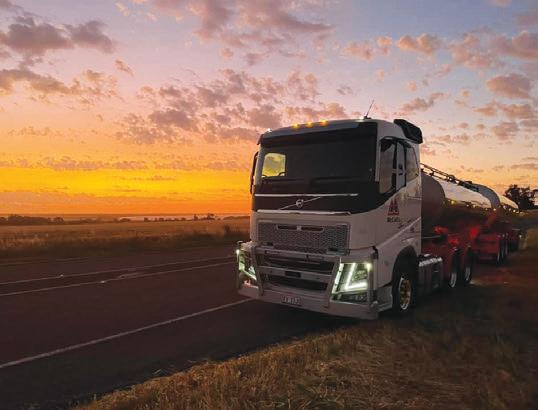

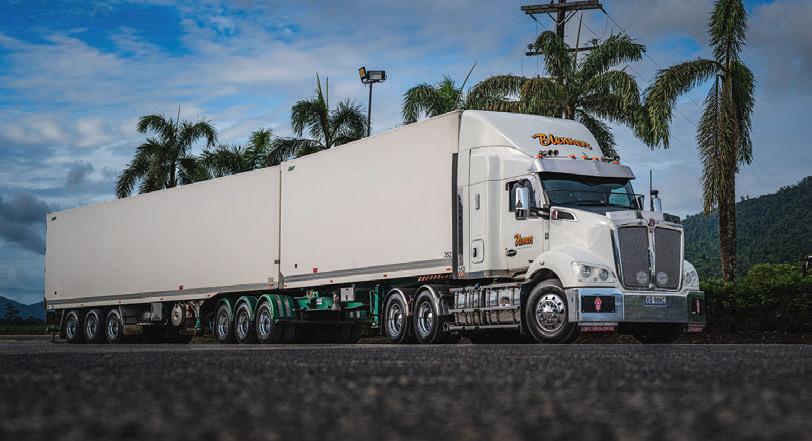
When the going gets tough, truckies keep everyone going








MAY
May 18–19, 2024
Rocklea, Qld
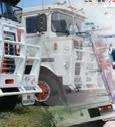





THERE are so many great truck shows and events coming up soon – here are some dates for your diaries.
Heritage Truck Association Truck Show
Facebook: Heritage Truck Association Australia Inc
Held at Rocklea Showgrounds, this display of veteran, vintage and heritage trucks, vintage tractors, stationary working engines and vintage cars will interest any vehicle enthusiast. Attendees can also expect trade stalls, a ra e and food and drink. Entry $5 adults, children under 14 free. For further information phone Mark on 0448 111 105, or John on 0477 499 530.
Transport Women Australia Ltd – Living the Dream Conference
May 30– June 1, 2024 Essendon Fields, VIC transportwomen.com.au/
events e conference kicks o with a pre-conference tour of Pac-

car, which includes lunch, and a concurrent session with Healthy Heads in Truck and Sheds. Cindy Parker (director of operations at Americold LLC) has been announced as a keynote speaker. Ellen Voie, founder of Women in Trucking from Wisconsin, will also be speaking at the event. An awards dinner is on June 1.
JUNE
Alexandra Truck, Ute & Rod Show
June 9, 2024 Alexandra, VIC alexandratruckshow.com.au
e Alexandra Truck Show is back on the long weekend in June this year, with a Sunday Show ‘n’ Shine on the town’s main street, as well as live music, a Victorian woodchop tournament, exhibitions, trade displays, kids’ amusements and a ra e. Come down on Saturday for the local markets, a convoy and truck drivers’ memorial service at 2pm and sponsors’ dinner at 6pm. For more details email trucks@alexandratruckshow.com.au or phone Gordon Simpson on 0409 577 212.
JULY
Camp Quality
Adelaide Convoy for Kids
Jul 6, 2023
Victoria Park, Adelaide, SA fundraise.campquality.org.au
To celebrate National Female Truckies’ Day this year, WiTA and Camp Quality are teaming up to host a day “for the little kids AND the BIG kids”. Supporters will cheer on Camp Quality’s rst ever Adelaide convoy, as they travel a 40km route around Adelaide and Port Adelaide, starting and nishing at Victoria Park. e event venue will also host a free
family fun day, packed with entertainment and experiences including food vans, kids’ rides, face painting, live music, and more. Attendees can check out the trucks and motorbikes on display at a Show ‘n’ Shine after the convoy.
AUGUST
Casino Truck Show
August 3, 2024 Casino, NSW casinotruckshow.com.au
e Casino Truck Show is back – with over 600 trucks expected from all over Australia. Truck registrations ($30 each) will take place from 6am to 9.45am. e street parade is at 10am, and award presentations will take place at 3pm, with over 70 trophies up for grabs. Entertainment will include Mossy Rocks and the Tony Q Band, who will be rocking out from two separate stages. For more info email info@casinotruckshow.com.au or Darren Goodwin at dtgoodwin1@ yahoo.com.au or phone (02) 6660 0300.
SEPTEMBER
American Iron Echuca Truck Display


September 7-8, 2024 Echuca Rotary Park, VIC campaspe.vic.gov.au
All makes and models of trucks are welcome at the American Iron Echuca Truck Display. Attendees can look forward to modi ed tractor/mini tractor pull demonstrations, on-site camping and catering, club merchandise and trade stalls, as well as live music by Van-yt.
MEGATRANS
September 18 -19, 2024 Melbourne Convention & Exhibition Centre, VIC megatrans.com.au
Leaders from across the supply chain will gather in Melbourne to discuss the future of the logistics industry at MegaTrans, an integrated trade expo and conference reserved for companies o ering advanced technologies and services. Experts will discuss the issues that are shaping the future of the sustainable supply chain, including workplace diversity and real estate planning.
• Have you got an event you’d like included? Email details to kayla.walsh@primecreative. com.au.

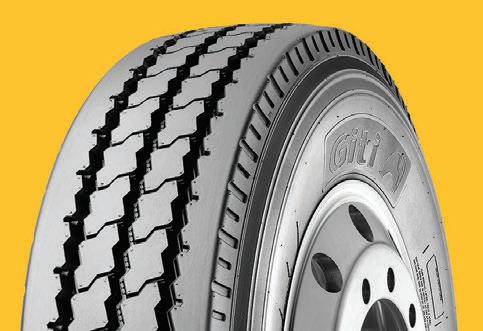

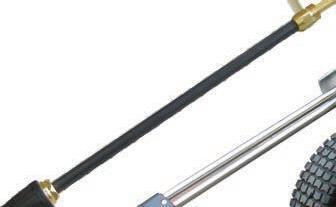







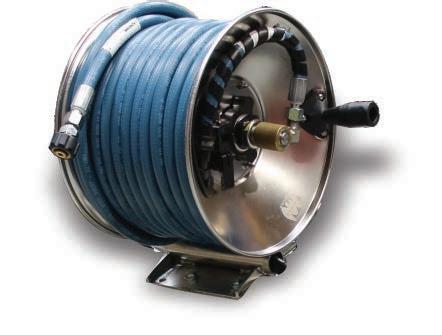


IN the world of heavy-duty diesel engines, a signi cant 40 per cent of problems arise from insu cient cooling system maintenance. e allure of cost savings can lead us to search for cheaper coolant options. While opting for a cheaper coolant may seem like a savvy nancial decision, the hidden costs associated with such choices can outweigh the initial savings.
1. Reduced engine efficiency
Cheap coolants often lack the advanced additives and corrosion inhibitors found in Fleetguard coolant. is deciency can result in accelerated corrosion and sediment build-up within the engine, compromising its e ciency over time. e long-term consequence is a decrease in fuel e ciency and overall engine performance.
2. Increased maintenance costs
Unlike many coolants out there, PG Platinum coolant is a popular choice among heavy duty engine owners because it’s also silicone-safe.
is means that our products don’t contain 2-ethylhexanoic acid (2-EH), which can cause silicone hoses, seals and gaskets to lose their exibility and elasticity, ultimately leading to coolant leaks.
3. Higher risk of cavitation
e PG Platinum is a propylene glycol-based premixed coolant that uses organic additive technology (OAT), specially formulated to provide advanced, long-lasting protection against corrosion and liner pitting (also known as cavitation) in your engine. It’s compatible with di erent elastomeric seals, gaskets, plastics and metal alloys used by OEM heavy-duty engine manufacturers.
4. Shortened coolant lifespan
Quality coolants are designed to withstand a wide range of temperatures and provide long-lasting protection. In contrast, cheaper alternatives may have a shorter lifespan, requiring more frequent coolant changes. e constant need for replacement not only

incurs additional costs but also contributes to environmental waste.
5. Compromised warranty coverage
PG Platinum is fully supported by the Fleetguard Global Warranty and can be used across a range of original equipment (OE) brands, such as Caterpillar, Cummins, Detroit Diesel, John Deere, Mercedes, Volvo and Waukesha.
e initial savings from choosing a cheap coolant can
quickly dissipate when considering the hidden costs associated with engine damage, reduced e ciency, and increased maintenance.
Prioritising the long-term health of your engine by investing in Fleetguard coolant is a wise decision that pays o in performance, e ciency, andnancial savings down the road.
For more information on the quality coolants o ered by Fleetguard, visit: eetguard. com/s/coolants-chemicals?lan guage=en_AU.

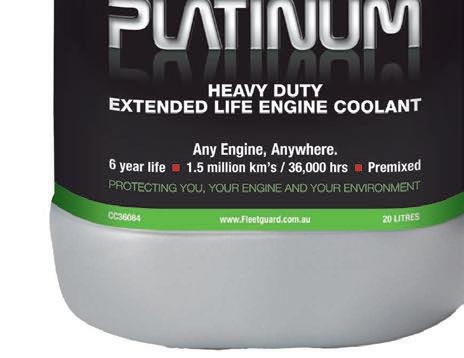





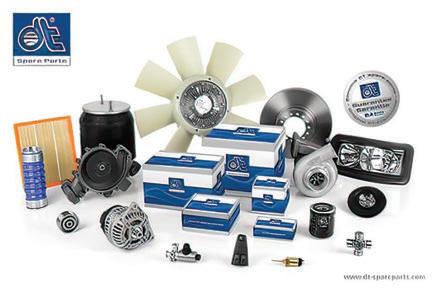




LELOX Signature Series stainless steel truck mudguards are the only stainless-steel truck mudguards made in Australia.
In an era where the global marketplace is inundated with foreign-made products vying for attention, LELOX proudly stands as a beacon of Australian manufacturing, unwavering in its commitment to quality, integrity and innovation. With the launch of our latest masterpiece – the Signature Series 304 Grade Number 8 Mirror Finish Mudguard, with a thickness of 1.5mm – we’re not just setting a new standard; we’re rede ning excellence in the trucking industry.
At the heart of the newest o ering lies a dedication to Australian-made excellence. Unlike some of our competitors who resort to outsourcing products from overseas manufacturers, LELOX remains steadfast in our commitment to local manufacturing. Our Signature Series Mudguard is proudly crafted right here in Australia.
In today’s competitive landscape, foreign made products may promise similar features and bene ts to Lelox products, however they often fall short when it comes to quality, reliability and price!
Our competitors can stretch the truth about their mudguards, touting exaggerated
claims and unsubstantiated promises in an attempt to lure customers away from Australian-made products.
When comparing products, make sure you are comparing apples with apples. Our 304 grade stainless steel mudguards will be substantially cheaper than American made fenders. Our 430 grade mudguards, the same. We have seen Chinese produced mudguards using inferior stainless steel. ese mudguards do not meet the harsh requirements of the Australian landscape.
LELOX is known and trusted by Australian truckies. Our quality is measured by our strong distributor network that stocks and sells our product nationwide. It’s trusted by the generational truck driver who has been driving the same truck for over 1 million kilometres with the same mudguards still functioning like new. It’s trusted by the new truckie who appreciates the ability to customise mudguards to suit their speci c application.
LELOX is further authenticated by supplying products directly to the Kenworth factory for new trucks straight o the production line in Bayswater, Victoria.
At LELOX, we believe in transparency and authenticity. What sets our Signature Series

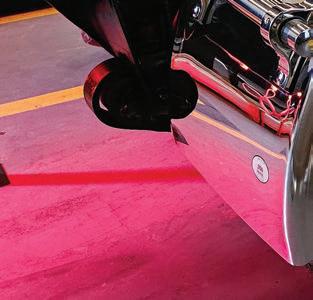
Mudguard apart is not just its superior quality and craftsmanship, but the assurance that it is the only stainless-steel truck mudguard made in Australia. Each mudguard bears the hallmark of our commitment to local manufacturing, proudly displaying the “304 Signature Series Australian Made” logo
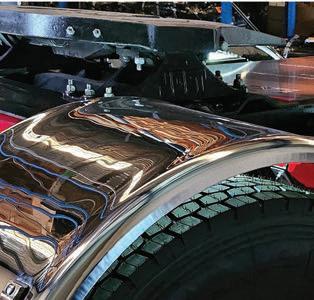
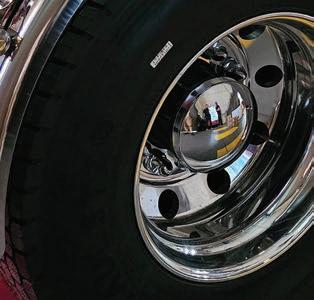
as a testament to its origins.
Beyond its exceptional durability and aesthetics, our Signature Series Mudguard embodies a deeper ethos – a belief in supporting local industries, empowering Australian workers, and contributing to the growth and prosperity of our nation. When you sup-


port Lelox, we can support our team, their families and our community through sponsorships and donations.
As we navigate the ever-changing landscape of the trucking industry, one thing remains constant – our unwavering dedication to Australian-made quality.

With the launch of our Signature Series 304 Grade Number 8 Mirror Finish Mudguard, we rea rm our commitment to excellence, innovation, and integrity. Join us in celebrating the spirit of Australian manufacturing and discover the difference that true quality makes on the open road.
AT this busy time, it’s easy for the end of nancial year to creep up unnoticed. Aussie Pumps would like to alert small business owners to the Government’s Instant Asset Write-o , which nishes on June 30, 2024.
Instant Asset Write-off
Aussie Pumps is urging owners/operators to consult with their tax agent to determine if they are eligible. Companies with a turnover of less than $10 million can get the bene t of instantly writing o assets worth individually up to $20,000, that are bought this nancial year.
e bene ts are enormous!
Business owners and purchasing managers need to understand that now is the time to buy and take advantage of these tax incentives.
Aussie Pump’s nance manager Brian Cocker said, “Noone wants to pay more tax than they have to, and the current Instant Asset Write-o for small businesses is set to end June 30.”
Time to step up to the power of steam
A lot of people in the transport industry are unaware of how e ective steam cleaners

really are. Most use cold water pressure cleaners, but the complexity of burning diesel fuel in an electric powered pressure cleaner, or for that matter, a Honda engine drive unit, seems complex. e concept of the steam cleaner is quite simple. Diesel fuel is burned with the heat variable based on the amount of air mixed with the fuel. e
high pressure water heats as it goes up through the heater coil. e operator has the ability to adjust the amount of air, a simple way to manage temperature.
Cleaning with hot water and steam has several advantages. It’s more e cient, cutting cleaning times by up to 75 per cent, using less water and less chemicals. It’s also
more hygienic. Using hot water to clean away oil and grease from machinery is not only faster, but it also helps to identify hydraulic leaks prior to service, facilitating less equipment down time.
Aussie Pumps has noticed more and more transport companies and owner operators are investing in steam cleaners
when they need to clean engine bays or hydraulic equipment. Although the ‘hot wash’ range was originally only electric drive steam cleaners with diesel burners, the new range also includes portable Honda engine powered machines like the Aussie Heatwave.
It’s undeniable that steam or at least hot water at around 80°C will melt grease, making cleaning faster and often without the need for caustics or degreasers. Aussie Pumps has developed a product range which allows steam cleaners to be available from big 5000 psi machines for mines to simple 240 volt slow speed hot wash machines like the unique Aussie Sizzler.
Aussie’s Sizzler hot wash delivers 1800 psi pressure with a ow of 10 lpm. With a maximum temperature of 80°C. e Sizzler comes in a stainless steel cover over a four wheel trolley.
e secret of the machine’s success is what is under the cover. It comes with a top quality, slow speed, rst world, heavy duty Triplex pump with solid ceramic pistons. It is driven by a four pole 1450 rpm electric motor and equipped with loads of safety protection gadgets.
As a wash bay machine, it does a great job on small trucks, but for big rigs, Aussie recommends something bigger.
“We developed a 4000 psi steam cleaner called the Admiral 4000,” said Aussie Pumps chief engineer, John Hales. “ e Admiral delivers 15 lpm of ow but uses scorching 4000 psi. Combine that pressure and ow with up to 120°C steam, you get a very e cient cleaning result!” said Hales.
Portable steam… Do it in the field!
If you’ve got a requirement of on-site cleaning, the Aussie Heatwave Honda powered steam cleaner with 4000 psi gives you mobile steam cleaning capability. Although the machines are trolley mounted, the wheels can come o easily and the axles become mounting points on a vehicle. ey can be trailer, truck or ute mounted. Aussie calls it a version of their JAW (Just Add Water) program. For further information contact Australian Pump Industries on 02 8865 3500, visit aussiepumps.com.au, or email your enquiry to info@auss iepumps.com.au.
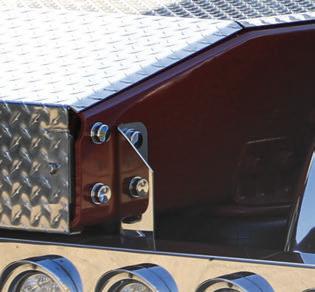






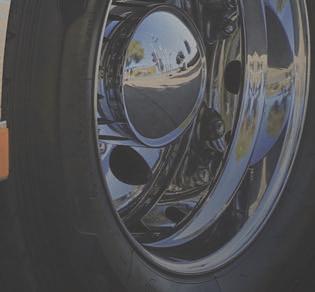























HAVING started in 1959 with a range of PTOs and pumps, Hydreco has grown its o ering and moved with the times. Its product range has grown and its products have evolved, but what hasn’t changed is the company’s commitment to the Australian transport market.
Originally called Powauto, the company was set up to produce PTOs and pumps for the truck market from a facility in Gladesville, Sydney.
rough various acquisitions, Hydreco has been known by various names over the years, though it’s always stayed true to its origins.
“With our 65-year history, we’re known in the industry as the Australian PTO people,” said Geo Ross, product manager at Hydreco. “When people in Australia think of PTOs and pumps, they think of Powauto. We’ve developed a strong reputation that we want to maintain and build upon.”
ough manufacturing was moved o -shore in 1997, all of the engineering continues to be done right here in Australia. “ is means our products are better suited to operators here, because they’ve been engineered to Australian conditions,” said Geo .
“It means we can respond more quickly to customer requirements. We know our market and we know what’s feasible. We can do things on an Australian scale rather than a worldwide scale.”
Access to better materials and changes in manufacturing processes have had an impact too – leading to better gear quality, seal improvements, and pumps with higher e ciencies and pressure capabilities.
Demand for quieter operation has seen further innova-
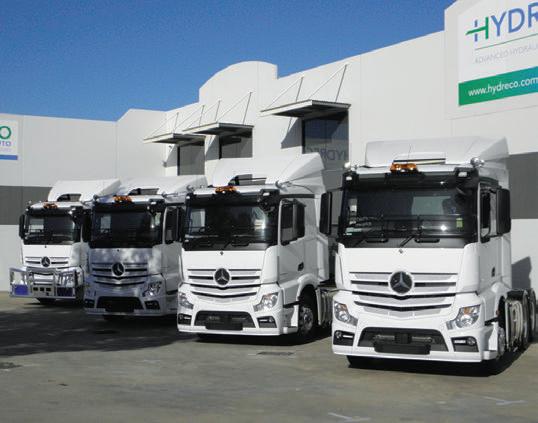

tion. Hydreco was the rst in the market to introduce an all helical geared hotshift PTO, which are designed to reduce the amount of uid borne noise generated by the PTO and then transmitted into the hydraulic system. PTOs have undoubtedly come a long way in 65 years. Once operated by a manual
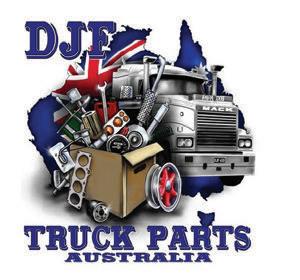

cable, then onto being operated by the truck’s air system, through to the electro pneumatic and radio remote options seen today.
“A PTO is no longer a simple mechanical device, it needs to be integrated with the truck’s electronics as well,” said Geo . An expanding range has also been driven by a change in the
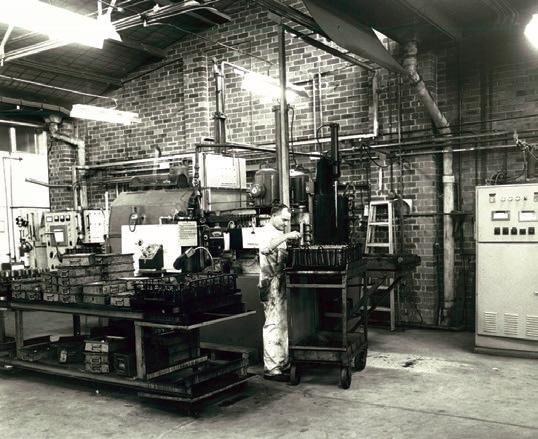

trucks on Australian roads. Back when the company was started, PTOs were built to an American standard as the majority of trucks in Australia were based on American designs. Early on, Hydreco was making a limited number of PTOs. To suit the varying transmissions, di erent spacer plates were used to adapt the product to the truck.
In time, as scale increased, Hydreco was able to diversify its product o ering. “From a limited range of PTOs with adaptor plates, Hydreco began making individual PTOs to suit the di erent transmissions,” explained Geo .
“Now, with the in ux of European trucks on our roads. e majority of European trucks use rear of countershaft (ROC) PTOs. is has enabled us to revisit the past, we’ve gone back to that earlier model, where we can have a smaller number of PTOs for these trucks, with adaptors to suit the di erent transmissions.”
While PTOs and pumps are still the company’s mainstay, its o ering extends much further.
In the early 1960s, Hydreco began o ering tipping valves. “ e main business in Australia has traditionally been tipping systems, so the acquisi-
tion of LM Hydraulics in 1985 extended our range to include telescopic cylinders. en in 1986, the company bought out omas Winch to provide hydraulic winches for things like 4WDs and tow trucks,” said Geo .
“From there, it’s been incremental, adding di erent products and aligning with other quality manufacturers to ll gaps in our range. ings like sourcing hydraulic tanks, sourcing other mobile hydraulic valves, etc. We always make sure we’re aligning ourselves with other quality companies with good reputations.”
Moving its manufacturing o shore was perhaps the biggest change in Hydreco’s history, followed three years after by a change in the way its products were sent to market.
“Prior to 2000 we had our own branches in each state, while also dealing with other companies too. But in 2000, we moved toward a distributor model. We’ve now had many of the same distributors for close to 25 years. at’s helped us to ensure consistency of supply to the end market through our network of known and established suppliers,” Geo added. “And that’s been a successful model for us.”
A company steeped in history, Hydreco’s products have proven they can stand the test of time. As Geo revealed, “We’ve still got very reliable products. Every week I’ll get enquiries or people sending photos of a PTO – and the PTO looks 40 to 50 years old and it’s still working!”
Another constant has been its loyal employees, who’ve helped to drive the business forward, with numerous members of sta with the business for over 30 years. A few people also recently retired, with more than 50 years of service under their belt.
Geo concluded: “We consider ourselves a global hydraulic and PTO player, we sell into and are represented on every continent in the world.”










SEAFOOD lovers would be happy with truckie Nathan Bennett who had delivered a huge load of prawns from Karumba to Townsville when Big Rigs saw him.
For the past 19 years, Nathan has worked for Exodas and he is based on the Gold Coast.
He says he was always going to be a truck driver, following in the footsteps of his long time truckie father John Bennett, who recently retired.
“I grew up around trucks,” he said.
Nathan, 43, was driving a Kenworth T900 which he said was a great truck.
“I am changing over trailers here and after having delivered the prawns will be going back to Karumba empty to pick up more,” he said.


e waters around Karumba abound with prawns. Located in the Gulf Country region of Queensland, it is 71km by road from Normanton and 920km from Townsville.
I recently travelled the road between Normanton and Karumba and was amazed at the number of kangaroos which hopped across it, making driving hazardous.
“ ere are many roos and some cows on the road and you have to be careful,” he said.
On his latest trip Nathan also made a delivery to the Normanton supermarket.
While on the road, Nathan says he enjoys stopping at the Bluewater Springs Roadhouse which is between the Lynd Junction and Charters Towers.
“Lots of truckies drop in there and they look after us.
e highway along there has been upgraded and even the single lane sections are good,” Nathan said.
ough he added that more rest areas were required which cater for trucks, especially with the number of heavy vehicles in the far north.
“We need more with parking space for the big vehicles and toilets and shaded places,” he said.
Nathan rates the Bruce Highway generally as the most challenging road to travel along.
“It is a disgrace and many sections need more work,” he said.
When he gets time o , Nathan loves spending quality time with family.
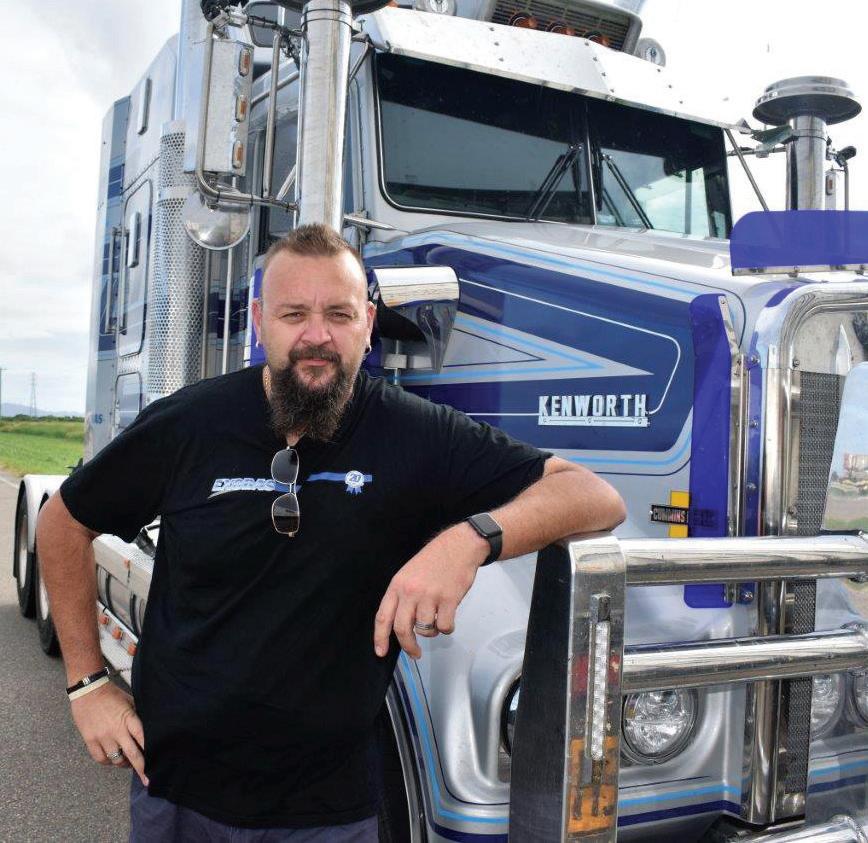



A WORKHORSE Iveco
ML180 has been used by outback driver Peter Ashman for the past 19 years.
Peter, 63, owns Escombe Downs Station located near Cor eld in outback Queensland, o the highway between Hughenden and Winton.
He uses his Iveco and dog trailer to cart cattle and hay.
I saw him parled up in Townsville recently and asked what load he had carried.
“I brought down 11 cattle for the Townsville Meatworks and have to pick up hay at Pentland along the Flinders Highway to take to my property. e Iveco has been a reliable truck and has 207,000km on the clock,” he said, adding it’s the only truck he has.
Peter says his favourite stop
when on the highway is at the Torren’s Creek Hotel which is popular with many truckies.
“I had some food there at the little café recently and it was good,” he added.
Peter also doesn’t mind a feed of KFC when in a town –in fact, I saw him leaving one of the Colonel’s stores just before we met.
But Peter does also have a soft spot for the Middleton Hotel which is near Boulia.
“ at is where I met my beautiful wife Tammy 44 years ago,” he said with a smile.
Business has been good for this station owner and his trusty Iveco over the last 12 months.
“Before that we had a drought for 12 years and after rain, things are much better,” he said.
Peter rates the 200km high-
way between Hughenden and Winton as the worst he gets along.
And being a parochial north Queenslander he barracks for the Cowboys in the NRL. Outside work Peter loves riding adventure bikes and getting behind the wheel of V8 cars.
Despite its small population, the small hamlet of Coreld has many stations nearby. Some years ago the population was only seven people and yet the town had eight liquor licenses – for annual events such as the famous Cor eld Races.
Peter says he does stop in at the Cor eld Hotel when it is open. I found Peter to be a friendly and happy driver, like most other bush and outback people I encounter.












NT road closure concerns
Road transport operators in the Northern Territory have been complaining about the length of time major highways were closed after oods.
Several have contacted Spy advising that the Stuart, Victoria and Barkly highways were closed on January 20 and reopened on April 18.
“I feel they could have been opened for tra c much earlier. e government needs to explain why that was,” one company boss told me. is company had to stand down several drivers which I am told was the case with many operators.
Whilst they fully support the road being closed for safety reasons it makes them ponder over why it took so long.
Understandably the closures had a big impact on the NT economy.
WA rest area
A rest area located along the Leonora Heavy Vehicle Bypass Road in WA has been popular with drivers.
Leonora is 235km north of Kalgoorlie and the rest area is o the Gold elds Highway.
“ ere is a shower there with hot and cold water and the pressure is great. e toilets are clean and there is a picnic table with chairs under shade,” one Perth based owner-operator told me.
To gain access to the shower drivers need an electronic key obtainable from the Main Roads Department.
Another bonus for truckies is plenty of parking space for the big rigs.
“I reckon 10 triples could t in there and because it is on
the bypass not many cars and vans stop there,” he said.
Drivers have been contacting Spy singing the praises of the ree Ways Roadhouse in the NT. It is located on the corner of the Barkly and Stuart Highways at Tennant Creek and is a convenient stop for travellers heading north, south or east.
One of the drivers who stopped there said that he ordered bacon and eggs for breakfast and it was cooked to perfection.
“I like my eggs soft and bacon crispy and that is how it was served. Many places don’t cook it how you like it,” he said.
Another truckie said the sta there were super friendly.
“ ey really know how to treat truck drivers,” he said.
e toilets and showers are clean and there are also some humorous signs in the bar.
Blitz in southern
Tasmania
It is not surprising that enforcement o cers in the deep south of Tasmania have been conducting blitzes near the scenic town of Huonville.
If you visit Huonville, which is 38km south of Hobart, you will see several crashed vehicles, which are placed at strategic spots beside the roads. ese are there to issue a deterrent to speeding motorists and warn them of the possible consequences.
I was down there recently and saw scores of trucks passing through Huonville.
ey were hauling goods and equipment to nearby locations.
Since then I have had contact from many drivers who have been advising about the blitz.

So truckies in that region should be aware of the enforcement.
Spy wants everybody to be safe and get home after work to spend time with loved ones and family.
Iconic pub reopens
e iconic and historical Lions
Den Hotel near Cooktown in far north Queensland has reopened after ooding.
Spy took a call from a Cooktown based truckie who said he enjoyed a coldie there after work in late April.
“It had been closed for months and the water level was so high that it almost reached the roof. We missed it being there. I went along on Friday night and enjoyed the atmosphere and the ra es,” he said.
e veteran added that that lots of truck drivers who were returning from the Wujal Wujal community were also stopping there and camping nearby overnight.
Wujal Wujal felt the brunt of a tropical cyclone.
Spy has spent several afternoons at the Lions Den in the past and loved it.
In recent weeks Spy has asked numerous drivers about their main concerns about the road transport industry.
Some of the answers were: stop the carnage, licensing saga, high fuel prices, low rates for some owner-operators, high registration costs, costs of repairs, failed road infrastructure everywhere west of the big city limits, lack of facilities such as toilets and shade at rests areas, caravan drivers and stringent laws.
Some of the responses were


obvious and others not spoken about much.
When Spy heard about this from several truckies I must admit to having a chuckle.
But for the drivers who have been having a snooze in the sleeper box at night in several rest areas between South Australia and Sydney, it has been a problem.
ey have complained about livestock trucks hauling either sheep or pigs which have parked nearby.
“You just can’t sleep as they make all types of loud noises such as the pigs oink and the sheep let out a baa baa. I have had to drive onto the next rest area to get some sleep,” one said Another added that the continual bleating and grunting is really annoying.
“I know it is just what they do but I wish these drivers carrying them would pull up away from everybody,” he said.
Yet another said that in addition to grunting, pigs often squeal or snort which certainly does not help anybody wanting a peaceful snooze.
One of the rst comments Spy receives from drivers when they are asked if a pic can be taken of their truck is “but it is dirty”.
Which is not surprising when you consider the rough roads and weather conditions they experience.
Not to mention the plagues of insects which collide with their semi trailers.
Most agree to pose near their pride and joys for a photo but some will not until they give it a spray.
So Spy was delighted to be sent some pics of a triple road
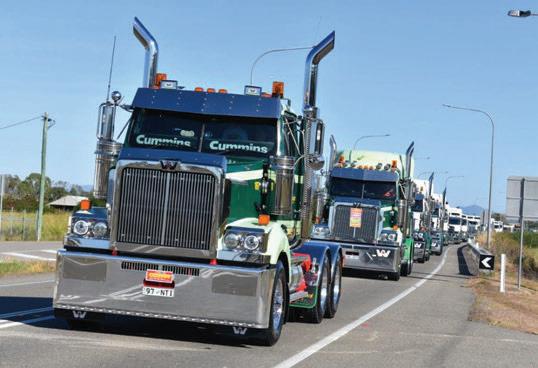

train which had stopped at Injune.
e lad was not a truckie but an avid reader of Big Rigs.
“I saw this one at the Injune Rodeo grounds wash down facility this morning ready to get a bath,” he said.
A veteran South Australian driver has told Spy that a group of o duty truckies often gather at a dog park in Renmark where the gossip and news about the road transport industry ows.
“We talk about all things that a ect the industry and try and solve the problems of the world,” he said.
ey are all dog lovers and some even take their pet with them on trips.
e annual Townsville Convoy for a Cure to be held on Sunday May 26 looks like being the biggest ever.
Major North Queensland company Northern Stevedoring Services (NSS) has got behind the event with a big sponsorship.
NSS has committed $20,000 to the convoy – the largest in the convoy’s nine year history.
Convoy director Todd Martin said he was pleased to welcome such a company as NSS with this funding being passed directly to e Cure Starts Now Australia, another Townsville based organisation that acts locally with research providing global answers to pediatric brain cancer.
“ ere’s a lot of freight companies in the city that are al-
ways involved but to have a company like NSS which is obviously all over Queensland, regional, but based here in Townsville, I hope this is the answer on the edge of the hill that pushes the rock over from my point of view,” he said.
NSS general manager Mark George said the annual convoy was a big thing for local logistics and transport.
“With its charity link to e Cure Starts Now, our management and sta thought what better way to highlight the importance of research into this dreaded disease,” he said. e convoy, including trucks and motorcycles, depart from Webb Drive, the Bohle, arriving via a predetermined route to Ross Dam Park under the management of the Queensland Police Service.
Injured rider thanks truckies e rider of one of those small scooters which abound around Australian streets fell o onto the bitumen and su ered a lot of cuts and bruises.
I saw the 50-year-old walk into a popular watering hole for drivers and he was in pain with gravel rash wounds everywhere.
Not to mention a couple of broken ribs.
“I had just rode across a railway level crossing and the bitumen was a bit rough around it and fell. Several truck drivers were unloading at a nearby depot and raced over to see that I was okay and they helped me big time. I didn’t get their names but hope they see this,” he said.

AS WiTA’s “Foot in the Door” female driver training program moves into its second year, we’ve watched with growing concern the emergence of a number of adverse behaviours that continue to negatively impact the training experiences of female students.
For decades, predominantly male trainers have trained predominantly male students - creating an environment more akin to a Saturday afternoon pub sesh with the boys.
Anecdotal evidence suggests limited diversity in the heavy vehicle RTO space sees some organisations continuing to utilise 20th century training approaches rather ensuring staff complete critical gender diversity training.
Recently, I fielded a call from a WiTA student who, having completed day one of her HC driver training, was left feeling unsupported, incompetent, and questioning
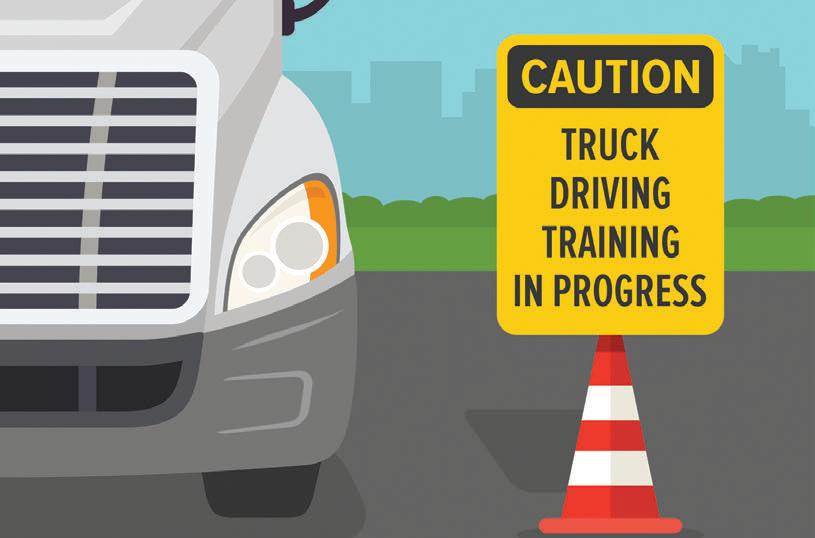
why she’d even considered trucking as a career choice in the first place.
Like it or loath it, SA law allows C class drivers (on completion of a T.I.L.E. course) to sit for an HC licence.
Not having set foot in a truck, our student was immediately directed out into freeway peak-hour traffic on a route that navigated a steep hill through numerous sets of lights in a semi-trailer.


During this nightmare experience, the trainer constantly grabbed the wheel while chatting about personal family issues, how the truck suspension was interesting for female students with “big tits” and sharing his views that the women he most gets on well with are the ones happy to talk about “beer and dicks” - all this while playing with his phone. Students come from diverse backgrounds, have

different training needs and learning styles and so require different teaching approaches.
In an effort to demystify the dos and don’ts of working with women, the following intel is tendered as opportunities for improvement in the female heavy vehicle driver training space.
The first sits around every trainer’s responsibility to determine their student’s level of experience and knowledge
before modifying the training so their needs are individually addressed.
Women ask a LOT of questions. The more information you provide – the better. Women are not risk-takers. They are cautious, thorough and like to understand a task thoroughly BEFORE they attempt it.
If a student repeatedly asks the same question, they don’t understand your answer. Your job is to explain further - rather than respond with an eye roll.
Women are extremely uncomfortable when you talk about dicks and tits. They are with you to learn about trucks and driving. Most aren’t interested in your personal life – preferring instead that 100 per cent of your attention be given to their training.
Providing students with honest, positive feedback is critical. Sniggering is not considered positive feedback. Any misunderstandings are more likely the result of training gaps and lack of information – rather than student incompetency.
Making assumptions about a student based on that student’s gender is an ideology best left in the 1950s where it belongs. In 21st century Australia, RTOs have two choices – embrace the opportunity to train women who have limited trucking experience or exclude a growing market and only work with students from a ‘handson’ background who require less effort to train.
WiTA’s focus is to ensure our “Foot in the Door” students are trained in non-judgemental, supportive environments.
We believe diversity and inclusion train-the-trainer programs are imperative to ensure RTOs provide respectful, safe and equitable training experiences for female students.
At this point, I’d like to recognise and applaud all the professional HV driver-trainer entities we’ve had and continue to have the pleasure of working with.
Driver training is the gateway to trucking careers for women, so let’s all work to ensure their introduction to the sector is one they can look back on with a sense of pride and accomplishment.
Discussing driving routes and potential challenges BEFORE students leave the yard is critical. On the other hand, discussing other female students and sharing their personal information with current students is a major privacy breach.



 WOMEN IN TRUCKING
LYNDAL DENNY CEO, Women in Trucking Australia
WOMEN IN TRUCKING
LYNDAL DENNY CEO, Women in Trucking Australia

IF you’re reading this (and you’re in the industry), then you’ve probably heard about the “truck driver shortage” that’s currently plaguing the industry.
Look, I’ll be honest. ere are hundreds of thousands of truck drivers out there. Many of them are good. Many of them are also willing and able to work when presented with the right opportunities.
But this is the truth. ere is no shortage.
We as a society and an industry just don’t value truck drivers as much as we once did – and this is a downright national disgrace.
It is causing good drivers to leave the industry and nd other work, and that is why we are struggling to nd the best drivers to do the best work.
Australia’s economy relies incredibly heavily on transport and trucking.
e current “shortage” not only a ects the e ciency of logistics but also highlights deeper societal issues which I’ll be brutally honest about.
What is the state of the current driver shortage?
e shortage of truck drivers in Australia has reached a critical point.
ere’s a signi cant gap between the demand for truck drivers and the number of quali ed professionals ready, willing and able to ll these positions.
is gap has led to delays in deliveries, increased costs for businesses, and added pressure on existing drivers who are often overworked.
According to the National Skills Commission’s April 2022 spotlight, “Recruitment Di culty for Truck Drivers”, the number of online job ads for truckies increased by 101 per cent from February 2020 to April 2022, compared with 59 per cent for all occupations. However, the number of people employed as truckies has not increased at any meaningful level.
Recruiters also reported a “recruitment di culty” for hiring truck drivers, rising from 53 per cent in 2020-21 to 71 per cent in 2021-2022.
What’s causing the truck driver shortage?
Several factors are said to contribute to the ongoing truck driver shortage in Australia. Here are three of the ones I nd most illuminating.
1. Ageing population
Because Australia is getting older generally, it means many experienced truck drivers are

nearing retirement age. is ageing workforce has naturally contributed to the shortage of drivers, as there are not enough younger people entering the profession to ll the impending gaps.
e Department of Transport in Victoria projected that the rate of truck driver recruitment in the industry will need to increase by 150 per cent to account for the uptick in demand for road freight and to “replace retiring and/or aging truck drivers”.
2. No clear way to become a driver out of school
Another critical factor contributing to the driver shortage is the lack of a clear pathway for individuals to enter the trucking industry after completing their education.
For many teenagers, it’s incredibly di cult to get your foot in the job in, say, a warehousing role. It’s also very dicult to get so much as a forklift licence.
Unlike some professions that o er structured educational and training programs, becoming a truck driver often lacks clarity and guidance. is ultimately gets candidates tired of looking at a very early stage, potentially putting o a truck driving career for the rest of their lives.
3. e job has a bad image e truck driving profession su ers from a terrible image problem.
Many people perceive truck driving as a tough, physically demanding job that is not conducive to a healthy work-life balance – and that’s often because, for a lot of drivers, it is. is former truck driver recently commented on a post I made on LinkedIn about the issue:
ese conditions have ultimately frightened a lot of people. And this has led to a lack of interest from younger generations and contributes to the overall shortage of drivers in the industry.
Changing this perception is crucial to attract a more diverse pool of talent into the industry.
Okay, but what’s REALLY causing the shortage?
While the above factors contribute to the driver shortage, there’s a deeper issue at play –the lack of respect and recognition for truck drivers within society and even among some employers.
Truck drivers play a vital role in keeping the economy moving, yet they often face disrespect, long hours, and challenging working conditions.
Take a look at some comments from real people in the industry who’ve been more than honest on my post about the driver shortage on LinkedIn:
• the ‘peasants’ of society,
• unskilled labourers,
• glori ed mailmen or mailwomen, and
• people who can’t do anything else.
is perception is not only inaccurate. It is hurtful and harmful.
colleges and universities can play a crucial role in addressing the driver shortage by providing clearer pathways for students interested in pursuing a career in truck driving.
is includes things like:
• showcasing work experience opportunities,


is lack of respect – unfortunately - translates into lower wages, inadequate bene ts, and limited career advancement opportunities for drivers.
It has also led to a surge of regulation, with incredibly strict rules on how drivers do their jobs, from tra c infringements to recording time in their logbook:
• o ering vocational training programs, and
• partnering with industry experts for hands-on experience.
is will all highlight the potential for career growth and stability in the trucking sector.
For recruiters: Make the job look more attractive & accessible

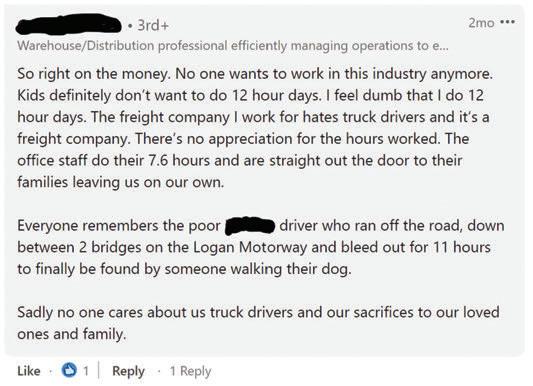
Society’s perception of truck drivers is downright wrong.
Many Australians see truckies as:

So, how can we fix the driver shortage?
ere is no one solution.
Addressing the truck driver shortage requires a multi-faceted approach.
It involves stakeholders across the industry and society as a whole.
Here are some key strategies to consider:
For schools: Show a clearer path to become a driver Educational institutions from high schools and TAFEs to
cruit women, Indigenous Australians and individuals from diverse backgrounds.
For managers: Treat drivers how you want to be treated E ective management practices are essential for retaining and motivating truck drivers.
Managers should:
• prioritise driver safety (in line with their CoR obligations),
• provide adequate training and support,
• ensure fair compensation and bene ts, and
• actually treat drivers with respect.
Creating a positive work environment where drivers feel valued and respected can signi cantly reduce turnover rates and improve job satisfaction.
For society: Understand that drivers are fundamental to how you live Truck drivers put food on your table.
Truck drivers deliver your mail.
Truck drivers transport your supplies across the map.
Truck drivers literally keep Australia moving, 24 hours a day, seven days a week. Society as a whole needs to recognise and appreciate the critical role that truck drivers play in everyday life. Encouraging a culture of respect and appreciation for drivers can help shift public perception and attract more individuals to the profession. ere is no ‘shortage’ problem. ere is an ‘attitude’ problem.
Recruitment e orts must focus on making the truck driving profession more attractive and accessible to a diverse range of candidates.
is includes promoting the bene ts of a career in trucking, such as competitive wages, exible schedules, and opportunities for advancement.
A business development manager in the industry had this to say on one of my posts:
Addressing Australia’s truck driver shortage requires a comprehensive approach that tackles both the immediate challenges, such as demographic shifts and educational barriers, and the deeper issues of respect and recognition within society and the industry. It won’t be until we work together to promote the value of truck drivers and creating a more supportive and inclusive environment, that we can actually ensure a sustainable future for the transportation sector and the broader economy.

Recruiters should also prioritise inclusivity and actively re-







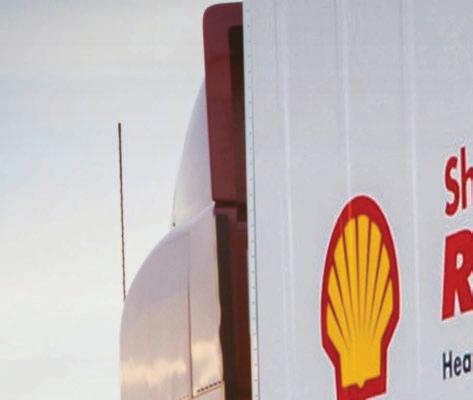



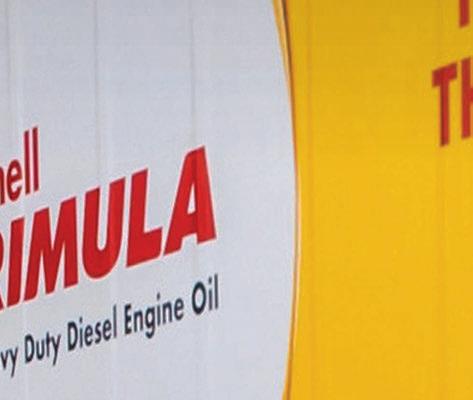












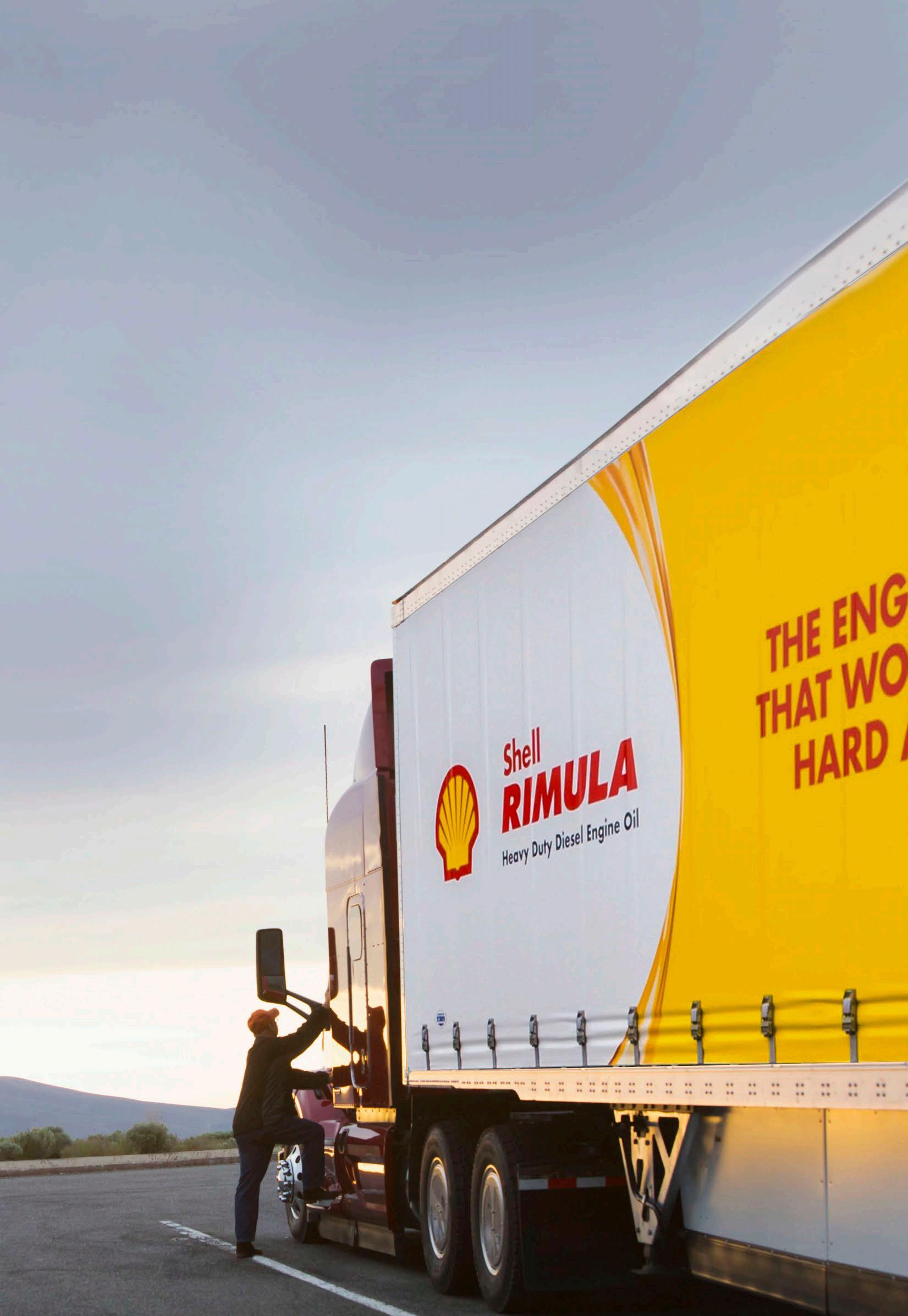


A RECENT Big Rigs article regarding Ron Finemore’s presentation at the Trucking Australia conference in Canberra begs the question:
“Do the pundits that started as owner-drivers, drivers, or even loaders, not remember what it is like on the highway – or do they need a mud map to find their way back?”
Finemore commented that the Austroads’ recommendations – and others on licensing – have been discussed, tentatively agreed upon, discussed again, then seemingly put in the ‘too hard to implement basket’ – just like the many other talkfests that use valuable resources, and end up collecting cobwebs on the shelf.
In the meantime, drivers and other road users are dying, or getting seriously injured.
A sad indictment of the industry today is that so many lives are being lost yet record amounts of money are being granted for safety initiatives.
Some of the pundits have advocated, for years, for overseas trained and licenced drivers to come here to fill the ever-increasing drivers’ gap. Finemore headed the charge at one point.
Love him or hate him, Ron Finemore does have a point. However, we’re not sure how he expects to have drivers now with experience of Australian roads and safety cultures.
There is plenty of noise about “supporting” and “training” drivers, but with approximately 200,000 licensed HV drivers already in our country, we need to ask WHY we still have the shortage, and why we need to import drivers from overseas?

• Could it have something to do with our drivers not being adequately compensated/renumerated for the work, knowledge, experience, and risk they have? We need to look at the remuneration for the job tasks compared to the rest of the working world.
• Could it have something to do with prices being pushed so low that most operators are just making enough to “cover expenses” but imported drivers are willing to work in conditions that Australian drivers just won’t do – like working three- or four-up in the one truck?
• Could it be that many companies are happy to
train their drivers, but the drivers then take that minimal experience and start their own business? The risks the first business took during the training period are then lost to that business’s ranks and the “new” business can undercut the training company because they don’t have the same expenses that the training incurs.
• Could it be that a lot of non-industry business owners, e.g. accountants looking for a tax dodge, start small business and lack care and knowledge about trucks and drivers?
The care factor being on the bottom line, not how the money is made.
• Does this mentality cause or feed into more undercutting of contracts in the industry?
Quick answer: YES to all of the above.
What’s the real reason these recommendations haven’t been implemented? We need to look at the top of the CoR to where the buck stops and starts – the NTC, the Industry Advisory Group (IAG) and their university modelled recommendations.
Just as a doctor who prescribed multiple medications would be questioned, or investigated, through the Australian Health Practitioners Association (AHPRA) if there is a resulting accident/ incident, why isn’t the trans-
port industry’s equivalent bodies held to the same account?
In the transport industry, who monitors the multiple ‘safety initiatives’ and identifies contradictions? Whatever happened to appropriate experience, common sense, camaraderie, or just plain respect? Legislation, safety initiatives and compliance seem to have happened.
The blame, enforcement and fines always seem to fall at the drivers’ feet. But should it?
The BNH would be divorced by their children and partner if they tried half the safety and compliance BS the drivers now work under.
Is it simply a stealthy way
for owners and insurance companies to avoid paying out of their pockets? That magic piece of compliance paper the driver signs fancifully appears to indemnify the company.
What has the current one-day course to upgrade your driver’s licence taught a driver? It teaches them how to pass a test and little else, certainly not how to drive in the diverse conditions that Australia has, how to identify and manage your fatigue, or how to fill in your work diary. If the enforcement officers are getting it wrong, how do we expect drivers to get it right without adequate training?
How many more years and how many more deaths will we need to have before the lunacy of the HVNL will be simplified?
The HVNL is currently not being understood on either side of the enforcement v. industry coin – example the yellow pages may not actually need to be pulled out if the driver is his or her own record keeper (NHVL Sect 341(3)).
Drivers are tired of the pundits trying to close the barn doors after the pallets have already fallen off.
How many more years of undercutting and rogue operators will we need to have? Yes, we did have the RSRT implemented and then had it repealed. In essence, it would have changed the coal face, unfortunately at the death knock the changes made did not make it a fair and equitable coal face.
Greed was always one of the deadly sins when we were growing up and we didn’t think that had changed but people’s avarice certainly has. Have drivers and their families really just become collateral damage now?

IN the relentless hustle and bustle of urban life, it’s easy to overlook the indispensable role played by the unsung heroes of our transportation network: truck drivers.
These tireless professionals are the lifeblood of our economy, ensuring that goods flow seamlessly from one corner of the city to another. Yet, amidst the cacophony of city streets, there’s a critical need that often goes unaddressed: the pro-
vision of adequate rest areas for these drivers.
Let’s debunk a common misconception: truck driver fatigue isn’t solely a concern for those traversing vast distances on the open road. In fact, a staggering 80 per cent of truck drivers operate within metropolitan areas.
Picture this: congested streets, impatient motorists, and deadlines looming overhead. It’s a high-pressure environment where every minute counts, and yet, where can these drivers find respite?
The stark reality is that within city limits, suitable rest areas for trucks are a rare sight. Unlike their long-haul counterparts who have designated stops along highways, urban truck drivers often find themselves without a place to pause
and recharge. This lack of infrastructure not only exacerbates fatigue but also poses a grave threat to road safety.
Consider the myriad tasks undertaken by urban truck drivers: waste collection, deliveries, recovery operations, just to name a few.
These are demanding roles that require unwavering focus and attention. Yet, without designated rest areas, drivers are left with few options. It’s a vicious cycle where fatigue mounts, leading to compromised decision-making and increased risk on the roads.
The need for urban rest areas isn’t just a matter of convenience; it’s a fundamental issue of respect and recognition for the vital role truck drivers play in our society. Picture a bustling port like Yokohama
or the sprawling expanse of the Port of Los Angeles.
These are hubs of activity where truck drivers navigate complex logistics with precision and skill. Yet, do we afford them the basic courtesy of a place to rest between journeys?
Cities like Amsterdam and Rotterdam have recognized the importance of keeping larger freight trucks out of city centres, implementing measures to reduce congestion and improve air quality. It’s a step in the right direction, but what about the drivers who still traverse urban landscapes day in and day out?
They deserve more than just a parking spot; they deserve access to facilities that cater to their needs, whether it’s a hot meal, a shower, or
even basic medical services.
Take Melbourne, for instance, a sprawling metropolis spanning over 80km from Mornington to Donnybrook.
The lack of rest areas is nothing short of a travesty. It’s not just about convenience; it’s about ensuring the safety and well-being of those who keep our city moving. So, what’s the solution? It starts with a shift in mindset.
Truck drivers are not second-class citizens; they are skilled professionals who deserve our respect and support. It’s time to recognise the factors that contribute to driver fatigue: the relentless pressure to meet deadlines, erratic driving behaviours fuelled by exhaustion, and the simple need for a place to park and rest.
The need for urban rest areas for truck drivers is not just a matter of convenience; it’s a matter of safety, respect, and recognition.
It’s time to stop treating drivers as second-class citizens and start investing in the infrastructure that supports their vital work.
Our cities depend on it, our economy depends on it, and most importantly, the safety of our roads depends on it. In conclusion, the need for urban rest areas for truck drivers is not just a matter of convenience; it’s a matter of safety, respect, and recognition.
Let’s pave the way for a future where truck drivers can rest easy knowing that their contributions are valued, and their well-being is prioritised.






In the third part of the expert series from Hub eet, NHVR-approved auditor Glyn Castanelli explains why fatigue management is a shared responsibility.
THE National Heavy Vehicle Regulator (NHVR) in Australia has established seven stringent fatigue management standards to ensure the safety of road transport operations.
Compliance with these standards is not only a legal requirement but also crucial for safeguarding the wellbeing of drivers and the general public.
Here at Hub eet, we’ve partnered with Glyn Castanelli, who is an NHVR approved auditor from Transport Health and Safety, to delve into the seven fatigue management standards established by the NHVR. Our goal is to provide insight into what these standards mean and how transport companies can implement practical systems to ful ll their obligations under the National Heavy Vehicle Law (NHVL).
We will also explore the role of auditors like Transport Health and Safety and digital systems, such as Hub eet, to assist transport companies meet NHVR standards and maintain a high level of safety in their operations.
Understanding Standard 3: The core requirements Standard 3 dictates that all personnel involved in your fatigue management system (FMS) must possess the knowledge and skills to effectively manage fatigue. is encompasses everyone including management, administration, supervisors, schedulers, and drivers.
e standard outlines key criteria your company must address:
• Documented training needs: You need a documented plan outlining the speci c training required for each personnel category based on their role and responsibilities within the FMS.
• Minimum training standards: Ensure training covers fatigue management principles and their application in the heavy vehicle industry.
• Training must be undertaken through one of the NHVAS-approved Registered Training Organisations (RTOs).
• Manager, administrator, supervisor, and scheduler training: Equip them with the skills to identify and address fatigue in drivers, monitor compliance, and support recovery and treatment.
• All employees involved in the management, administration, supervision, and scheduling of drivers within the FMS must complete the training unit TLIF0006 Administer a fatigue risk management system.
• Driver training: Drivers need to understand fatigue risks, their personal fatigue warning signs, and e ective fatigue management strategies.
• All drivers working within the FMS must complete the training unit TLIF0005 Apply a fatigue
risk-based system.
• Ongoing training and updates: Regularly refresh knowledge and address changes in regulations or industry best practices.
Glyn Castanelli has spent the best part of 30 years in the heavy vehicle transport industry in many roles, including as a driver, owner driver, compliance o cer, operations manager, and as a NHVR accredited auditor at Transport Health and Safety. Glyn is also president of the National Road Freighters Association. To put the Standard 3 into practice, he recommends the following steps.
1. Conduct a training needs analysis: Identify the roles and responsibilities within your FMS and assess their current fatigue management knowledge and skills.
2. Develop a training plan: Based on the needs analysis, create a documented plan outlining who needs what training, when, and how. Consider factors like training frequency, delivery methods (online, face-toface), and record-keeping procedures.
3. Source and deliver training: Choose accredited training providers or develop your own programs ensuring they meet the minimum standards and address your speci c needs. Consider industry resources

like National Heavy Vehicle Accreditation Scheme (NHVAS) or WorkSafe WA for guidance.
4. Monitor and evaluate: Track training completion, measure its e ectiveness, and identify areas for improvement.
5. Maintain records: Keep comprehensive records of all training undertaken, including content, trainers, and completion dates.
Things to remember
• Standard 3 applies to all peronnel, not just drivers.
• Training is not a one-time event; ongoing refresh and updates are crucial.
• E ective training goes beyond knowledge; it cultivates a culture of fatigue awareness and safety within your company.
• Maintain training records – If it’s not documented, it didn’t happen.
Consider a digital compliance system
Implementing a digital compliance system, such as Hub eet can signi cantly simplify the setup and ongoing operations of your fatigue management processes. Hub eet helps with all aspect of the fatigue management standard, including Standard 3, by capturing training records and providing no-
ti cation of when training has expired, or refresher courses are due. It is also worth considering engaging an accredited auditor, like Transport Health and Safety to help get you up and running. And familiarise yourself with the NHVAS Fatigue Management Accreditation Guide.
By taking a proactive approach to training and education, you can build a robust fatigue management system, ensuring the safety and wellbeing of your drivers, your business, and the wider community. Remember, addressing fatigue isn’t just a legal requirement; it’s the right thing to do.

puddings known as (8)
15 Name a short firearm (6)
16 Which contrivance is used for calculating (6) 17 Possessing a sharp mind (6) 20 Which republic was formerly Persia (4)










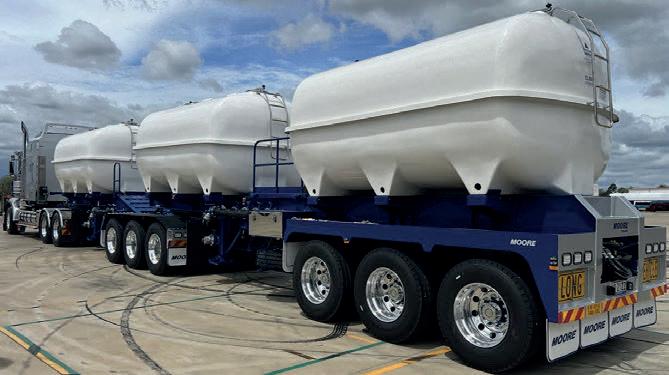





Despite
a “bumpy start”, this
MC driver has found her calling, stepping away from a career in the office to drive triple road trains, hauling 60 tonnes of lead.

 BY DANIELLE GULLACI
BY DANIELLE GULLACI
FOR Gail Ritchie, 49, being out on the road, behind the wheel of a B-triple, is a dream come true – but it’s a dream she had once thought she’d never achieve.
She had tried to make the move into trucking on more than one occasion, but for one reason or another, things didn’t quite work out. So she decided to give it one last shot and is glad she did.
Gail currently works for Qube Logistics, having started the role in August 2023 as a HC driver, and then securing her MC licence shortly after in November.
Driving a V8 Scania R580, which she says is “smooth, comfortable and has all the bells and whistles,” Gail does the three-hour trip from Qube’s Adelaide depot to Port Pirie in South Australia for export, and back again. It’s roughly a 500-kilometre round trip.





Thurs 20 June, 2024

She does that each day Monday to Friday, setting o at 3pm and arriving back in the yard at around 10.30pm. e Scania is shared with another driver named Steve Hayward, who drives the truck during the day – from around 6am until 1pm – before Gail takes over for the afternoon shift. “So the truck is running from 6am until I nish. We work great together, keep things running smoothly and he’s a top bloke too,” said Gail.
Prior to securing her rst stint on the road, Gail had worked in a call centre for vehicle breakdowns for about 10 years, and before that was in nance. It was also during that time that she got her unrestricted HC licence.
“I had also set myself a challenge. When I went for my HC, I went for my unrestricted licence in a Roadranger – it was terrifying and exciting at the same time,” she said. “I thought if I’m going for

my HC, I need to get it in a Roadranger. If I can’t drive that, I shouldn’t be driving!”
Gail left her call centre job in March 2021 and started working as a truck driver that same month, but that driving job lasted about three months.
“I got a job at a training place that took on people who had relatively little experience,” Gail said. “I was doing my Certi cate III in driving operations. But I found they really didn’t provide the training and support I needed.”
ough she did nish that quali cation, along with her Basic Fatigue Management (BFM).
en it was back to the o ce.
ough her con dence was lacking, she knew driving a truck was where she wanted to be. Her husband had made the shift from o ce work to truck driving 15 years prior and she was determined to be able to do the same.
“I always thought I’d love to be able to do that, but even

standing next to a truck with the engine running, for me it was intimidating. I thought this was never going to happen.”
Gail began working in an o ce job at the same company her husband was working at. “I’d see all the road trains coming in and out of the depot and that cemented it for me. Because I had been doing desk jobs for so long, as soon as I got my rst taste of being on the road, I knew that’s what I wanted to do.
“I was in that role for about ve months when I realised I couldn’t stay chained to a desk anymore. I had hoped if I started in the o ce there, they’d be able to give me a go but my con dence was no longer there. ey have all this really nice new and expensive gear and I thought there’s no way they’ll let me into one of those.”
Unfortunately, she was still lacking con dence. Gail’s next role was driving a water

Easter Group, located in Wacol, provides time sensitive road transporting solutions to many companies throughout Queensland, New South Wales, South Australia and Victoria.


We are a family owned business, operating since 1976. We currently have the following positions available: OPERATIONS ALLOCATORS (Brisbane based only)

You will be required to work on a rotating roster including Days-Nights-Weekends
Previous Operations experience preferred.


(Brisbane, Sydney, Melbourne and Adelaide Based)
Come and work for us as we are committed to:
• Training and further education • Your safety
• Maintaining an impressive Fleet
On offer arepermanent full time and roster positions including paid leave entitlements and public holidays. Drivers will need to be available to be scheduled for work falling across the 7 days of the week.
The successful Applicant will:
• Hold a current MC licence (minimum two years) • Have knowledge of the HVNL and Load Restraint • Be professional • Be reliable
To apply for the Operations/Driver positions please contact Operations Manager or by emailing your resume to WORKSHOP MECHANICS & TYRE FITTERS WANTED (Brisbane based only)


To apply for Mechanic positions please forward your resume to Workshop Manager via email to employment@kseaster.com.au


cart within the yard of her next employer. “I did that for a couple of months cruising around the yard and drove the street sweeper around the yard too. en I moved into some of their heavy rigids doing ratchet and strap work and multi drop stu , then went into the semis – but it wasn’t the right place for me.”
From there it was back into an o ce role for the next nine months, “It gave me time to get my head where it needed to be to give it one last go in trucking,” she said.
For Gail, it was Women in Trucking Australia’s (WiTA) Foot in the Door upskill training program that was just what the doctor ordered. She came across a post for the program on Facebook and decided to apply. “Lyndal Denny [WiTA CEO] thought I’d be a good t. She’s been a
massive inspiration and my boss Matt Newman at Qube is wonderful – he’s the one who gave me the job. He’s just been great to me and given me a great opportunity. He’s a very fair boss and he actually listens. He’s been the make or break for me in getting into this industry,” explained Gail, who was able to upskill to her MC in November, which was funded through the program.
“It was a very bumpy start for me to nd that sweet spot of being able to drive on my own and feel totally relaxed. And it took me a long time to get there. I think it took me a little longer than most. A lot of it was me just doubting myself.”
e job itself is much more physical than her previous roles – with the need to use rubber matting and ve tonne straps and ratchets to secure
the three trailers – but Gail has been thriving.
“ is was de nitely the right move. I felt like I took that very last chance. I was determined to do it this time and it’s the best decision I ever made. I didn’t expect to get my MC as quickly as I did,” she said, adding that the role has been even better than she thought it would be.
“I think Qube is a really great place for women to get a start. e women here are all really hard working because they want to prove they can do it – if I can do this, anyone can!
“ e freedom of being out there is the best part of it. You don’t get that sitting at a computer with a headset plugged in. I’ve also met a lot of great people on the road and made some great friends too. It’s great having that comradery out there.”

APPRENTICES and schoolbased trainees are now learning in two new state-of-theart trades workshops at North Regional TAFE’s Pundulmurra campus.
Training and Workforce Development Minister Simone McGurk officially opened the site’s new heavy automotive and mobile plant and fitting and engineering workshops.
The new workshops will help to train local skilled workers in heavy automotive, heavy mobile and fixed plant, and engineering trades to support the resources sector, which is the largest employer in the Pilbara.
Designed by MPS Architects and constructed by Decmil Group, the new trades workshops include classrooms and specialist training areas.
The workshops are also equipped with modern, industry-standard equipment as well as existing equipment relocated from the decommissioned South Hedland annex.
“Qualified tradespeople are in high demand for jobs throughout the Pilbara, particularly in the resources and construction industry, with demand only expected to increase in the coming years as WA transitions to clean energy,” said McGurk.
“The workshops will provide a training hub for the next generation of heavy automotive, heavy mobile and fixed plant, and engineering workers for the region.
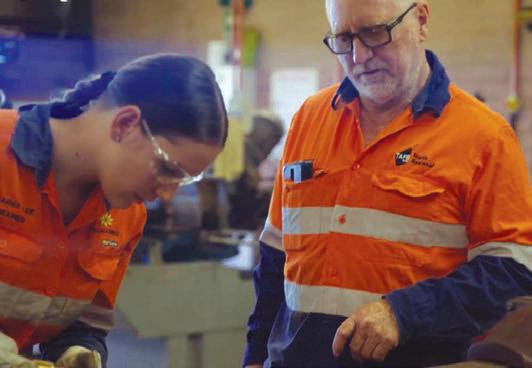
“These new facilities will allow more local people to access hands-on training in modern workshops fitted with the latest industry-relevant equipment –so that they’re ‘job ready’ when they finish their training.”
Pilbara MLA Kevin Michel added, “The new trades facilities at Pundulmurra significantly increase capacity for vocational training in the Pilbara, enabling North Regional TAFE to meet the region’s trade training demands.
“These new facilities will enable people to get the skills they need locally – and go on to a rewarding career right here in the Pilbara.”
The $43.2 million Pundulmurra Trades Expansion project – part of the State Government’s Rebuilding our TAFEs
plan – also includes the construction of a new hospitality training block, due to be completed mid-year.
In addition to the new trades workshops and hospitality block, the campus also has a new $1.1 million horticulture workshop that was completed in 2022, and $4.6 million in upgrades to the light automotive and automotive electrical training facilities, which were completed in 2023.
The Pundulmurra Trades Expansion is a key regional project, which forms part of the largest TAFE capital works program in Western Australia’s history, with the state government investing $243.3 million in upgrades to essential infrastructure at TAFE colleges across the state.

We are a family owned and operated company who carry bulk commodities mainly throughout Queensland and Northern New South Wales.
We are looking to sell our 2018 T659 Kenworth with work towing company trailers. We are willing to provide finance to the operator.
This position would suit an enthusiastic, self-motivated person looking to get into truck ownership.
Our business was established in 1996 and over that time we have built up a large client base over which we can source our work.









LRTAQ YOUNG PERSON IN TRANSPORT AWARD 2024


GRACEMERE LIVESTOCK TRANSPORT

YOU TO ALL FINALISTS








